Forums
- Forums
- Axis And Allies Forum
- General Discussion
- Aviation News
Aviation News
Post a reply
- Go to Next topic
- Go to Welcome
- Go to Introduce Yourself
- Go to General Discussion
- Go to Screenshots, Images and Videos
- Go to Off topic
- Go to Works in Progress
- Go to Skinning Tips / Tutorials
- Go to Skin Requests
- Go to IJAAF Library
- Go to Luftwaffe Library
- Go to RAF Library
- Go to USAAF / USN Library
- Go to Misc Library
- Go to The Ops Room
- Go to Made in Germany
- Go to Campaigns and Missions
- Go to Works in Progress
- Go to Juri's Air-Raid Shelter
- Go to Campaigns and Missions
- Go to Works in Progress
- Go to Skinpacks
- Go to External Projects Discussion
- Go to Books & Resources
-
 Main AdminCrew members of Patrouille de France watch an aerial demonstration at Mather Air Field in Sacramento, California, April 15, 2017. (U.S. Air Force photo/Staff Sgt. Rebeccah Anderson)
Main AdminCrew members of Patrouille de France watch an aerial demonstration at Mather Air Field in Sacramento, California, April 15, 2017. (U.S. Air Force photo/Staff Sgt. Rebeccah Anderson)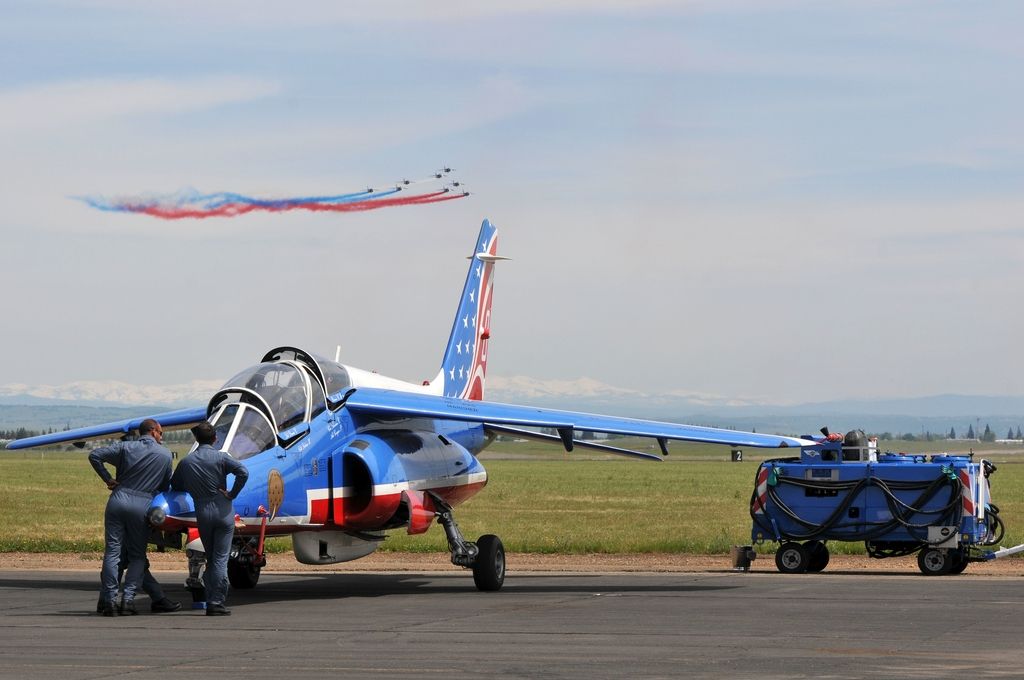
ATLANTIC OCEAN (April 17, 2017) - A chock and chain team from USS Carney (DDG 64) moves away from a Royal Navy HH-65 Dauphin helicopter while being observed by a Royal Navy Flag Officer Sea Training (FOST) facilitator in the Atlantic Ocean April 17, 2017. Carney, an Arleigh Burke-class guided-missile destroyer, forward-deployed to Rota, Spain, is conducting its third patrol in the U.S. 6th Fleet area of operations in support of U.S. national security interests in Europe. (U.S. Navy photo by Mass Communication Specialist 3rd Class Weston Jones/Released)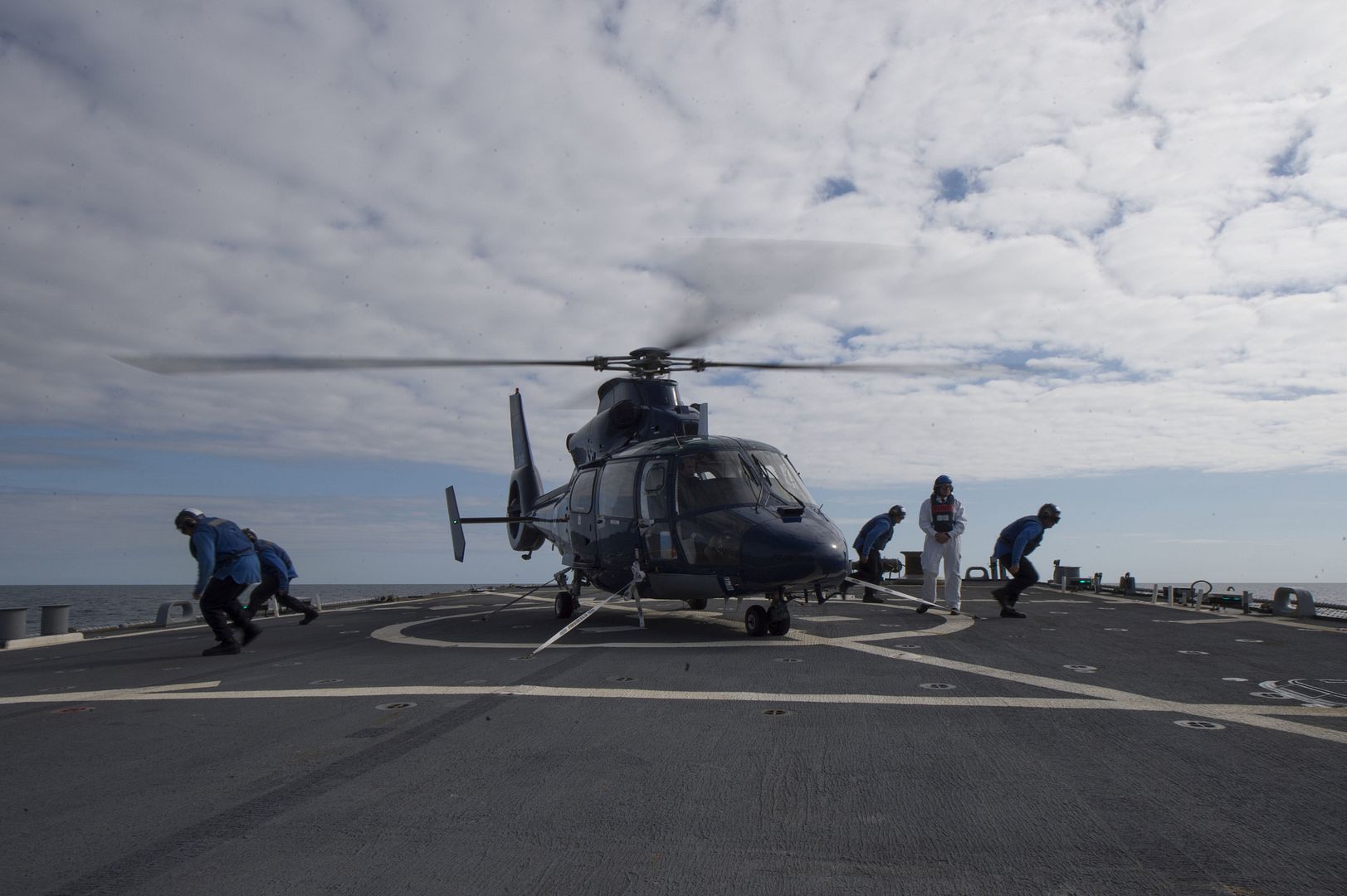
-
7 years agoThu Apr 20 2017, 10:22pm
 Main AdminROYAL AUSTRALIAN AIR FORCE BASE, Darwin ?U.S. Marines with Marine Light Attack Helicopter Squadron 367, Marine Rotational Force Darwin 7.2, offload two AH-1 Cobras, April 19, 2017. The rotational deployment of the U.S. Marines affords an unprecedented combined training opportunity with our Australian allies and improves relations between the forces. (U.S. Marine Corps photo by Lance Cpl. Damion Hatch Jr)
Main AdminROYAL AUSTRALIAN AIR FORCE BASE, Darwin ?U.S. Marines with Marine Light Attack Helicopter Squadron 367, Marine Rotational Force Darwin 7.2, offload two AH-1 Cobras, April 19, 2017. The rotational deployment of the U.S. Marines affords an unprecedented combined training opportunity with our Australian allies and improves relations between the forces. (U.S. Marine Corps photo by Lance Cpl. Damion Hatch Jr)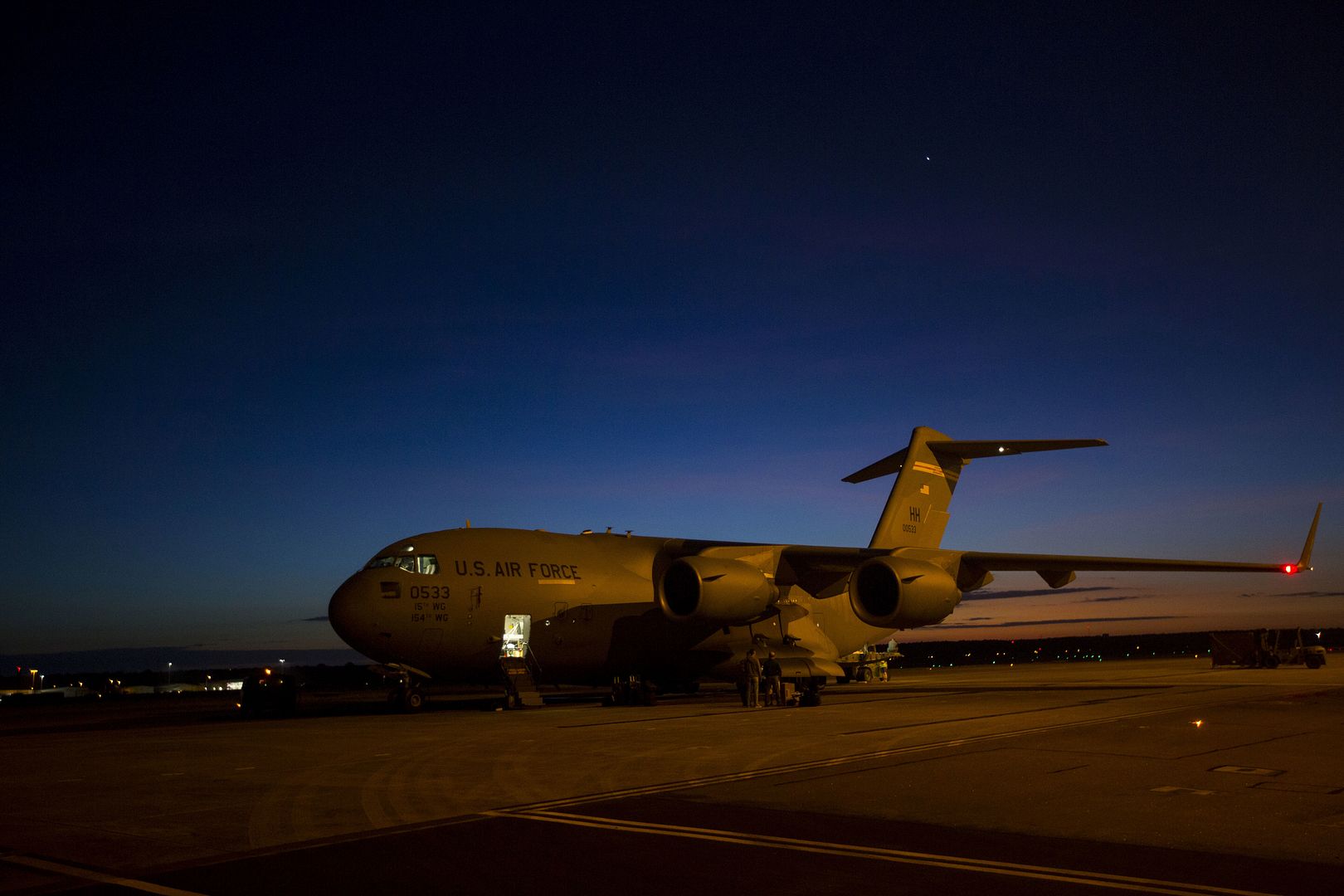
An MV-22 Osprey aircraft with Marine Medium Tiltrotor Squadron (VMM) 268, 1st Marine Aircraft Wing, also known as the "Red Dragons', depart from Marine Corps Base Hawaii to begin their deployment to Australia in support of Marine Rotational Force - Darwin, April 19, 2017. This marks the first transatlantic flight from Hawaii to Australia for the aircraft and the deployment for VMM-268 since the squadron move from MCAS Miramar, Calif., to Hawaii. (U.S. Marine Corps photo by Cpl. Aaron S. Patterson/Released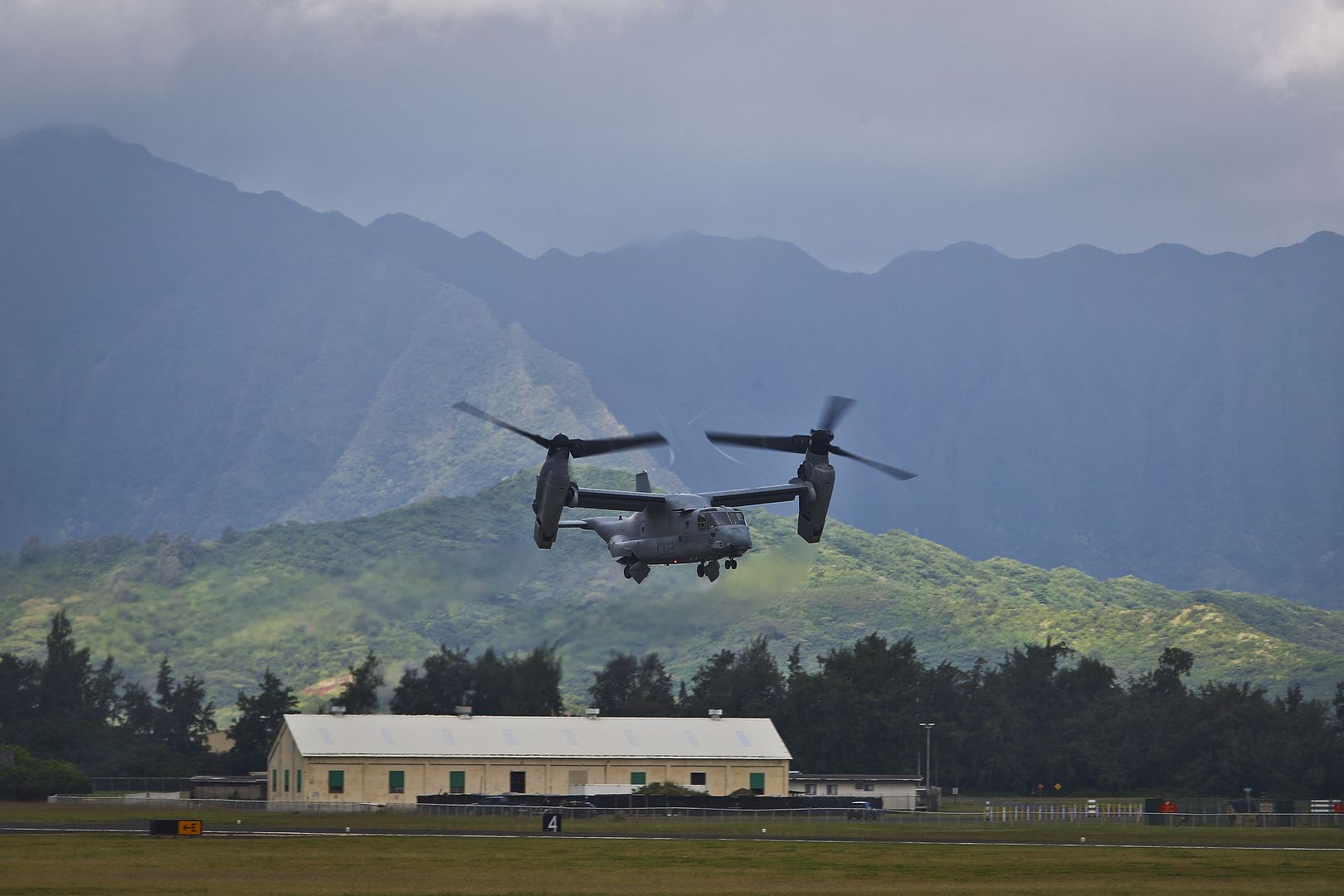
A U.S. Air Force F-35 Lightning II assigned to Eglin Air Force Base, Fla., prepares to land during ATLANTIC TRIDENT 17 at Joint Base Langley-Eustis, Va., April 16, 2017. The goal of the exercise was to enhance interoperability through combined coalition aerial campaigns. (U.S. Air Force photo/Airman 1st Class Tristan Biese)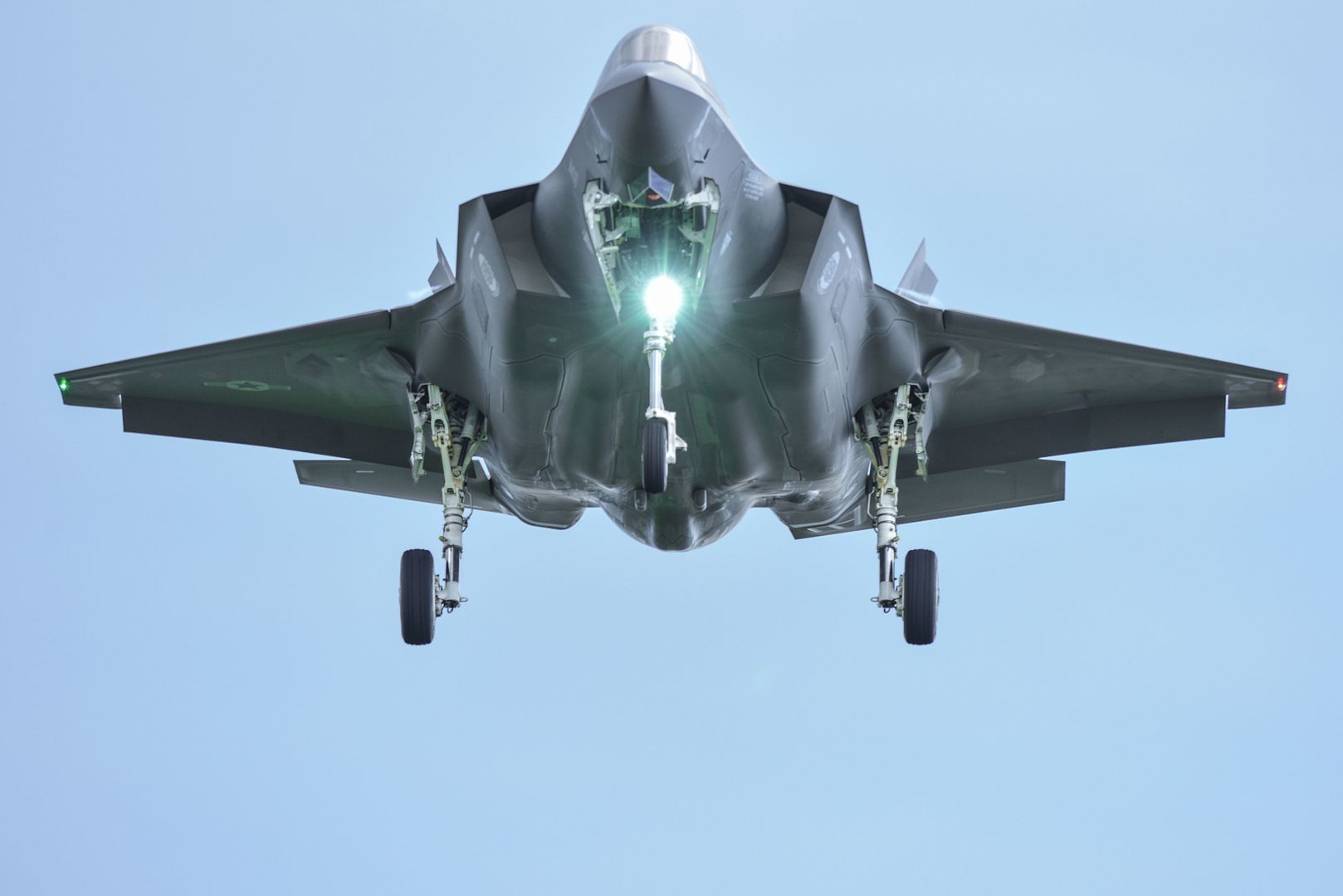
A Royal air force Eurofighter Typhoon taxis on the runway during ATLANTIC TRIDENT 17 at Joint Base Langley-Eustis, Va., April 14, 2017. The RAF participated in the exercise, which focused on operations in a highly contested operational environment through a variety of complex, simulated adversary scenarios. (U.S. Air Force photo/Airman 1st Class Tristan Biese)
A Royal air force Eurofighter Typhoon taxis on the runway during ATLANTIC TRIDENT 17 at Joint Base Langley-Eustis, Va., April 10, 2017. U.S. Air Force Airmen worked with the Royal air force and the French air force during the exercise to enhance interoperability through combined coalition aerial campaigns. (U.S. Air Force photo/Airman 1st Class Tristan Biese)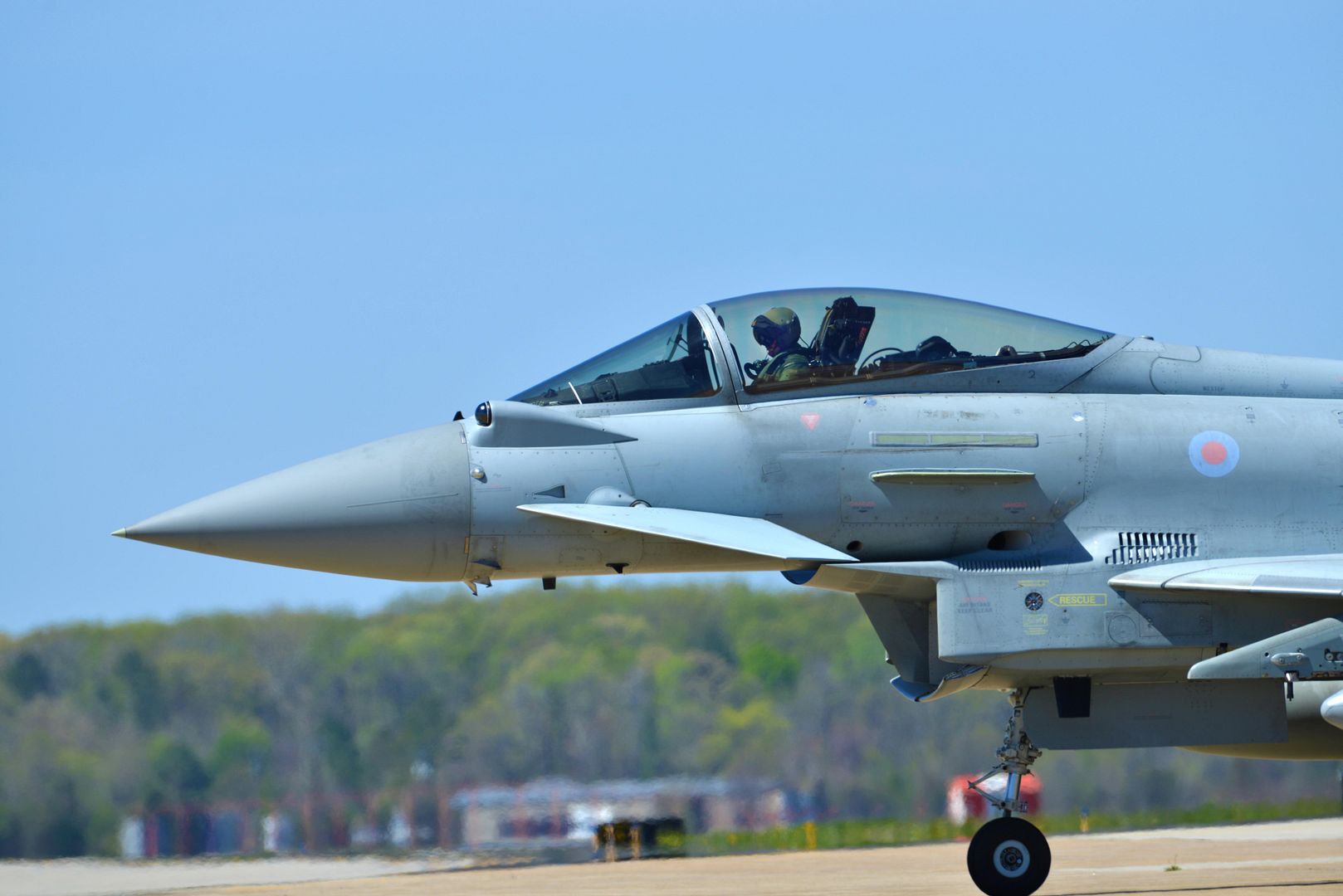
An F-35 Lightning II from the 34th Fighter Squadron at Hill Air Force Base, Utah, launches for a sortie at Royal Air Force Lakenheath, England, April 19, 2017. The fifth generation, multi-role fighter aircraft is deployed here to maximize training opportunities, affirm enduring commitments to NATO allies, and deter any actions that destabilize regional security. (U.S. Air Force photo/Senior Airman Malcolm Mayfield)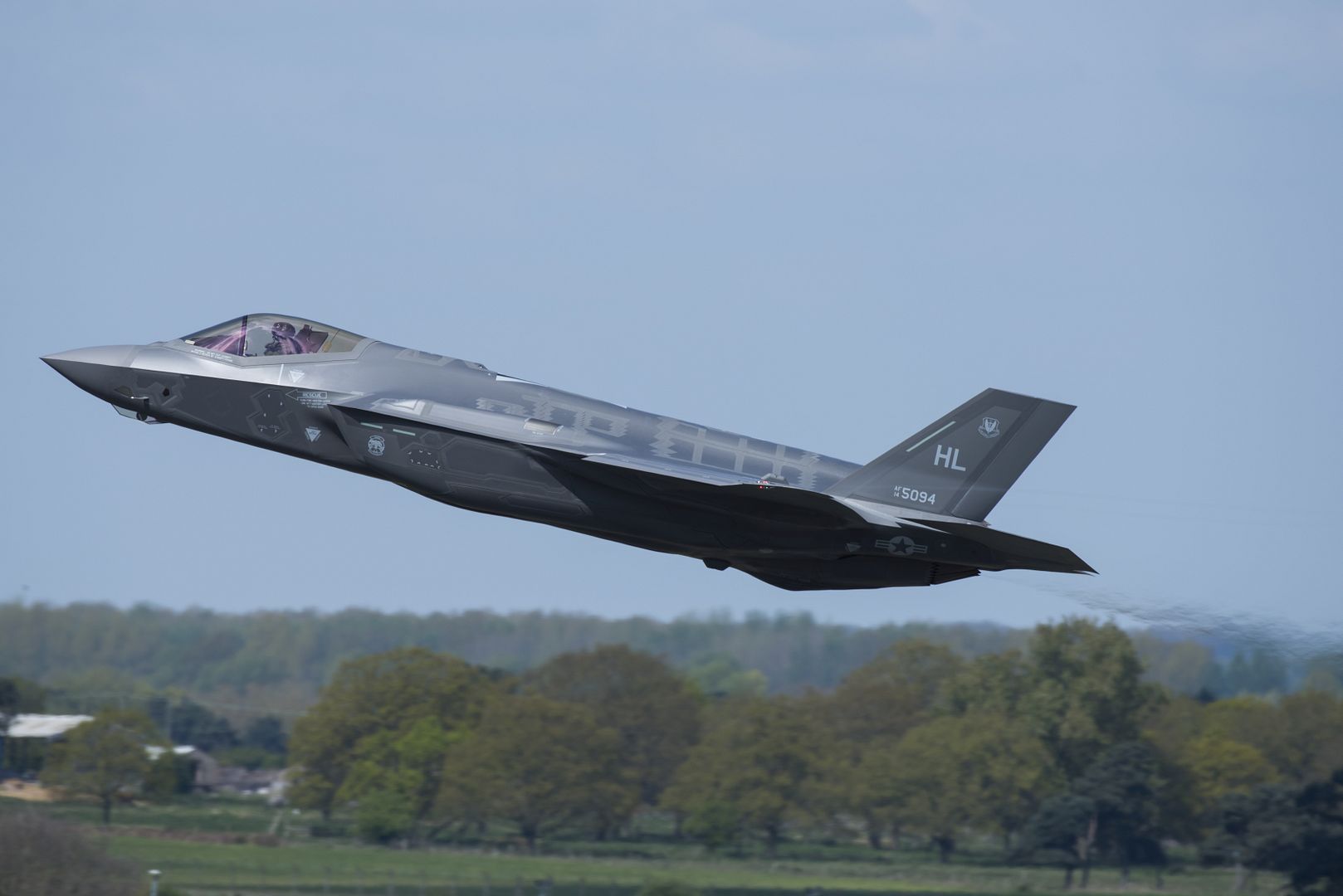
RAF Typhoons of 1 Sqn have joined two other NATO air forces at Langley Air Force Base, Virginia, for one of the world?s biggest air combat exercises.
Exercise Atlantic Trident 17 will be a test of skill, speed and communication for the air and ground crews of the RAF, US Air Force and Arm?e de l?Air, the French Air Force.
The Eurofighter Typhoon, Lockheed Martin F-22 Raptor and Dassault Rafale will be joined by the Lockheed Martin F-35 Lightning.
Working together to defeat ?aggressor? squadrons they will test the world?s most advanced aircraft to the limits.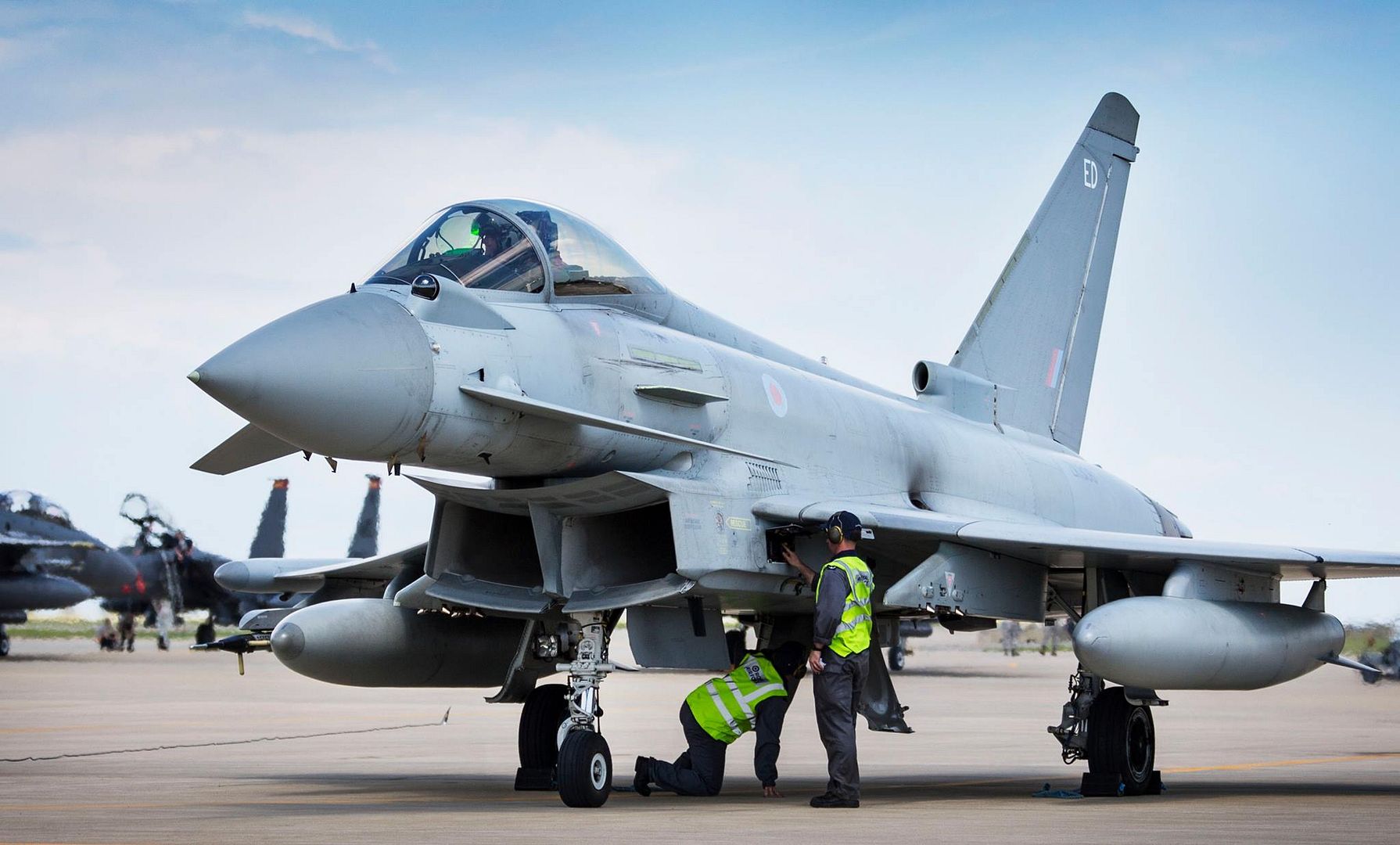
A CH-53E Super Stallion assigned to Marine Heavy Helicopter Squadron (HMH) 466 prepares for take-off during unit section landing drills in part of Weapons and Tactics Instructors course (WTI) 2-17 at LZ Bull, Calif., April 17, 2017. WTI is held biannually at Marine Corps Air Station (MCAS) Yuma, Ariz. to provide students with detailed training to be practiced on the various ranges in Arizona and California. (U.S. Marine Corps photo by Cpl. Trever A. Statz/Released)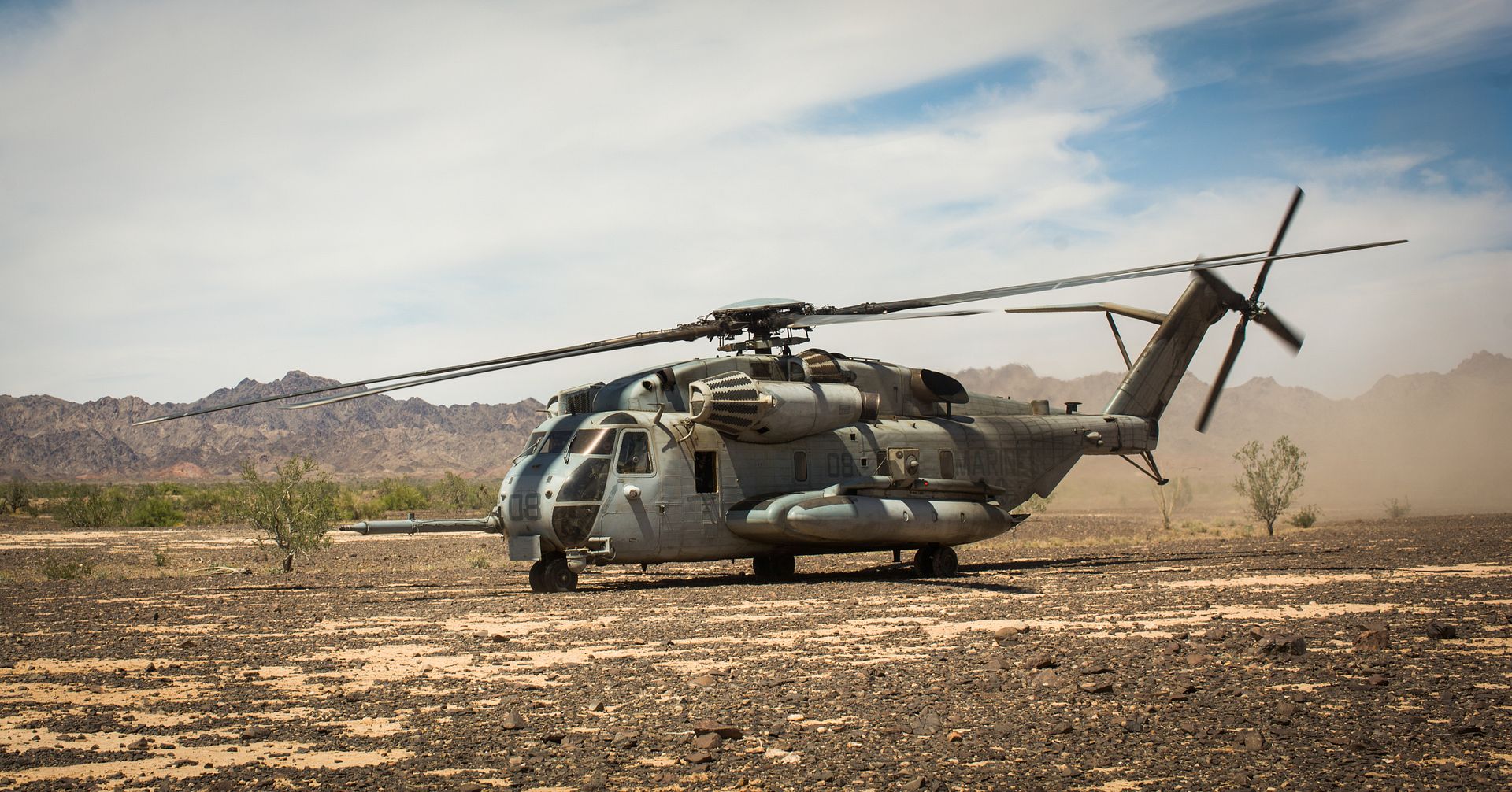
A U.S. Marine Corps F/A-18D Hornet with Marine All-Weather Fighter Attack Squadron (VMFA) 242, lands at Marine Corps Air Station Iwakuni, Japan, April 19, 2017. VMFA(AW)-242?s mission is to support the Marine Air-Ground Task Force commander by providing supporting arms coordination, conducting reconnaissance, and destroying surface targets and enemy aircraft day or night. They train under all-weather conditions for expeditionary, joint or combined operations. (U.S. Marine Corps photo by Lance Cpl. Joseph Abrego)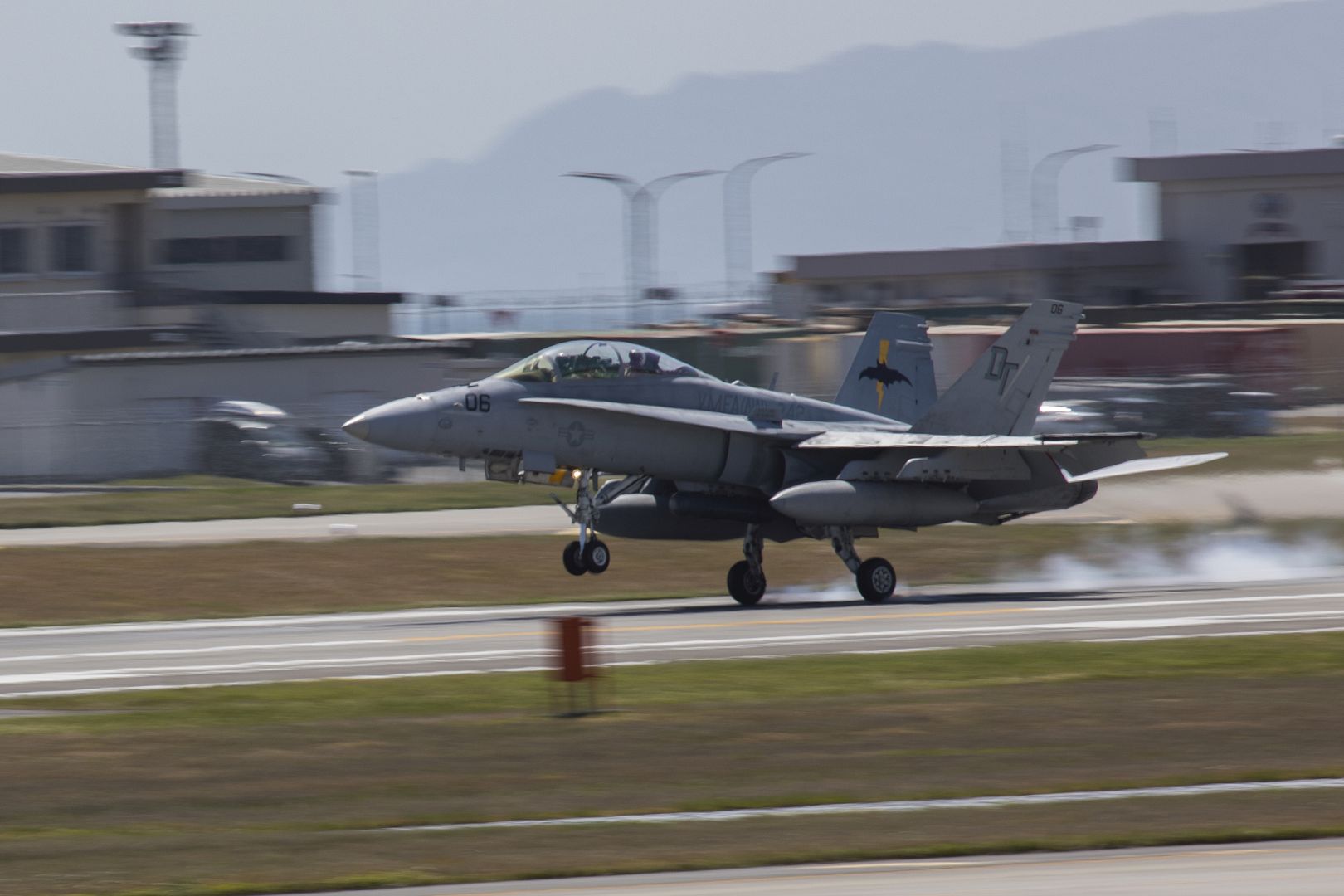
A U.S. Marine Corps F/A-18C Hornet with Marine Fighter Attack Squadron (VMFA) 232 prepares to take off during training flights at Marine Corps Air Station Iwakuni, Japan, April 18, 2017. VMFA-232 conducted flights as part of unit-level training to enhance their operational readiness. The squadron is forward deployed to the air station on a six-month rotation with the Unit Deployment Program to improve operational capabilities by training in the Pacific region. (U.S. Marine Corps photo by Lance Cpl. Joseph Abrego)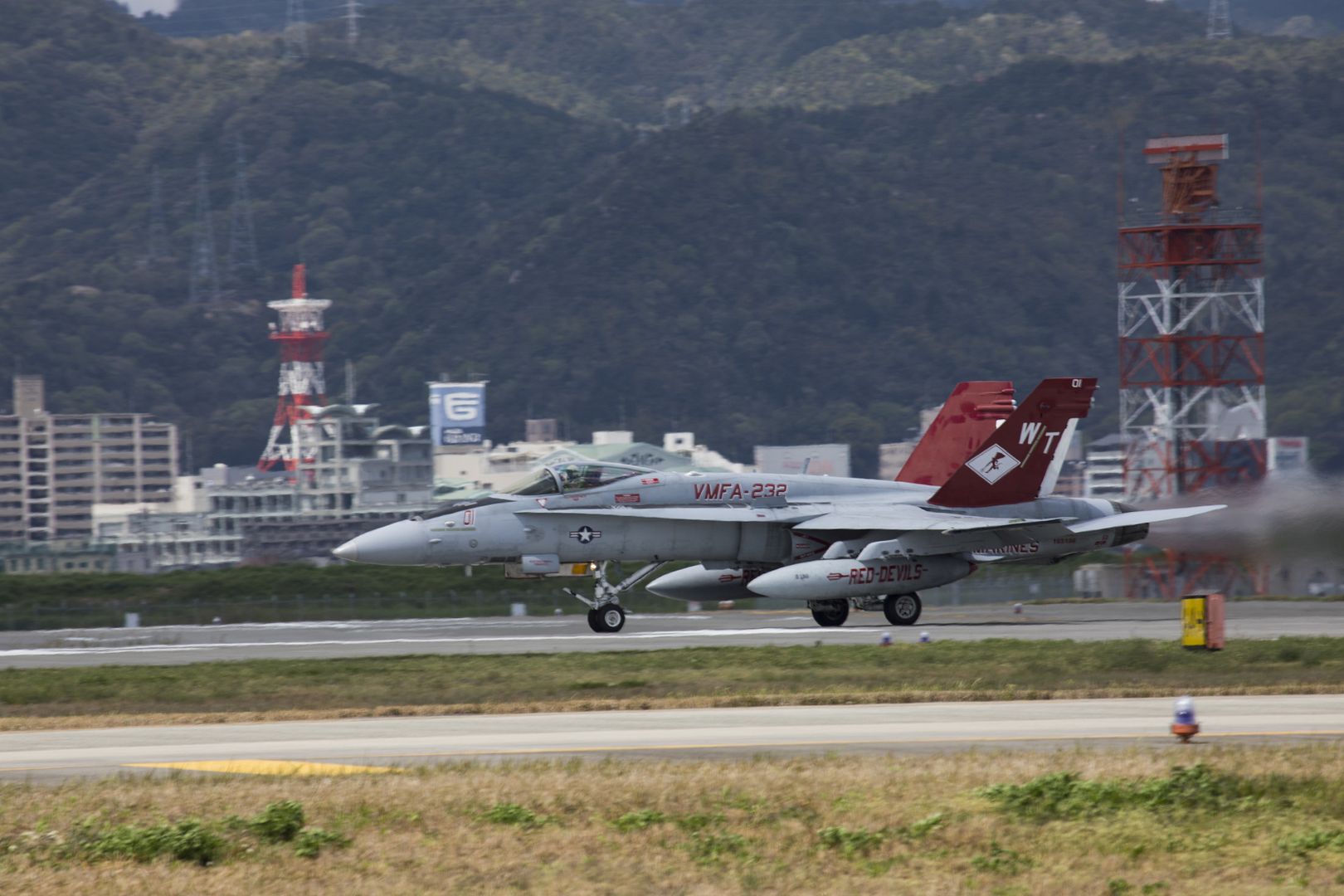
A U.S. Air Force F-15 Eagle assigned to the 44th Fighter Squadron takes off from the runway April 19, 2017, at Kadena Air Base, Japan. More than 10 F-15s from the 44th FS went to support Exercise Vigilant Ace in Guam. (U.S. Air Force photo by Senior Airman Lynette M. Rolen)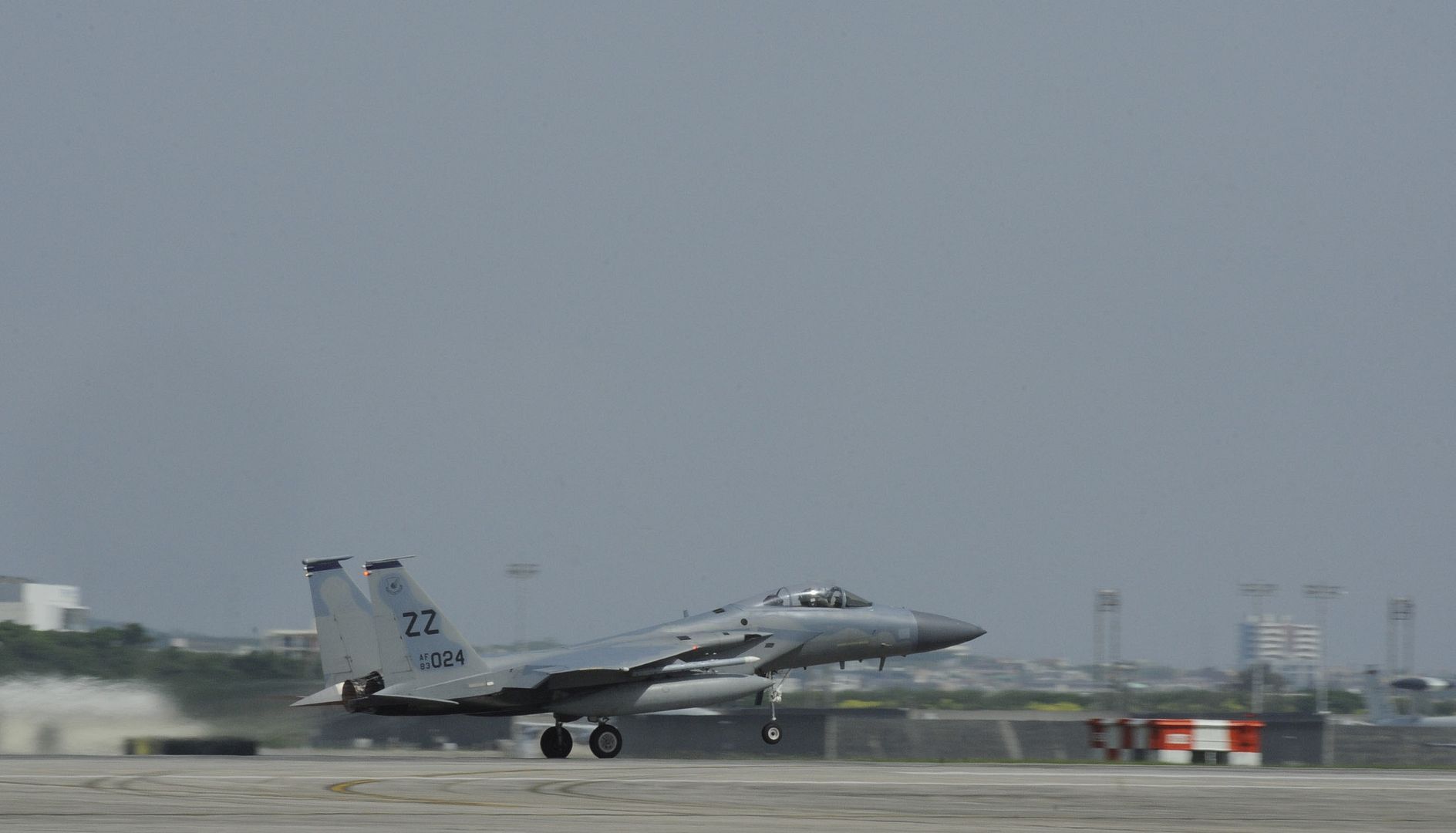
-
 Main AdminA U.S. Air Force F-15E Strike Eagle assigned to Mountain Home Air Force Base, Idaho, lands on the flightline during ATLANTIC TRIDENT 17 at Joint Base Langley-Eustis, Va., April 14, 2017. The F-15E and T-38 Talon pilots acted as adversaries during combat training missions where they have the upper-hand, creating barriers that limit U.S. and allied efforts. (U.S. Air Force photo/Airman 1st Class Anthony Nin Leclerec)
Main AdminA U.S. Air Force F-15E Strike Eagle assigned to Mountain Home Air Force Base, Idaho, lands on the flightline during ATLANTIC TRIDENT 17 at Joint Base Langley-Eustis, Va., April 14, 2017. The F-15E and T-38 Talon pilots acted as adversaries during combat training missions where they have the upper-hand, creating barriers that limit U.S. and allied efforts. (U.S. Air Force photo/Airman 1st Class Anthony Nin Leclerec)
A U.S. Air Force F-15E Strike Eagle assigned to Mountain Home Air Force Base, Idaho, taxis on the runway during ATLANTIC TRIDENT 17 at Joint Base Langley-Eustis, Va., April 14, 2017. The exercise honors the pilots assigned to the 27th and 94th Pursuit Squadron who flew alongside Royal air force and French air force allies for the first time 100 years ago. (U.S. Air Force photo/Airman 1st Class Anthony Nin Leclerec)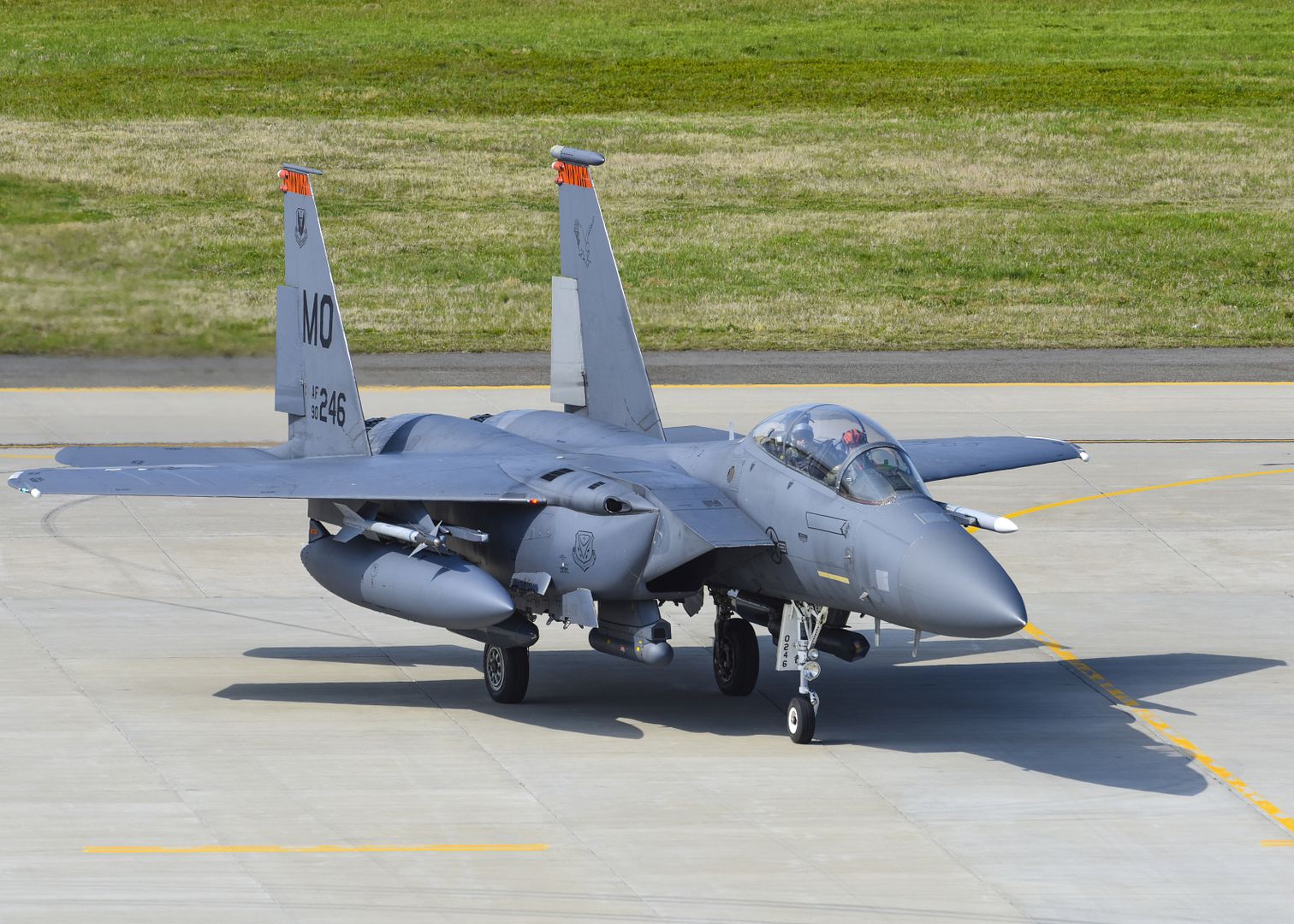
A Royal air force Eurofighter Typhoon, taxis on the runway during ATLANTIC TRIDENT 17 at Joint Base Langley-Eustis April 10, 2017. The exercise was designed to encourage sharing tactics, techniques and procedures with French air force and RAF partners against a range of potential threats, while leveraging U.S. Air Force fifth-generation capabilities. (U.S. Air Force photo/Airman 1st Class Anthony Nin Leclerec)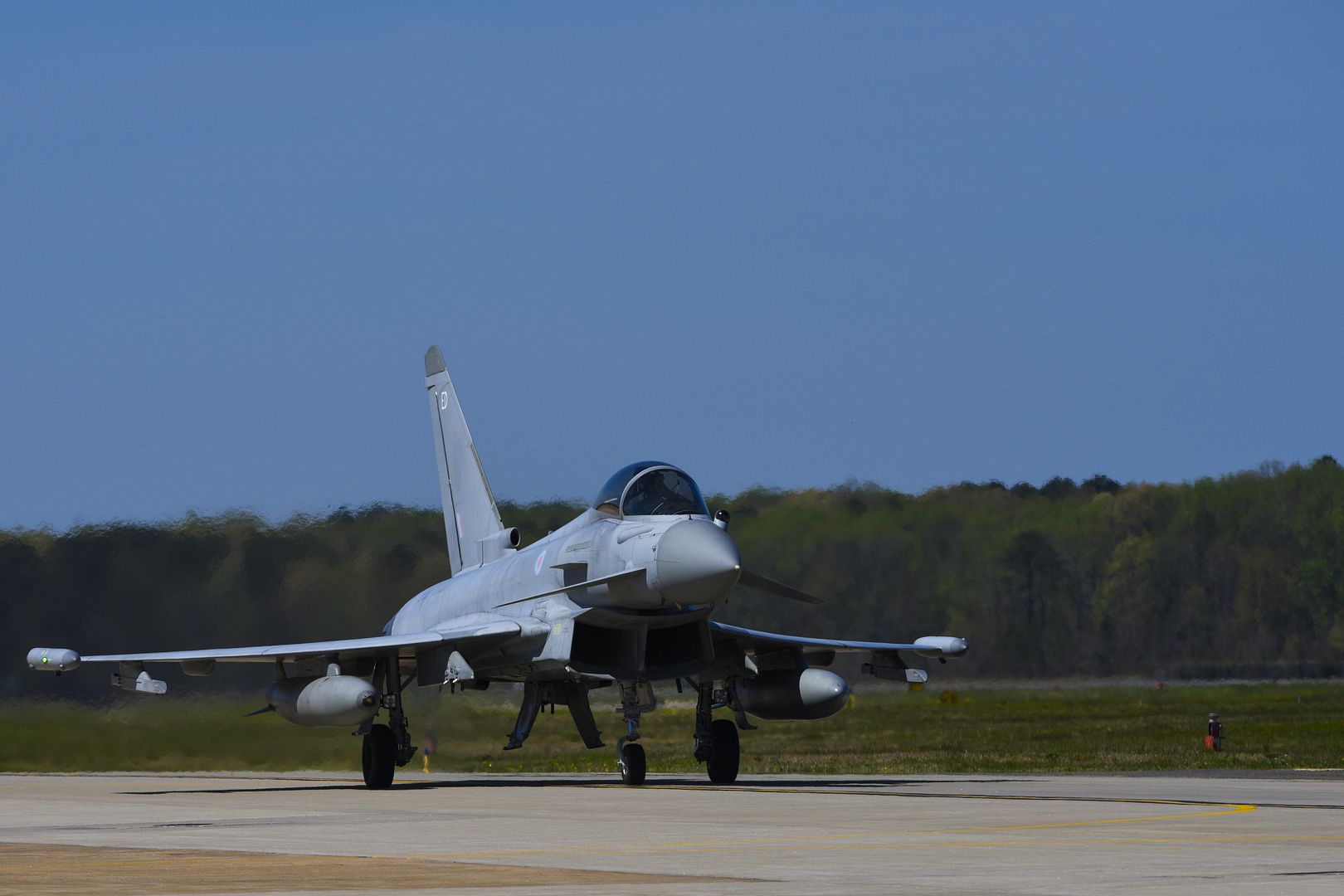
A U.S. Air Force F-22 Raptor, flies during ATLANTIC TRIDENT 17 at Joint Base Langley-Eustis, Va., April 17, 2017. The F-22, which is capable of receiving information from a multitude of airborne and ground based platforms, directs other assets to aid in mission success or away from potential threats. (U.S. Air Force photo/Airman 1st Class Anthony Nin Leclerec)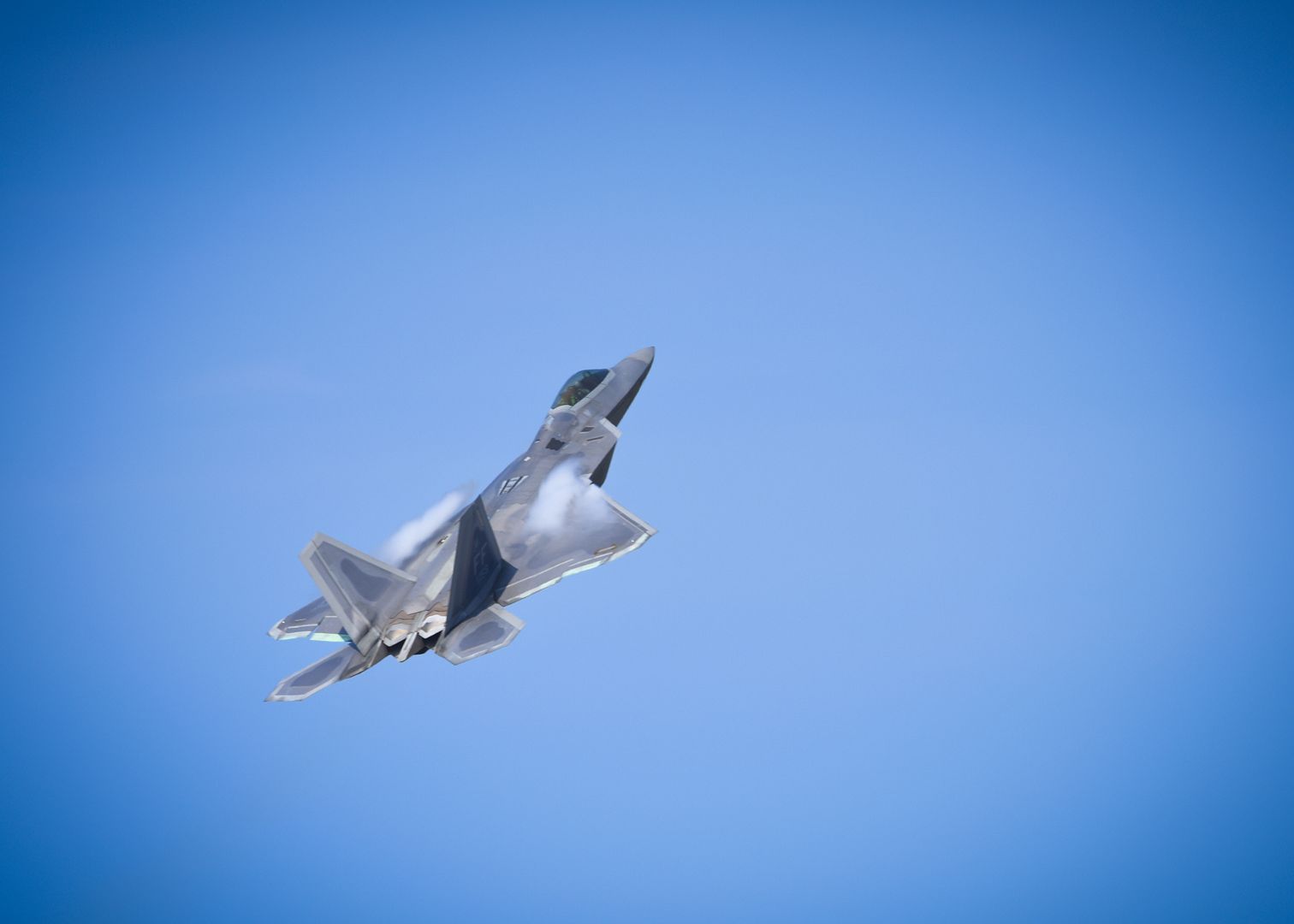
A U.S. Air Force F-35A Lightning II, assigned to Eglin Air Force Base, Fla., lands on the flightline during ATLANTIC TRIDENT 17 at Joint Base Langley-Eustis, Va., April 17, 2017. Adding the F-35A to the training increased capabilities and added another technologically advanced fighter to the allied airpower capability. (U.S. Air Force photo/Airman 1st Class Anthony Nin Leclerec)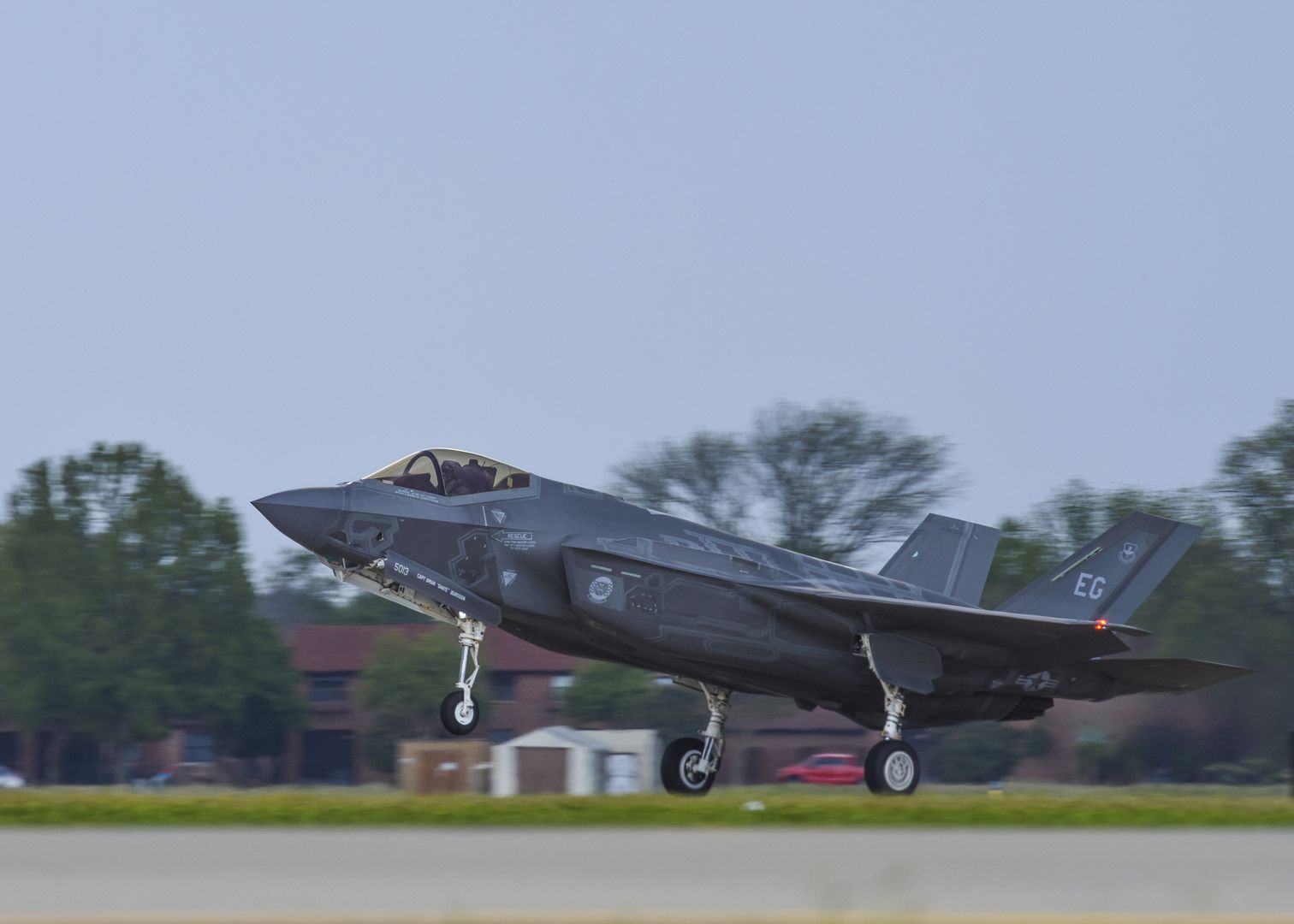
04.19.2017
Photo by Tech. Sgt. Emerson Marcus
A California Air National Guard C-130 aircraft flies by a Nevada Air National Guard C-130 during this week's Modular Airborne Fire Fighting System training and certification. More than 400 personnel of four C-130 Guard and Reserve units ? from California, Colorado, Nevada and Wyoming, making up the Air Expeditionary Group ? are in Boise, Idaho for the week-long wildfire training and certification sponsored by the U.S. Forest Service.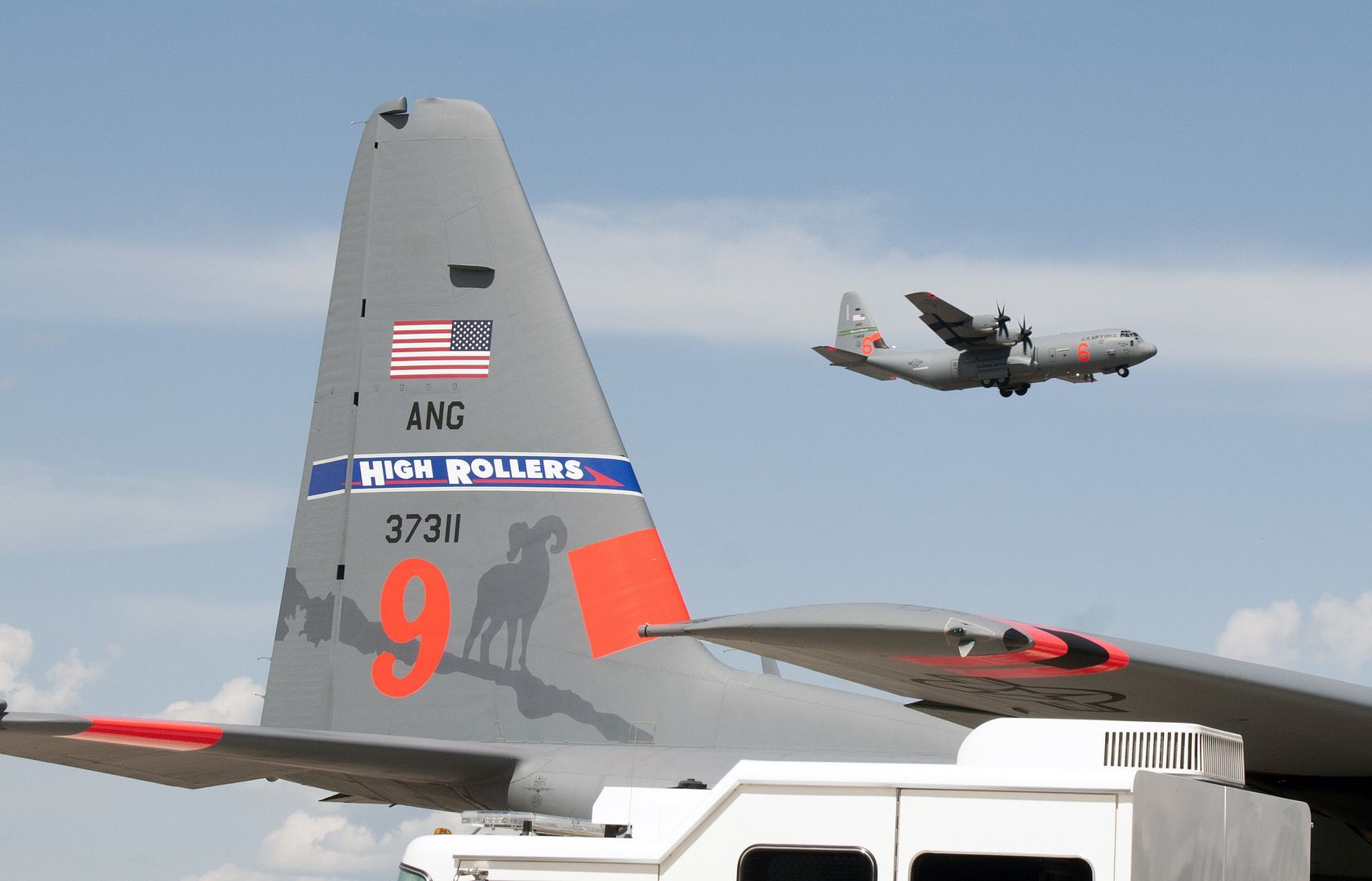
A U.S. Air Force T-38 Talon assigned to the 1st Fighter Wing at Joint Base Langley-Eustis, Va., acts as an agressor aircraft during a training fight during ATLANTIC TRIDENT 17, April 20, 2017. ATLANTIC TRIDENT 17 is an exercise that focuses on leveraging fifth-generation fighter capabilities with partnering nations, including the United Kingdom and France. (U.S. Air Force photo/Staff Sgt. Natasha Stannard)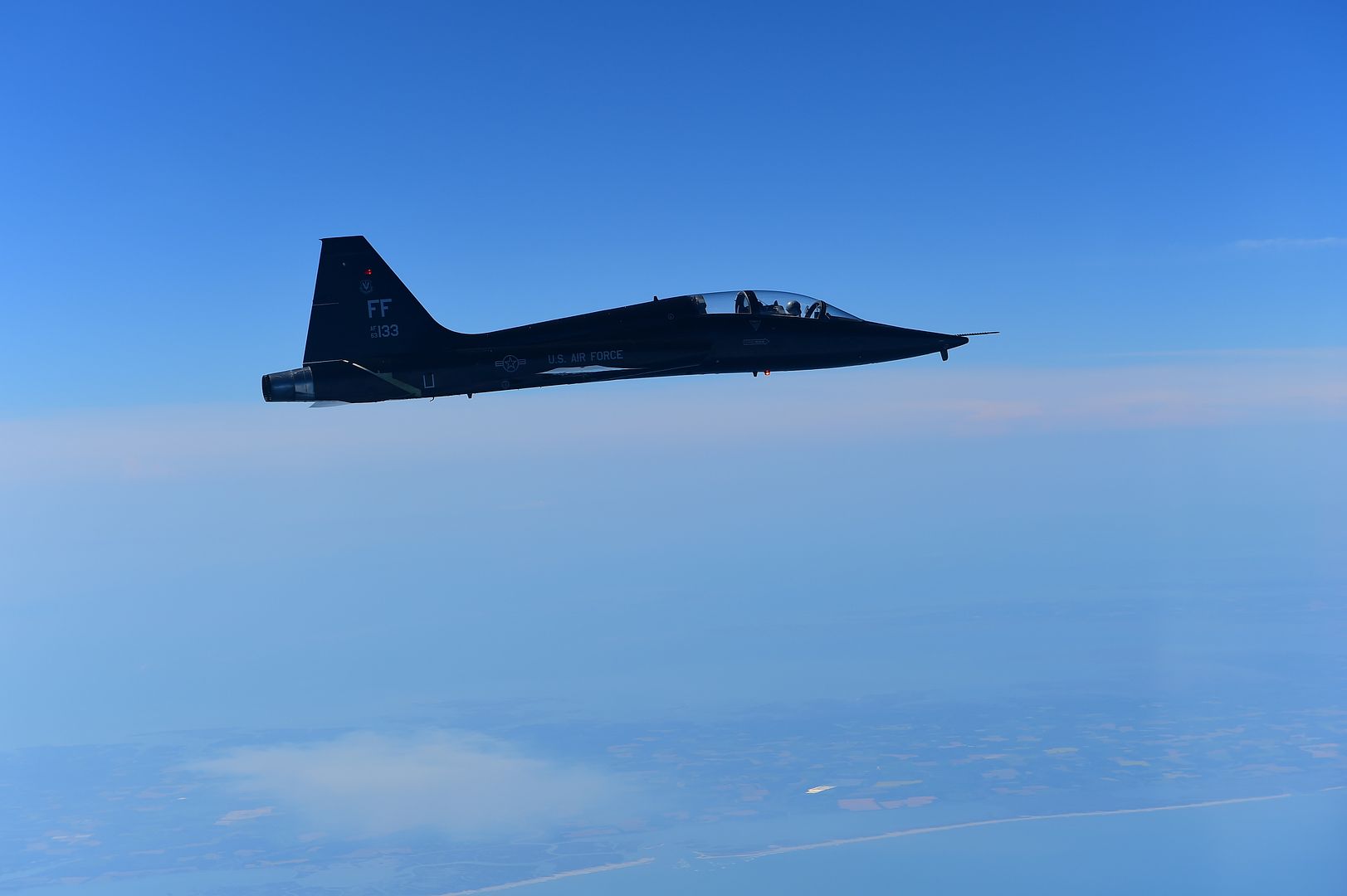
The Patrouille de France lands at Scott Air Force Base, Illinois to refuel before moving on to their next Air Show April 20, 2017. The Patrouille de France is the French equivalent of the Blue Angels or Thunderbirds, and performs precision formation aerobatics using Dassault/Dornier Alpha Jets. Their aircraft will sport special paint schemes during the 2017 season to commemorate their tour, which coincides with the 100th anniversary of America?s entry into World War I. (U.S. Air Force photo/Senior Airman Tristin English)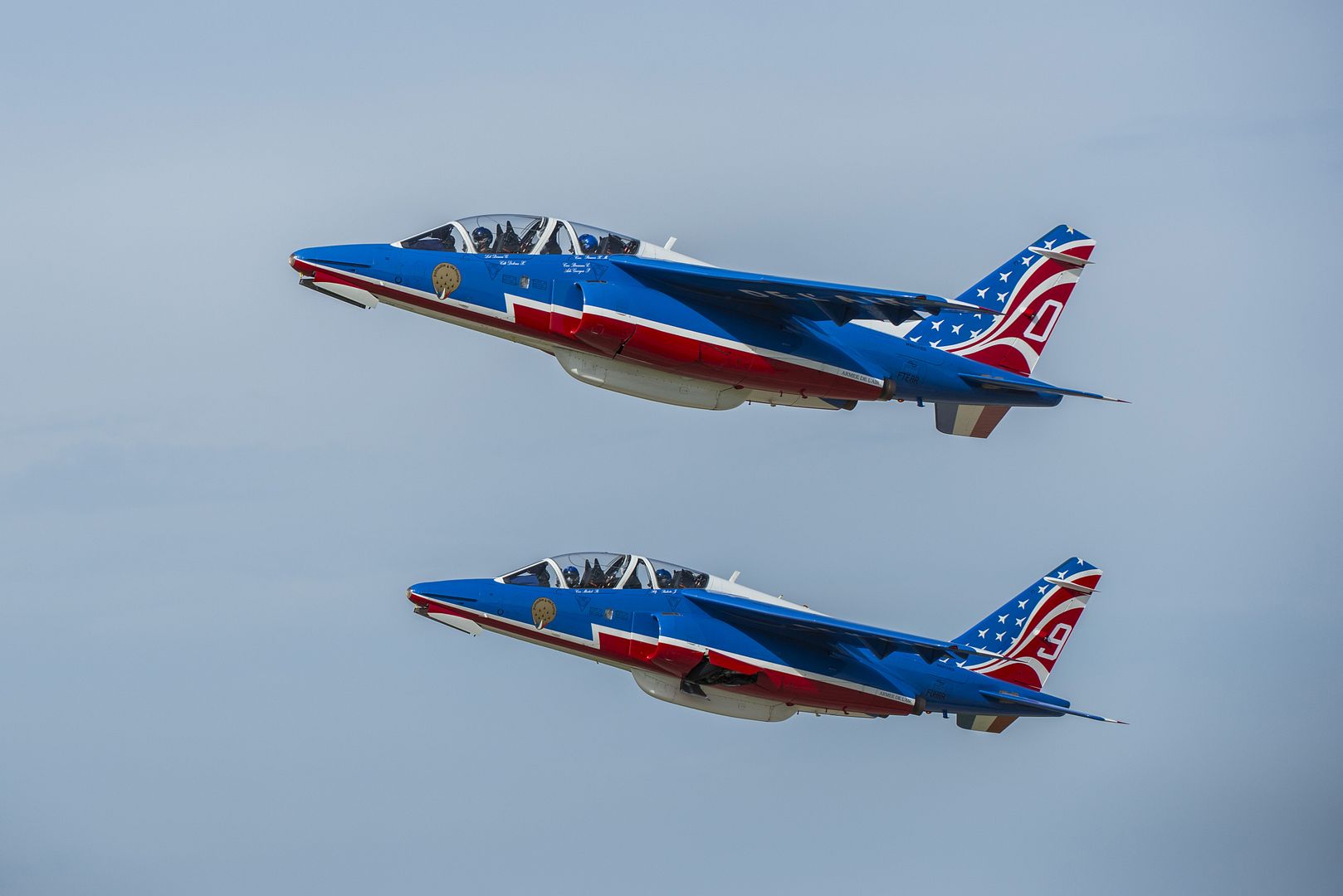
EDWARDS AIR FORCE BASE, Calif. --
The F-35 Integrated Test Force recently performed another first-of-its-kind test when the aircraft released a laser-guided bomb against a moving target.
An F-35C being tested here released specially built GBU-12 Paveway II guided bomb over a controlled range at Naval Air Weapons Station China Lake in the California desert, successfully engaging a small pickup truck March 29.
According to engineer Collin O?Fallon of the 775th Flight Test Squadron, this F-35 weapons delivery accuracy test was the first from an F-35 in the 3F software configuration, which has incorporated new release logic to enhance effectiveness against moving targets, with the objective of reducing pilot workload. O?Fallon is matrixed to the 461st Flight Test Squadron ?Deadly Jesters? for the testing.
?This logic is called Lead Point Compute, which in essence, delays the release point of the weapon to ensure the weapon has the available kinematics to guide to and reach the target at its future location,? O?Fallon said.
The system evaluates the speed and direction of the target against the altitude and speed of the aircraft to determine the exact release.
?The higher and faster you go, the farther you can sling the thing,? he said.
The GBU-12 is a proven weapon with many years of service on multiple platforms. So these tests are designed to stress the weapon platform -- the aircraft ? rather than the weapon itself. For testing, the GBU-12 was built up using an explosively inert warhead, and the fuze was replaced with an inertial measurement unit to measure accelerations during employment, according to O?Fallon.
?This was really a test of the aircraft targeting system and associated weaponeering logic, and the results of this test will be used to certify this capability with a GBU-12 on the F-35.
The weaponeering logic is all the information compiled to give the pilot that one solution.
?(The pilot) doesn?t have to think about how fast the target?s going, or what direction,? O?Fallon said. ?By him using this 3F capability, it?s doing all the weaponeering for him. That?s really the big thing, it?s a single-seat fighter. He?s got to do it all, so we want to do as much for him as we can.?
Although the GBU-12 was inert, it still made short work of its intended target, a small pickup truck.
O?Fallon said the decision was that the target vehicle would be towed on a 60-foot trailer by an existing remote controlled tow vehicle in the interest of saving time and money. The tow vehicle was not controlled in real time, but rather the route was recorded via GPS and the controlling computer drove this route maintaining a sterile exclusion zone.
?It?s pretty cool. The guy gets in, hits the record button. He drives the route we want. Then he hits save and the vehicle will reset itself to its initial start point,? said O'Fallon.
The whole point of the autonomous tow vehicle was safety, making sure nobody?s in the hazard zone.
?Nobody has to be in there making last-minute adjustments,? O?Fallon said.
According to O?Fallon, the data collected from this test will certify this weapon capability and enhance the lethality of the F-35.
"This test is also the first developmental test release of a guided GBU-12 from the F-35C model."
Developmental testing here has now performed a GBU-12 release from every F-35 variant.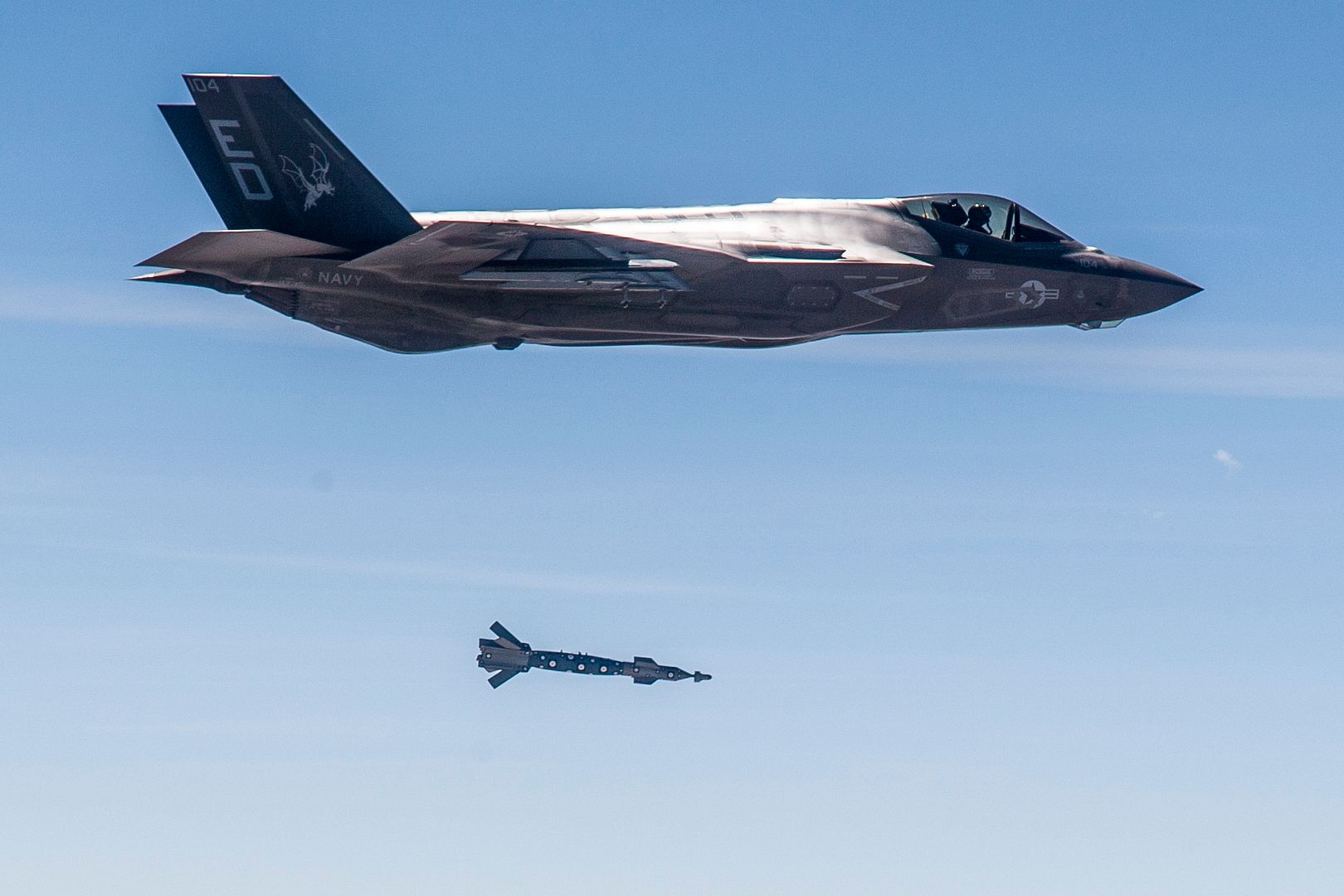
20 April 2017 Press Release
Airbus has delivered the first-ever A321neo. The latest generation aircraft powered by CFM International?s LEAP-1A engines was handed over to U.S. airline Virgin America, an all-Airbus operator, at a ceremony in Hamburg, Germany.
?After Virgin America having been the first customer signing for the A320neo back in December 2010, we are today delighted to deliver the first A321neo to them,? said Fabrice Br?gier, Airbus Chief Operating Officer and President Commercial Aircraft. ?With our largest, latest, most fuel efficient NEO Single Aisle aircraft we are turning a new page. The new A321neo powered by next generation CFM LEAP-1A engines guarantees new levels of efficiency and longer range to its operators, greater comfort to the flying public and less emissions and noise to the airport communities. Thanks to its cutting edge technologies it is today the most eco-sensitive Single Aisle aircraft available.?
The A320neo significantly reduces noise levels, generating only half the noise footprint compared to previous generation aircraft. Equipped with fuel-saving Sharklet wingtip devices nitrous oxide emissions are 50 percent below regulatory requirements as outlined by the Committee on Aviation Environmental Protection (CAEP). In addition, the aircraft with LEAP-1A engines is proven to deliver at least a 15 percent fuel savings compared to Virgin America?s current generation aircraft, which is equivalent to cutting 5,000 tons of carbon dioxide emissions with each plane every year.
?We have been with Virgin America from the beginning and we are excited to launch this new chapter in that relationship,? said Gael Meheust, President and CEO of CFM International. ?The LEAP-1A has done extremely well in its first months of commercial service. It is proving unprecedented levels of fuel efficiency and environmental responsibility while maintaining the level of reliability Virgin America has come to expect from CFM. We think they will be very pleased with all this engine has to offer.?
The A321neo is the largest member of the A320neo Family. It covers the entire market, from high density to long-range thin routes. There are currently over 1,300 units on order.
?We are honored to be the first operator of this high in-demand aircraft,? said Virgin America President Peter Hunt, speaking at the ceremony attended by Virgin America teammates, Executives from Airbus, CFM and the aircraft lessor GECAS. ?The new A321neo ? the third member of the Airbus A320 Family to join our Virgin America fleet ? will allow us to further reduce our unit costs and enable us to further reduce our carbon emissions.?
?Increased operational efficiency, productivity, and state-of-the-art technology -- this winning combination makes the A321neo an attractive investment for leasing companies like GECAS who are committed to meeting customers? operational needs while providing the latest technology and a solid return on investment,? said Alec Burger, President and CEO at GECAS. ?The low operating costs and reliability of the LEAP powered A320neo Family make it a strong asset in GECAS? portfolio.?
Virgin America currently operates a fleet of 63 Airbus A320 family aircraft comprised of A319ceo and A320ceo aircraft powered by CFM?s CFM56-5B engines.
The new A321neo will become the largest aircraft in Virgin America?s fleet, featuring 185 seats - a 24 percent higher capacity at same comfort levels than its current A320s. Inside the cabin, Virgin America flyers will continue to enjoy three custom-designed classes of service, touch-screen personal entertainment and an on-demand food and cocktail menu on every flight in addition to power outlets at every seat. The aircraft is expected to enter service on May 31, 2017 with its inaugural flight from San Francisco International Airport (SFO) to Ronald Reagan Washington National Airport (DCA).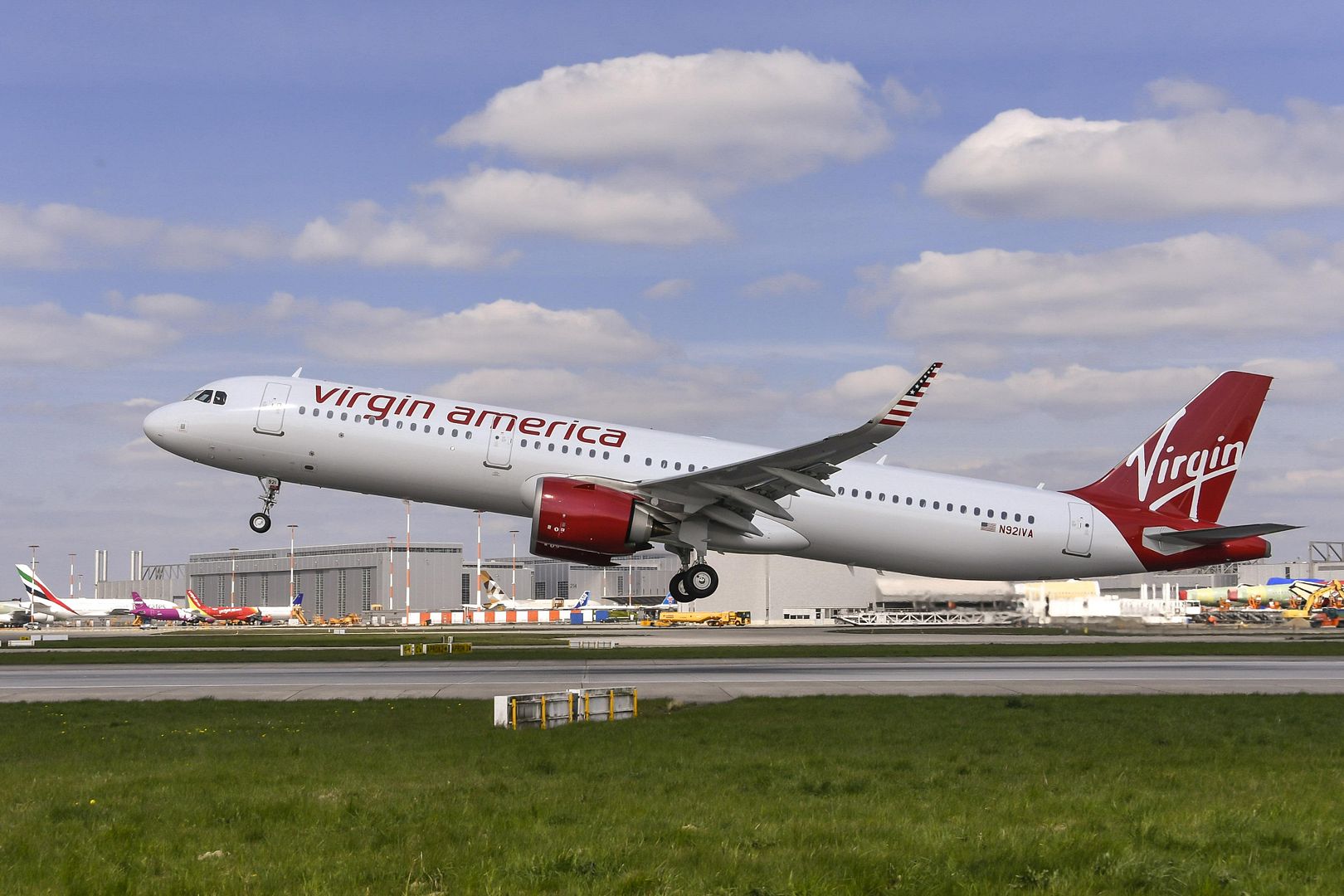
As first announced in April 2016, Virgin America was acquired by Alaska Air Group in December 2016.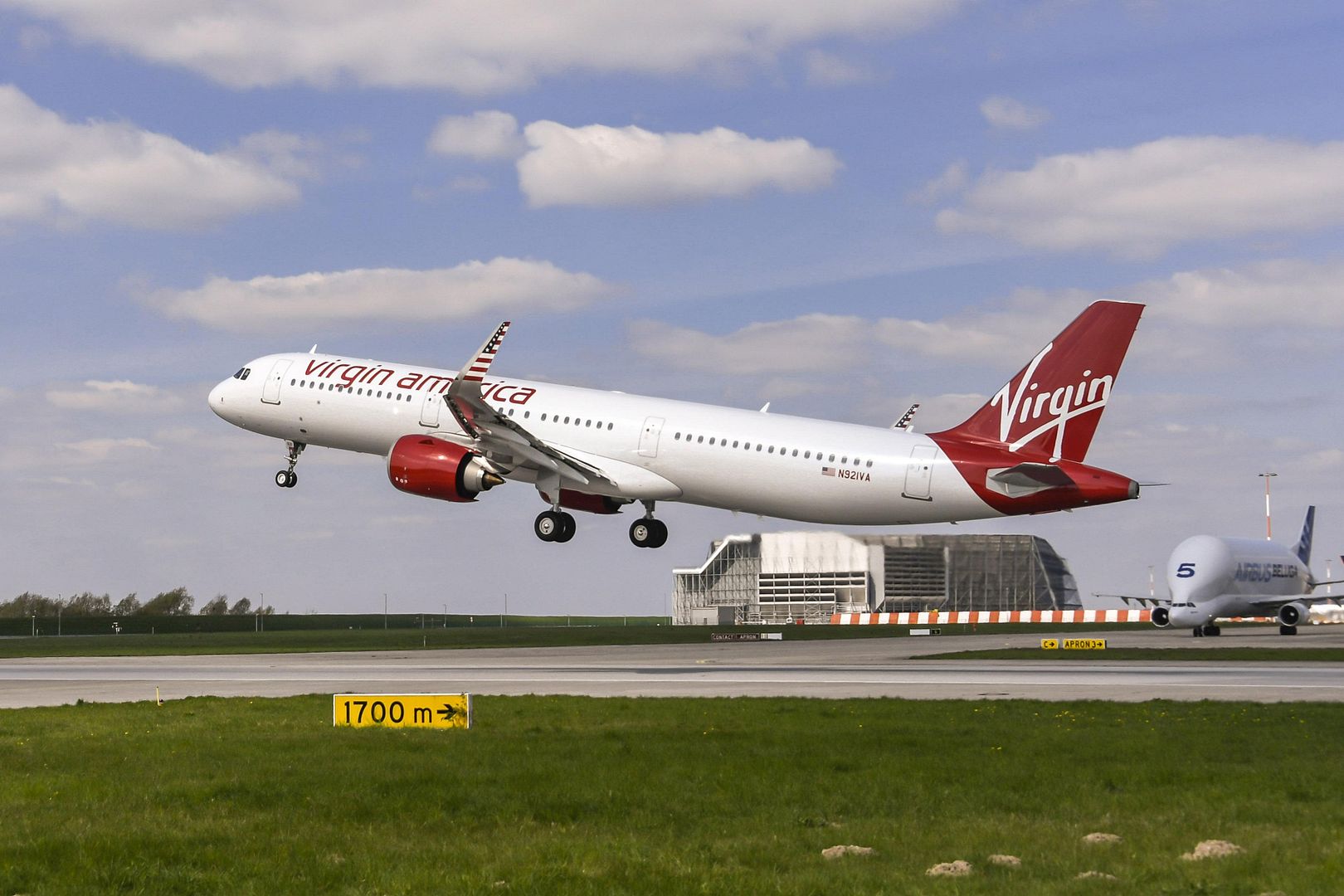
-
 Main AdminA U.S. Air Force F-15E Strike Eagle assigned to Mountain Home Air Force Base, Idaho, takes off for ATLANTIC TRIDENT 17 at Joint Base Langley-Eustis, Va., April 20, 2017. The exercise aims to allow sharing and development of techniques, tactics and procedures between U.S. Air Force, French air force, and Royal air force frontline fighters in order to fly, fight and win in modern highly-contested environments. (U.S. Air Force Photo/Airman 1st Class Tristan Biese)
Main AdminA U.S. Air Force F-15E Strike Eagle assigned to Mountain Home Air Force Base, Idaho, takes off for ATLANTIC TRIDENT 17 at Joint Base Langley-Eustis, Va., April 20, 2017. The exercise aims to allow sharing and development of techniques, tactics and procedures between U.S. Air Force, French air force, and Royal air force frontline fighters in order to fly, fight and win in modern highly-contested environments. (U.S. Air Force Photo/Airman 1st Class Tristan Biese)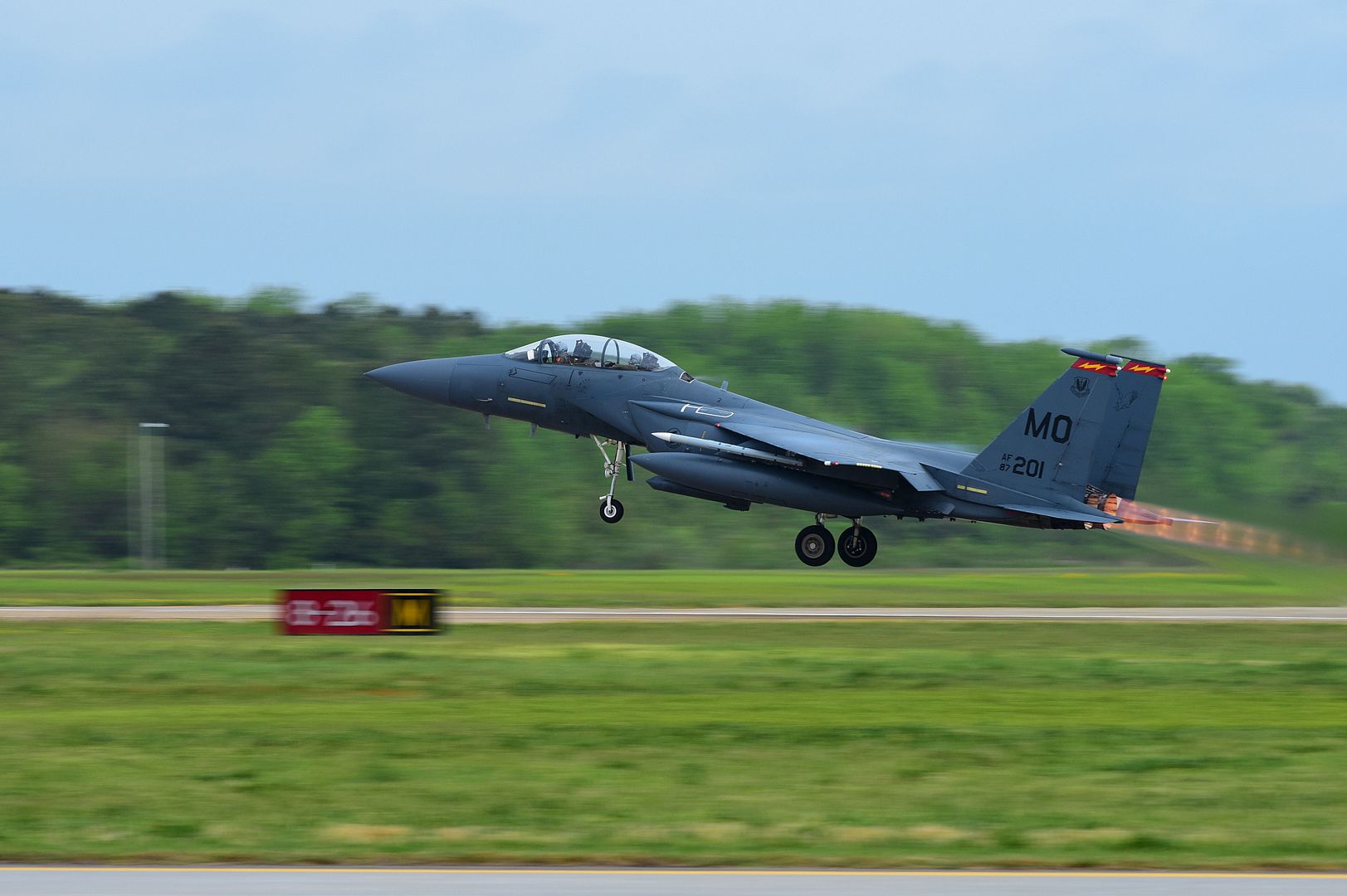
French air force Patrouille de France aircraft perform during the ATLANTIC TRIDENT 17 World War I Remembrance Day at Joint Base Langley-Eustis, Va., April 21, 2017. The group performed at the end of the second week of the exercise, which is intended to share and develop training, tactics and procedures. (U.S. Air Force photo/Senior Airman Kimberly Nagle)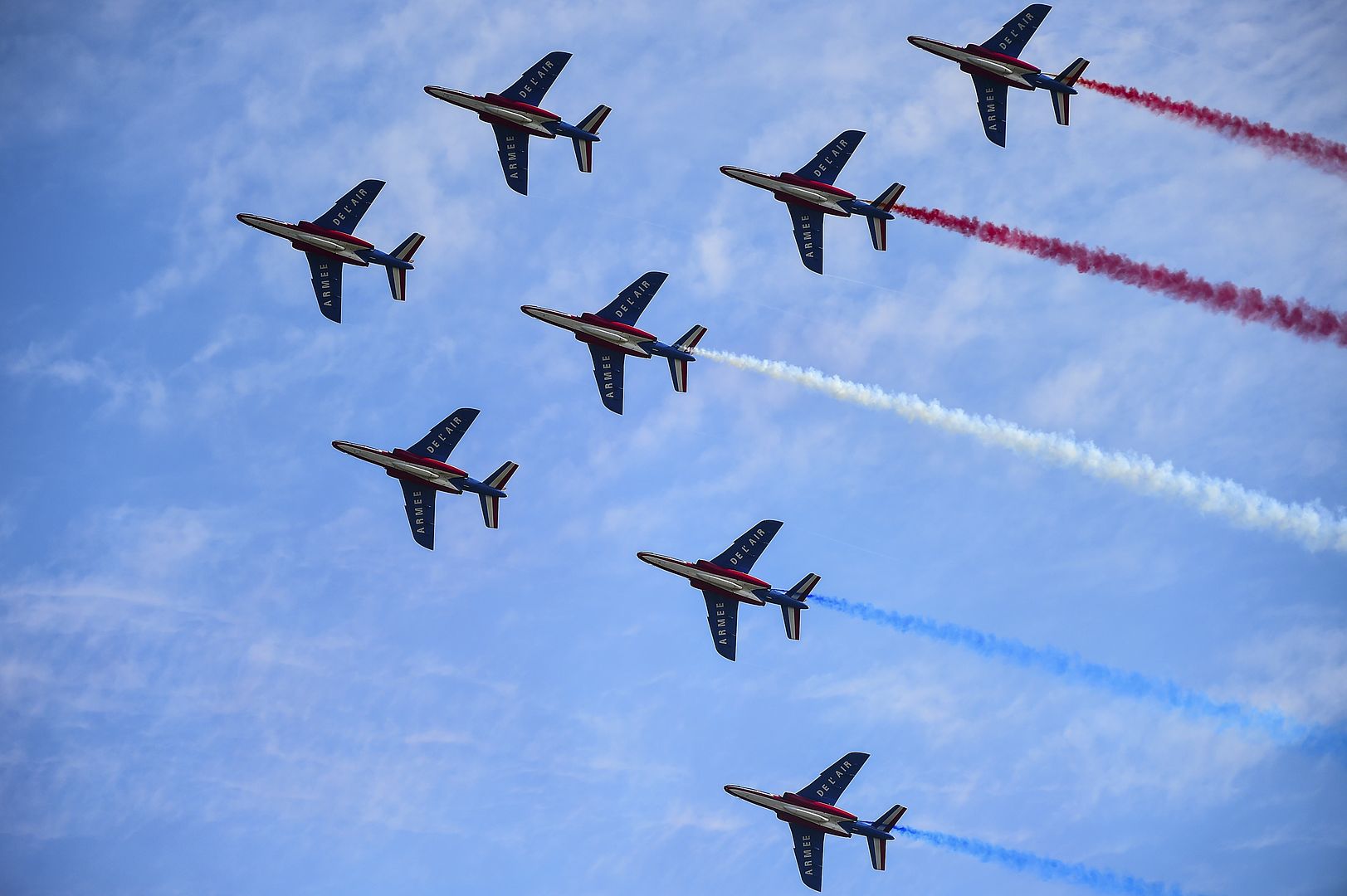
A U.S. Air Force B-2 Spirit stealth bomber, assigned to the 509th and 131st Bomb Wings Whiteman Air Force Base, Mo.,taxis prior to takeoff in support of Neptune Falcon on April 20, 2017. The 509th and 131st Bomb Wings sent B-2's to Nellis Air Force Base, Nevada, in support of Npetune Falcon, a joint interoperability exercise that demonstrates sustainability and surge operations in a restrictive environment.
Photo's by Airman 1st Class Michaela Slanchik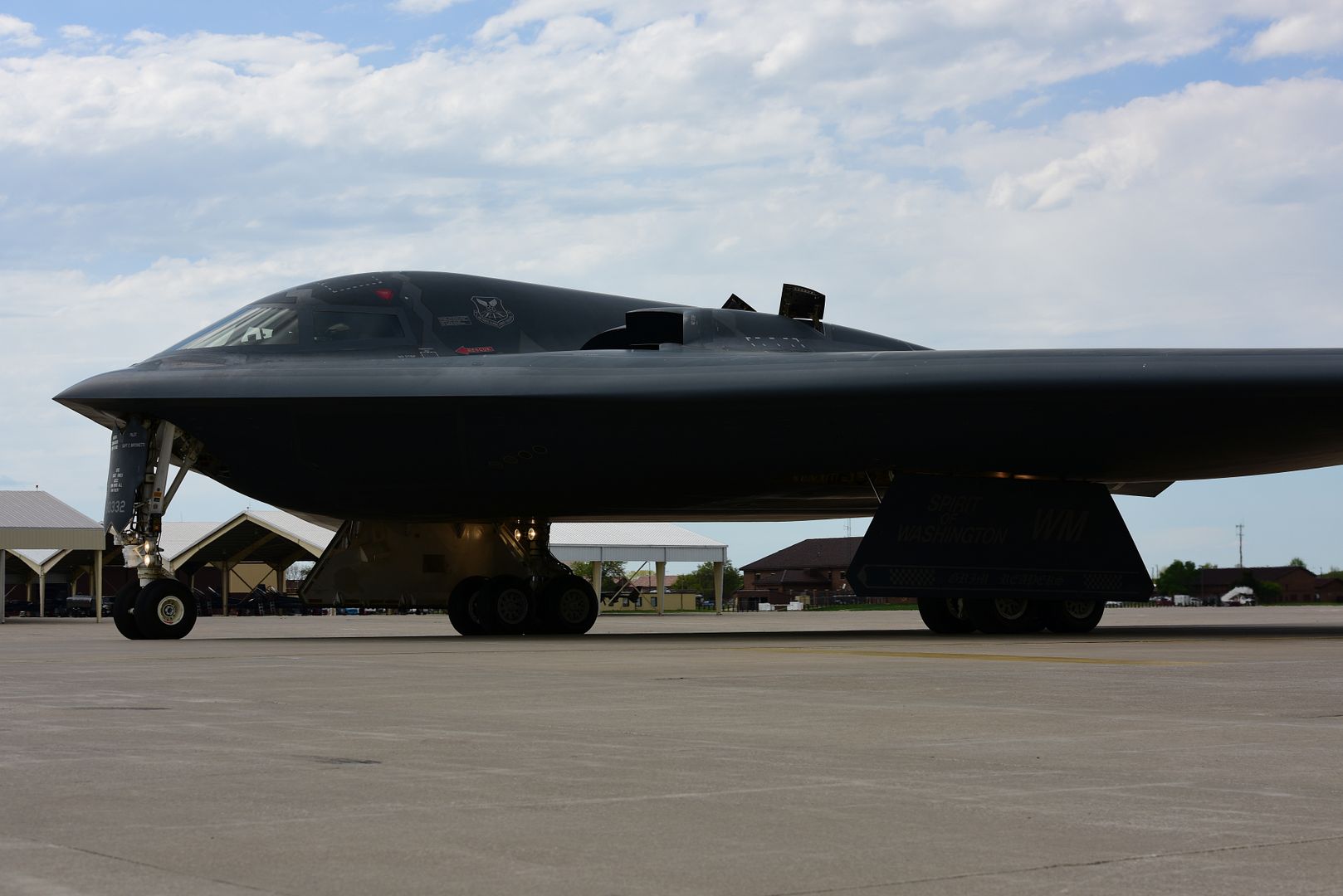

U.S. Air Force Maj. Daniel Dickinson, F-22 Raptor Demonstration Team pilot, does a fly-by during the ATLANTIC TRIDENT 17 World War I Remembrance Day at Joint Base Langley-Eustis, Va., April 21, 2017. The Raptor performs both air-to-air and air-to-ground missions, allowing full realization of operational concepts vital to the 21st century Air Force. The event also included a demonstration by the French air force?s Dassault Rafale and aerial demonstration team, Patrouille de France. (U.S. Air Force photo/Staff Sgt. Areca T. Bell)
A French air force Dassault Rafale performs a practice demonstration during ATLANTIC TRIDENT 17 World War I Remembrance Day at Joint Base Langley-Eustis, Va., April 20, 2017. The event included a demonstration by the F-22 Raptor Demonstration Team, and the French air force?s Rafale and aerial demonstration team, Patrouille de France. (U.S. Air Force photo/Staff Sgt. Areca T. Bell)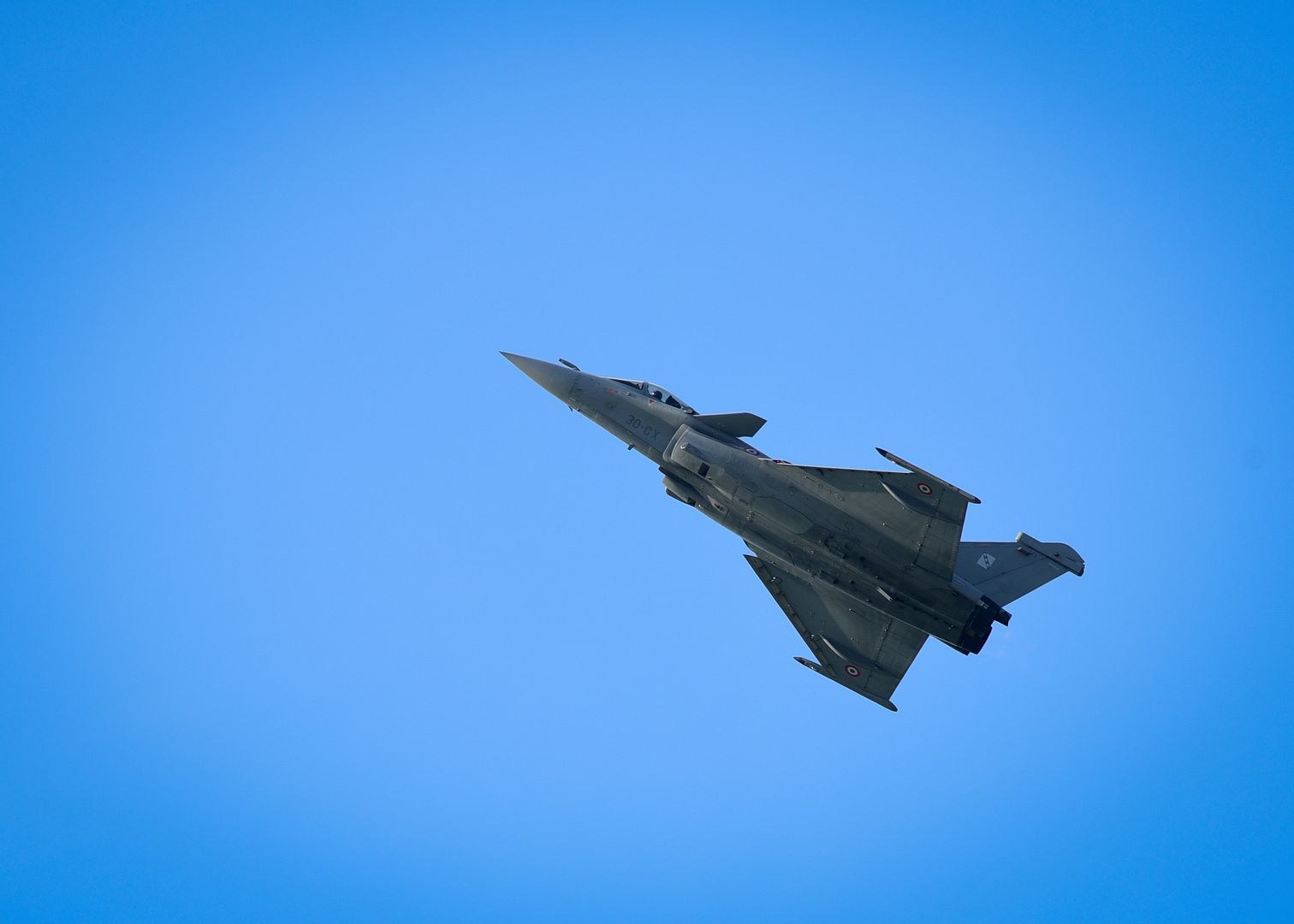
PACIFIC OCEAN (April 19, 2017) An EA-18G Growler assigned to the Cougars of Electronic Attack Strike Squadron (VAQ) 139 takes off from the flight deck of the aircraft carrier USS Theodore Roosevelt (CVN 71). Theodore Roosevelt is underway conducting a tailored ship?s training availability off the coast of California. (U.S. Navy photo by Mass Communication Specialist 3rd Class Spencer Roberts/Released)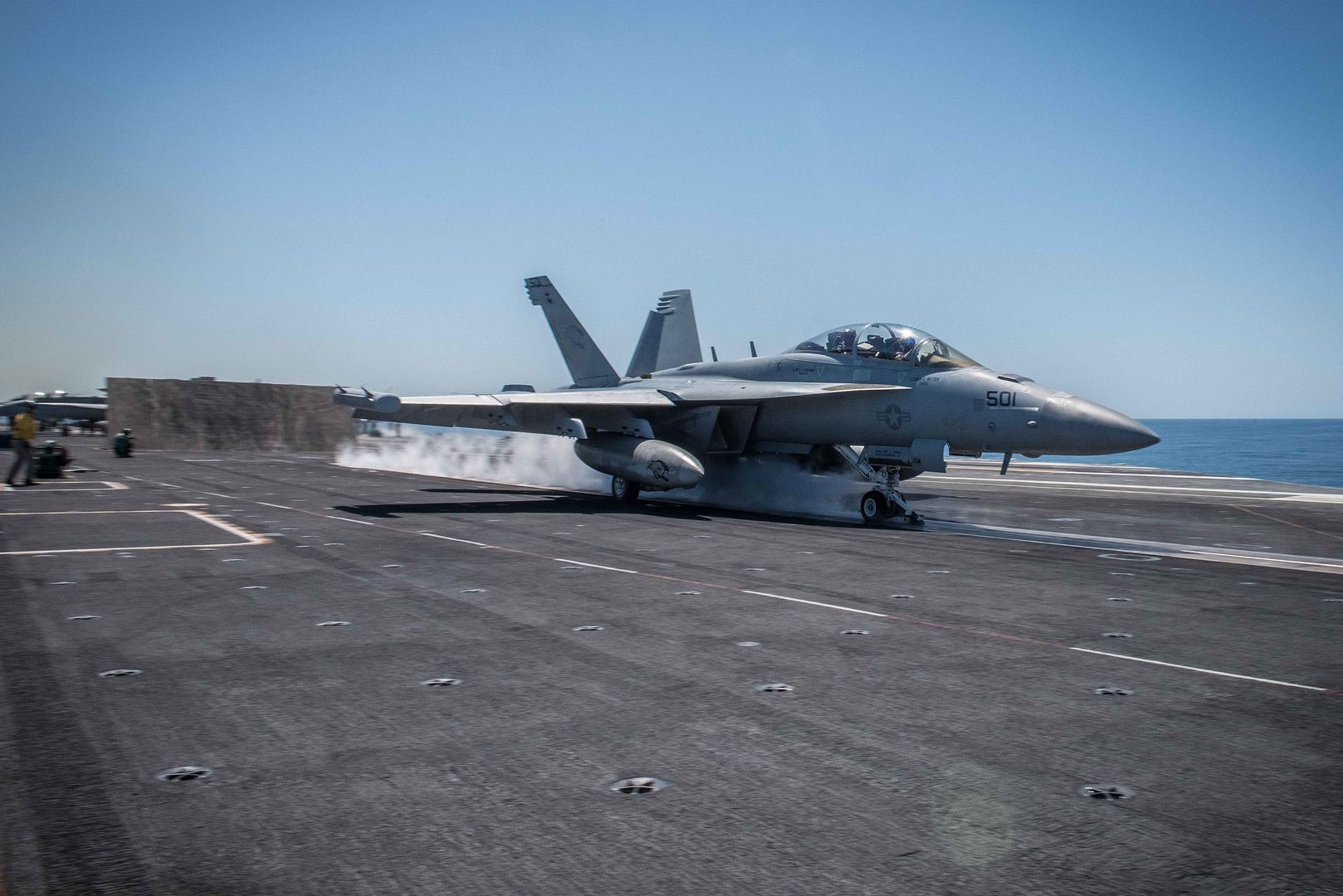
A C130h aircraft loaded with the MAFFS (Modular Airborne Fire Fighting System) from the 152rd Airlift Wing of Reno, Nevada drops a water line while training to contain wildfires just outside Bosie, Idaho. April 21, 2017. More than 400 personnel of four C-130 Guard and Reserve units ? from California, Colorado, Nevada and Wyoming, making up the Air Expeditionary Group ? are in Boise, Idaho for the week-long wildfire training and certification sponsored by the U.S. (U.S. Air National Guard photo by Staff Sgt. Nieko Carzis)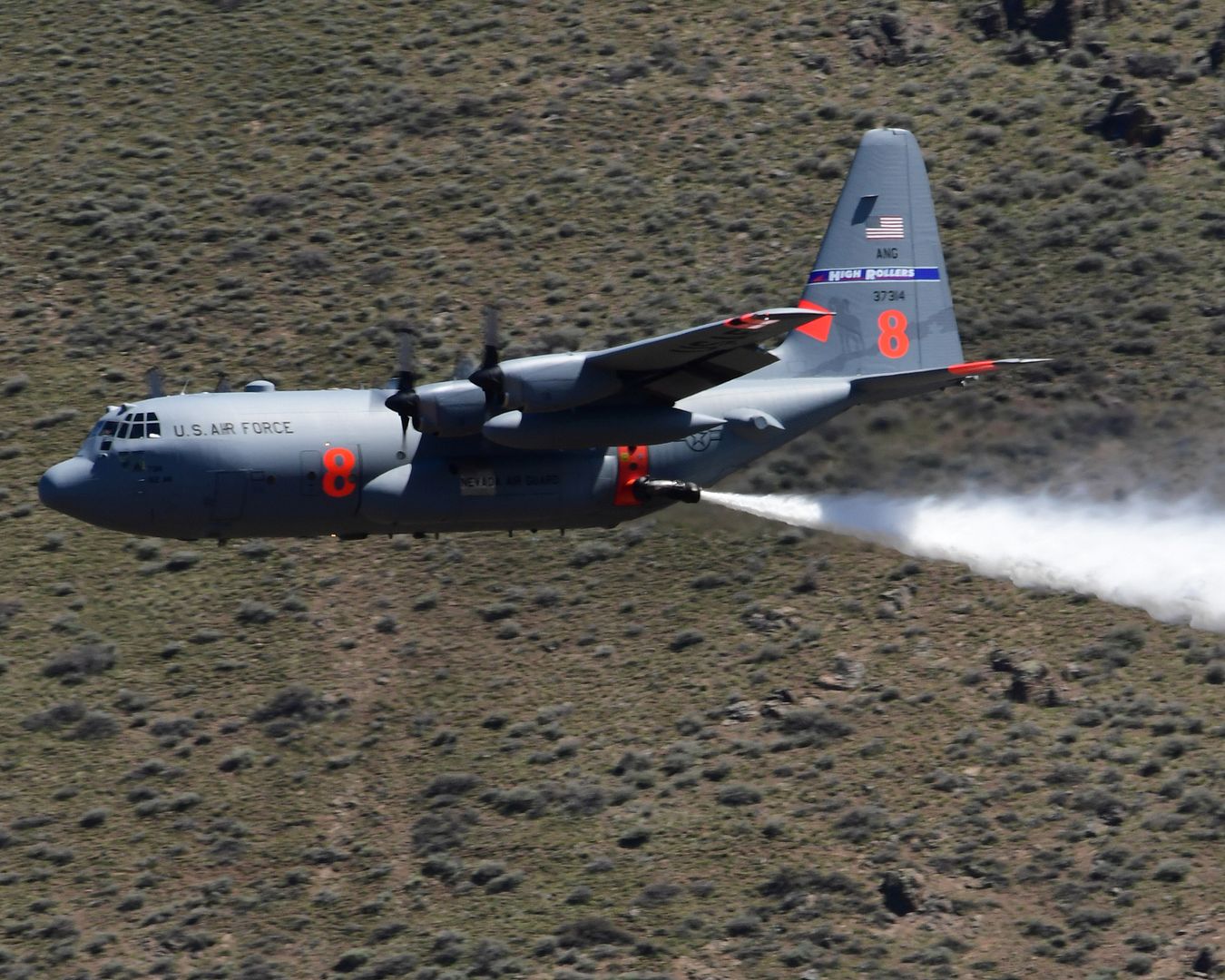
A U.S. Air Force F-16 Fighting Falcon lands on the runway after concluding a defensive counter air mission during Exercise MAX THUNDER 17 at Kunsan Air Base, Republic of Korea, April 18, 2017. Max Thunder serves as an opportunity for U.S. and ROK forces to train together and sharpen tactical skills for the defense of the Asia-Pacific region. It is an annual military-flying exercise built to promote interoperability between U.S. and ROK forces. (U.S. Marine Corps photo by Lance Cpl. Carlos Jimenez)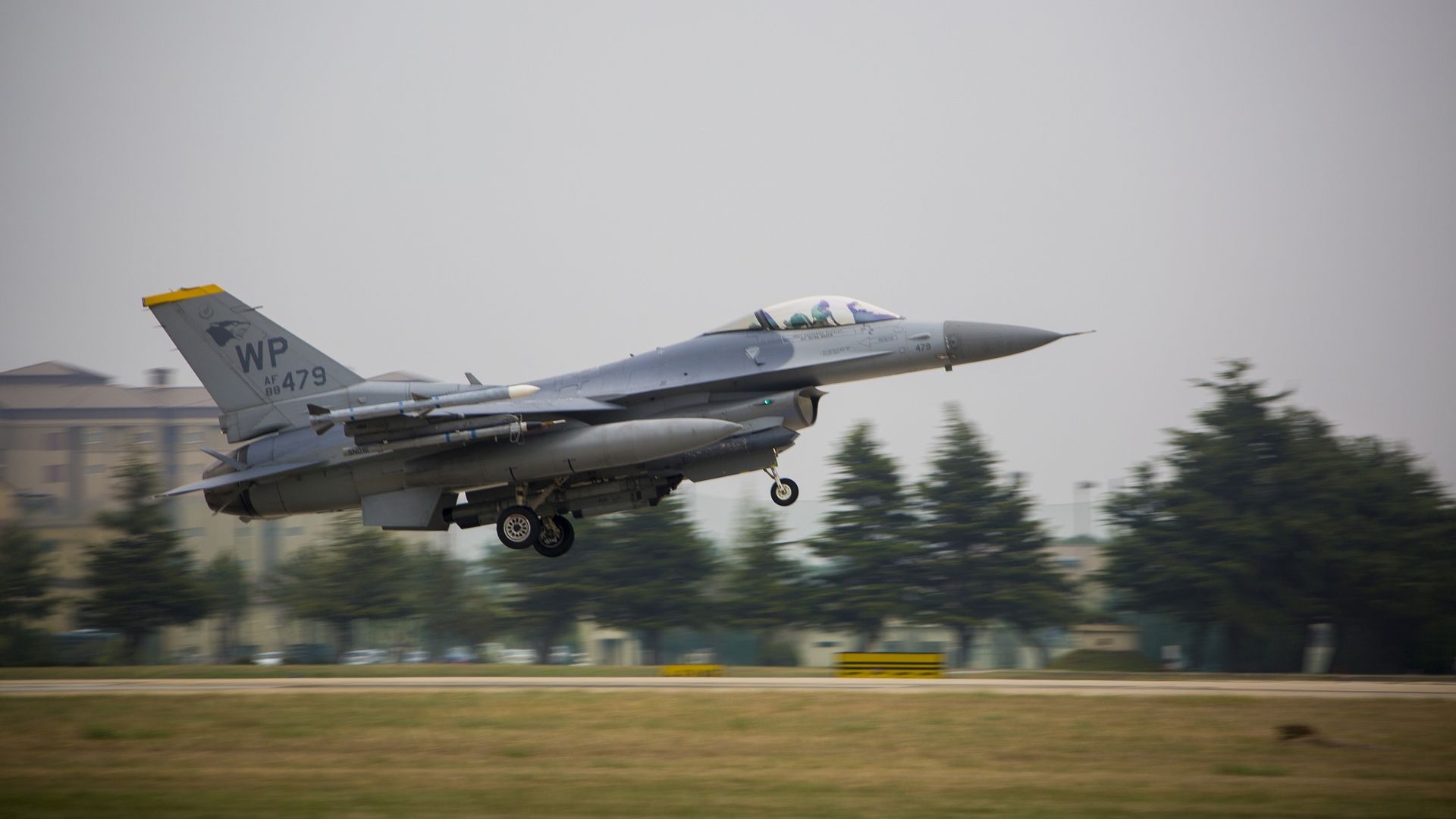
Media personnel view a Republic of Korea F-15K Slam Eagle as it taxis down the runway during Exercise MAX THUNDER 17?s media day at Kunsan Air Base, ROK, April 20, 2017. Local and national media were given the opportunity to view the aircraft participating in Max Thunder up-close and get interviews with subject matter experts of the exercise and the aircraft. Max Thunder serves as an opportunity for U.S. and ROK forces to train together and sharpen tactical skills for the defense of the Asia-Pacific region. It is an annual military flying exercise built to promote interoperability between U.S. and ROK forces. (U.S. Marine Corps photo by Lance Cpl. Carlos Jimenez)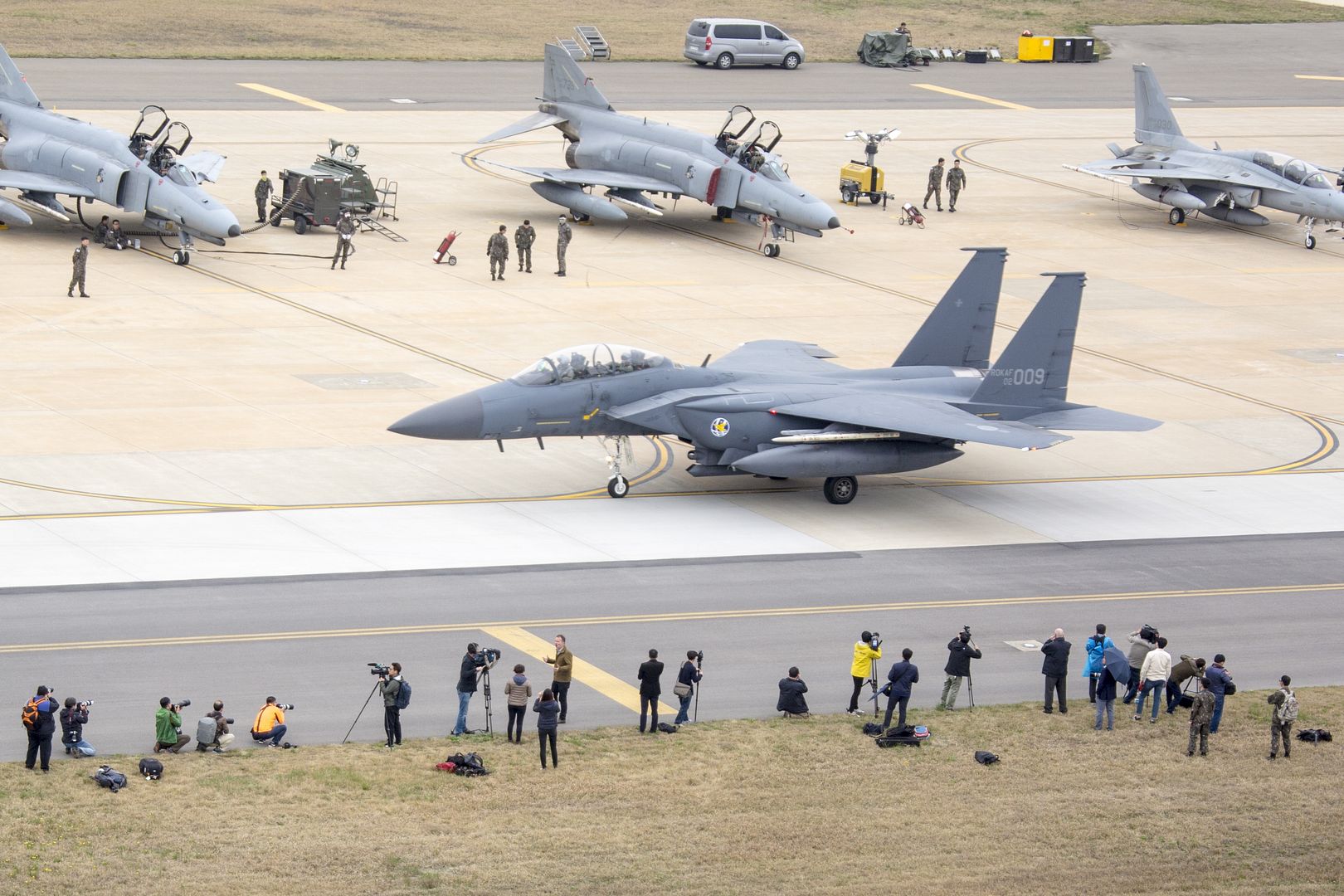
-
7 years agoSun Apr 23 2017, 01:40pm
 Main AdminMaj. Nick Krajicek, Thunderbird #4, flies in a two-ship formation with retired Lt. Col. Dale Cooke, former Thunderbird #4, over Tyndall Air Force Base and Panama City, Fla., April 21, 2017. The T-38 in the formation was the same jet Cooke flew during his tenure on the team. The Thunderbirds transitioned from the T-38 to the F-16 in 1982. (U.S. Air Force Photo's by Tech. Sgt. Christopher Boitz)
Main AdminMaj. Nick Krajicek, Thunderbird #4, flies in a two-ship formation with retired Lt. Col. Dale Cooke, former Thunderbird #4, over Tyndall Air Force Base and Panama City, Fla., April 21, 2017. The T-38 in the formation was the same jet Cooke flew during his tenure on the team. The Thunderbirds transitioned from the T-38 to the F-16 in 1982. (U.S. Air Force Photo's by Tech. Sgt. Christopher Boitz)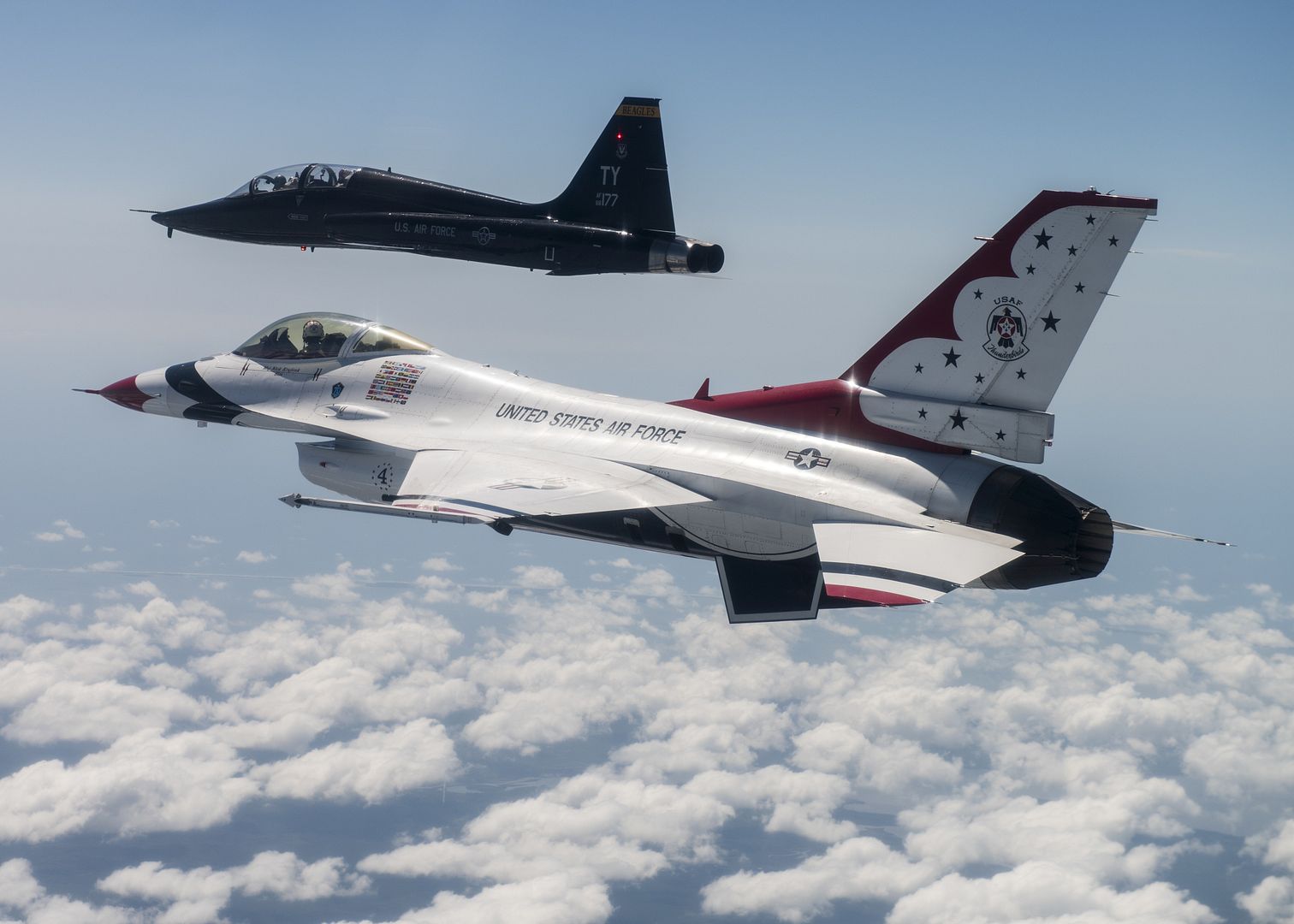
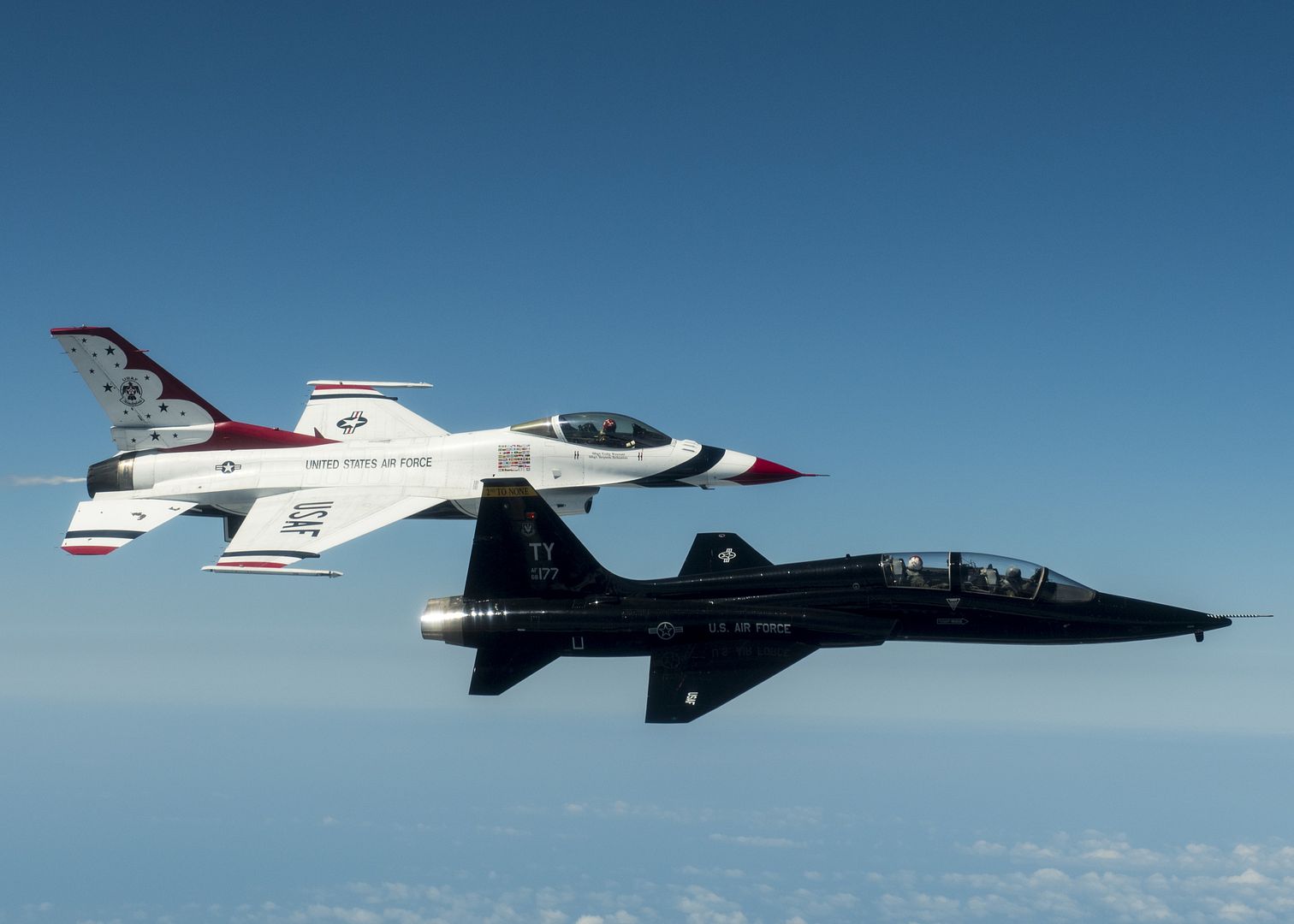
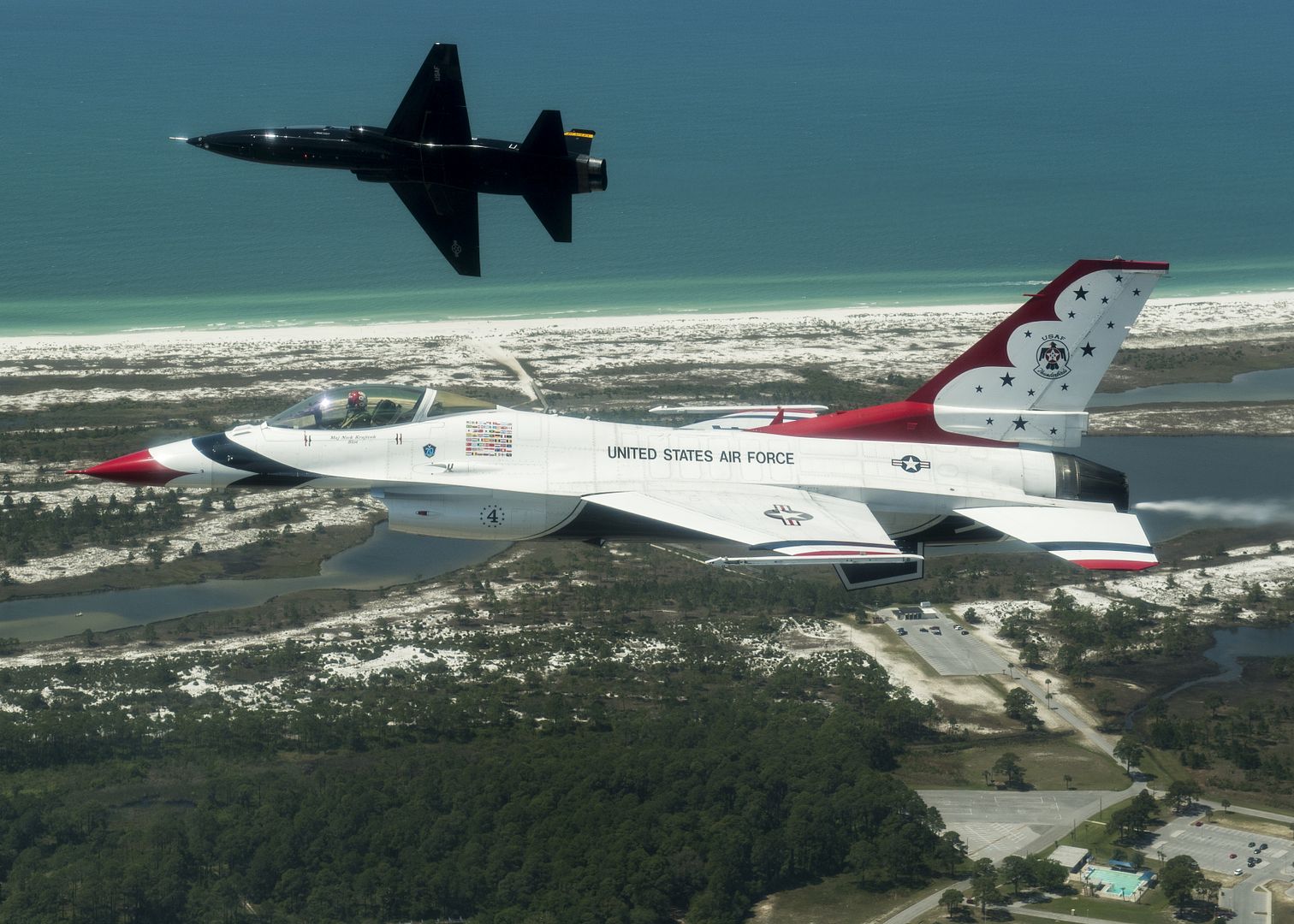
A U.S Forest Service Lead Plane leaves a trail of white smoke to visually aid a C130h aircraft loaded with the MAFFS (Modular Airborne Fire Fighting System) from the 153rd Airlift Wing of Cheyenne, Wyoming as it prepares to drop a water line as they train to contain wildfires just outside Boise, Idaho. April 21, 2017. More than 400 personnel of four C-130 Guard and Reserve units ? from California, Colorado, Nevada and Wyoming, making up the Air Expeditionary Group ? are in Boise, Idaho for the week-long wildfire training and certification sponsored by the U.S. (U.S. Air National Guard photo by Staff Sgt. Nieko Carzis)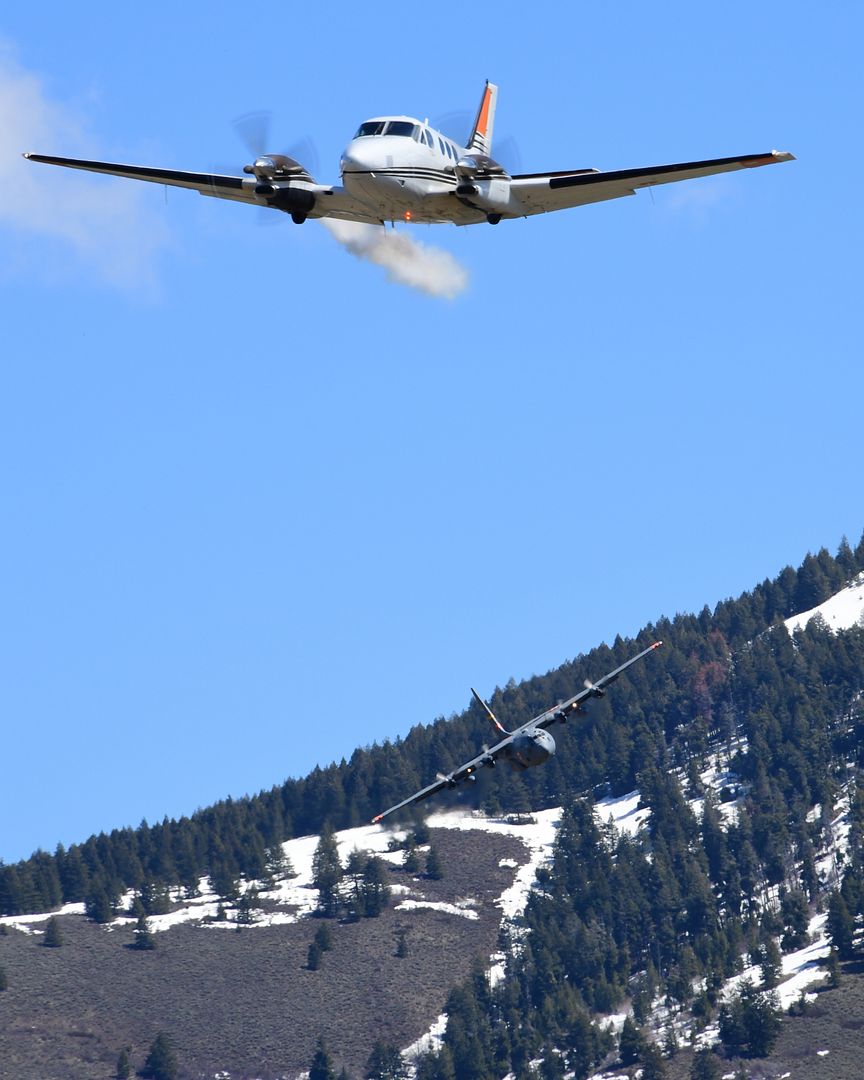
PACIFIC OCEAN (April 20, 2017) An EA-18G Growler, from the "Gray Wolves" of Electronic Attack Squadron (VAQ) 142, takes off the flight deck of the aircraft carrier USS Nimitz (CVN 68), April 20, 2017, in the Pacific Ocean. Nimitz is currently underway conducting Composite Training Unit Exercise (COMPTUEX) with the Nimitz Carrier Strike Group in preparation for an upcoming deployment. COMPTUEX tests a carrier strike group's mission-readiness and ability to perform as an integrated unit through simulated real-world scenarios. (U.S. Navy photo by Mass Communication Specialist Seaman Ian Kinkead)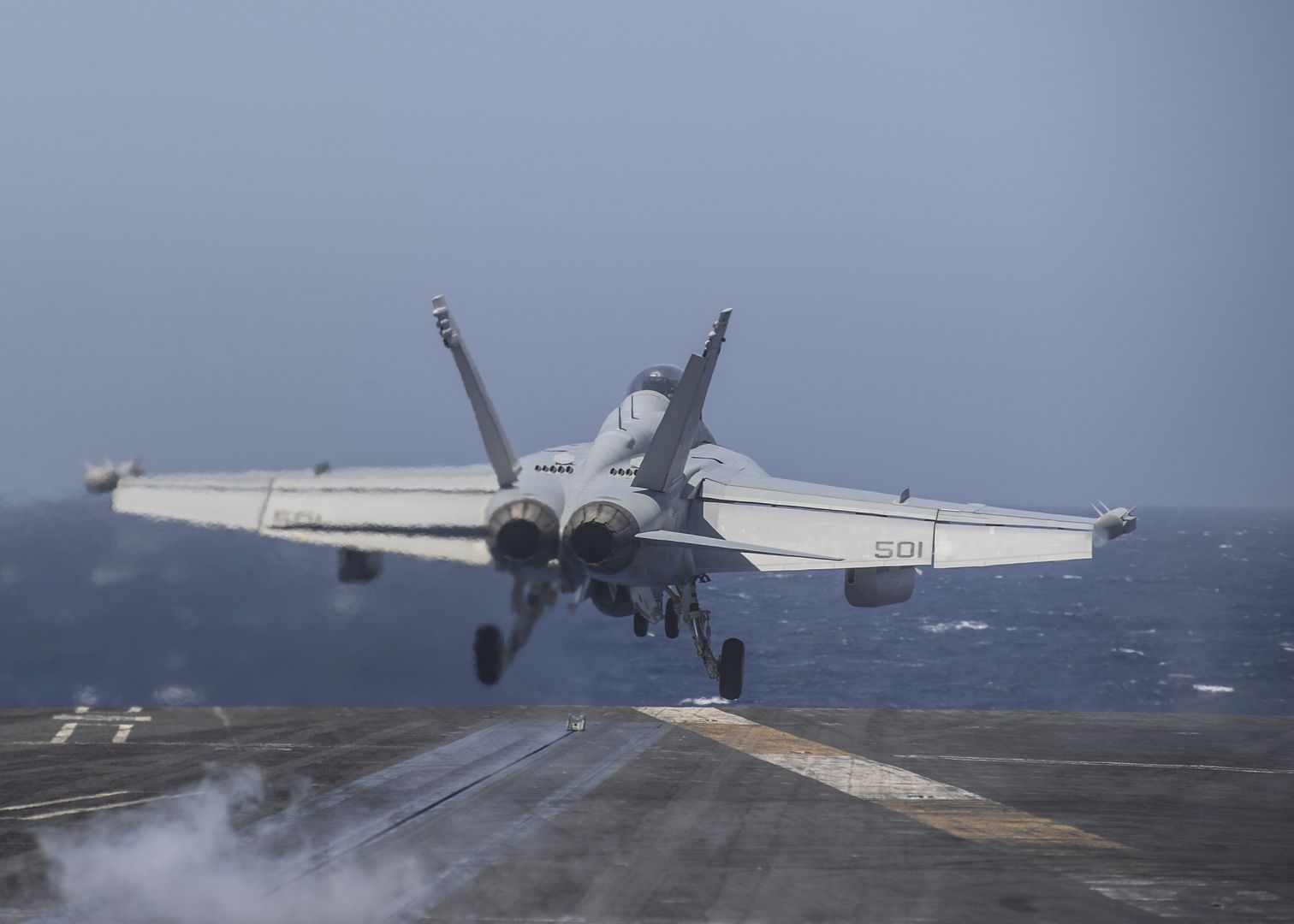
A C-130 with the 152nd Airlift Wing, Nevada Air National Guard, follows a U.S. Forest Service lead plane in the mountains east of Boise, Idaho as part of the annual Modular Airborne Fire Fighting System training and certification, April 21, 2017. More than 400 personnel of four C-130 Guard and Reserve units ? from California, Colorado, Nevada and Wyoming, making up the Air Expeditionary Group ? are in Boise for the week-long wildfire training and certification sponsored by the U.S. Forest Service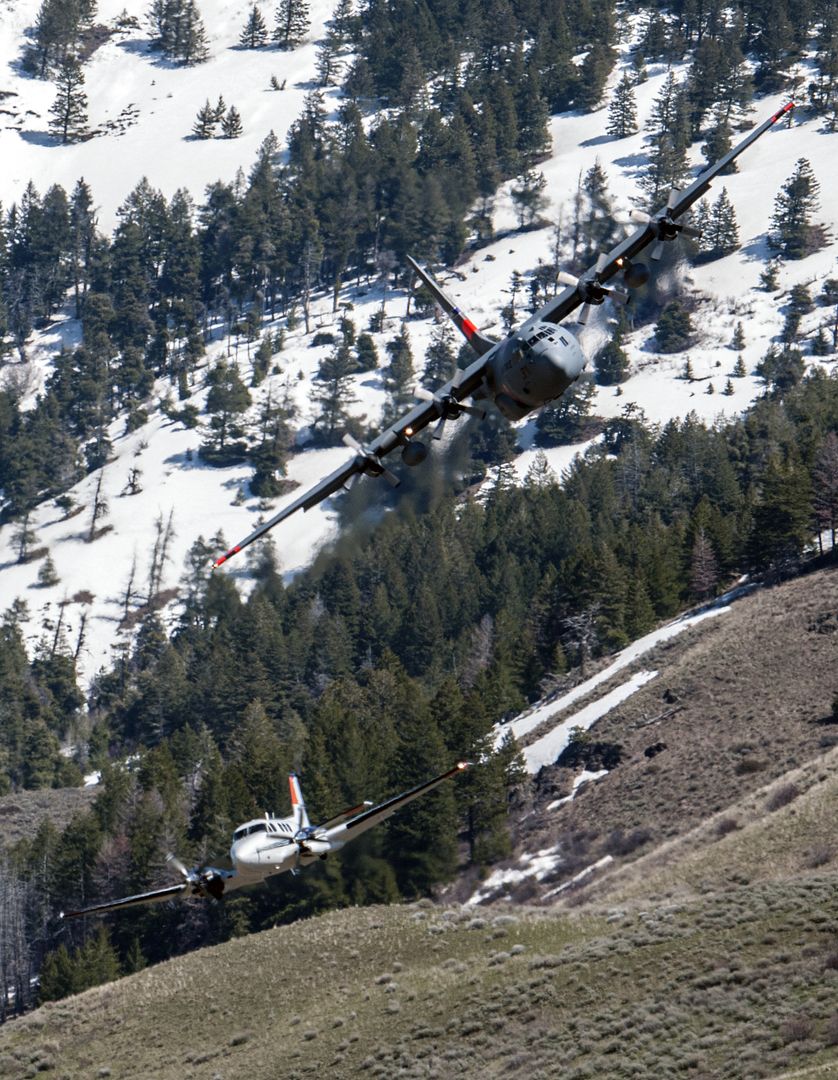
A C-130 with the 152nd Airlift Wing, Nevada Air National Guard, drops water in the mountains east of Boise, Idaho as part of the annual Modular Airborne Fire Fighting System training and certification, April 21, 2017. More than 400 personnel of four C-130 Guard and Reserve units ? from California, Colorado, Nevada and Wyoming, making up the Air Expeditionary Group ? are in Boise for the week-long wildfire training and certification sponsored by the U.S. Forest Service.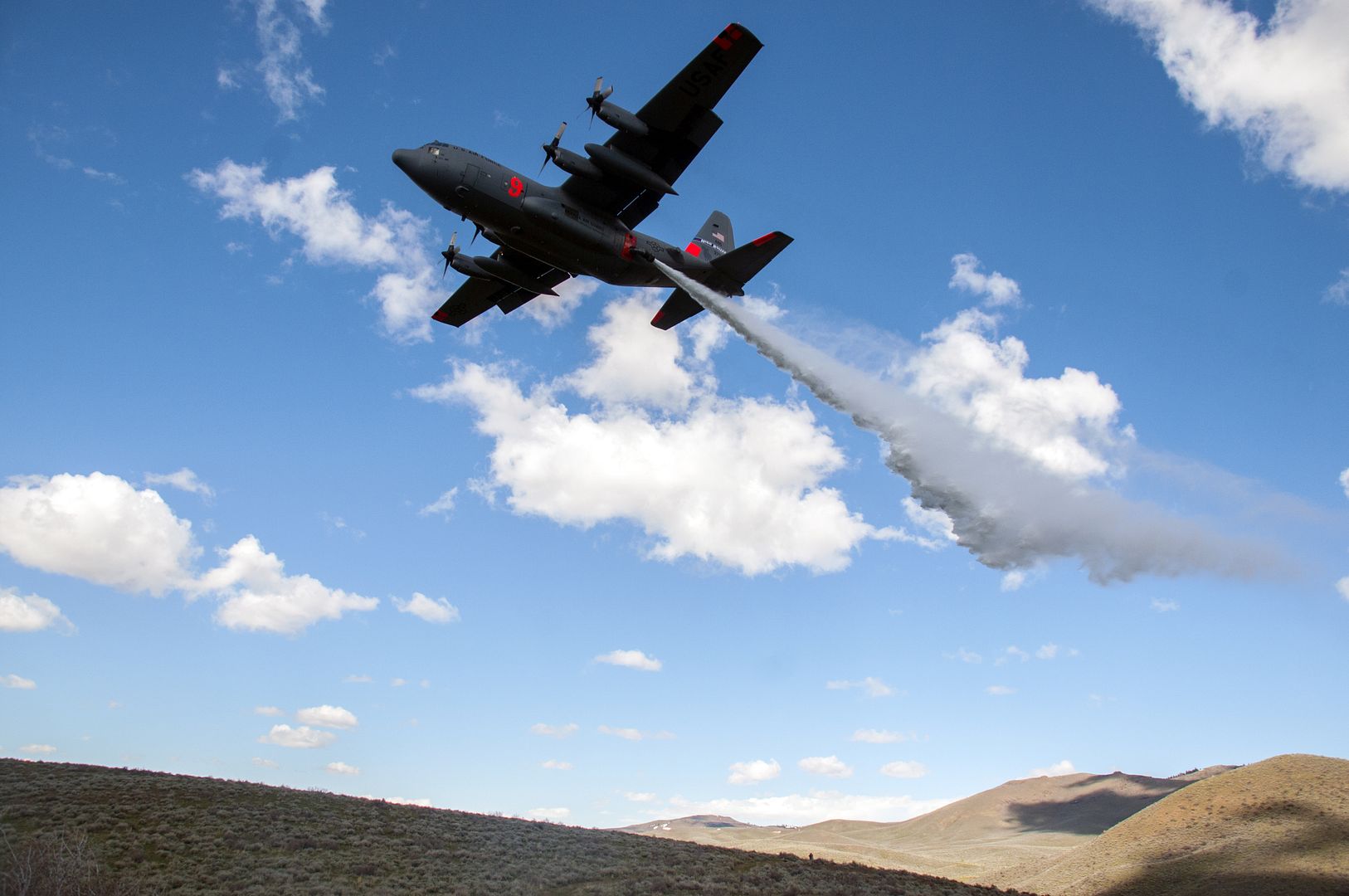
RAF Lossiemouth
Royal Air Force Typhoons from RAF Lossiemouth have notched up a historic first at one of the world?s largest air combat exercises.
The jets of 1 (Fighter) Squadron are flying with the US F-35 Lightning II as part of a combined force that is engaging with ?aggressor? squadrons. The US F-22 Raptor and the French Rafale make up the rest of the ?blue forces? on Exercise Atlantic Eagle 17. It is the first time the ?next generation? F-35 has worked alongside all three Nato aircraft.
The exercise reinforces the Tri-Lateral Strategic Initiative agreed by the UK, US and France which will be re-signed by the Chief of the Air Staff, Air Chief Marshal Sir Stephen Hillier, today (20 April) at a ceremony at Joint Base Langley-Eustis, VA, where the exercise is based.
?Exercises like this strengthen the unshakable bonds between the air forces of our nations which have stood the test of time and remain central to our collective security,? said Wing Commander Chris Hoyle, Officer Commanding 1(F) Sqn based at RAF Lossiemouth, Moray.
The UK will be taking delivery of 138 of the F-35s from Lockheed Martin for both the RAF and the Royal Navy, to use on its Queen Elizabeth Class aircraft carriers.
?The F-35 is a highly capable aircraft and operating alongside it on this exercise gives the RAF a taste of what to expect when the F-35 is introduced into front line service with the UK Armed Forces,? added Wg Cdr Hoyle.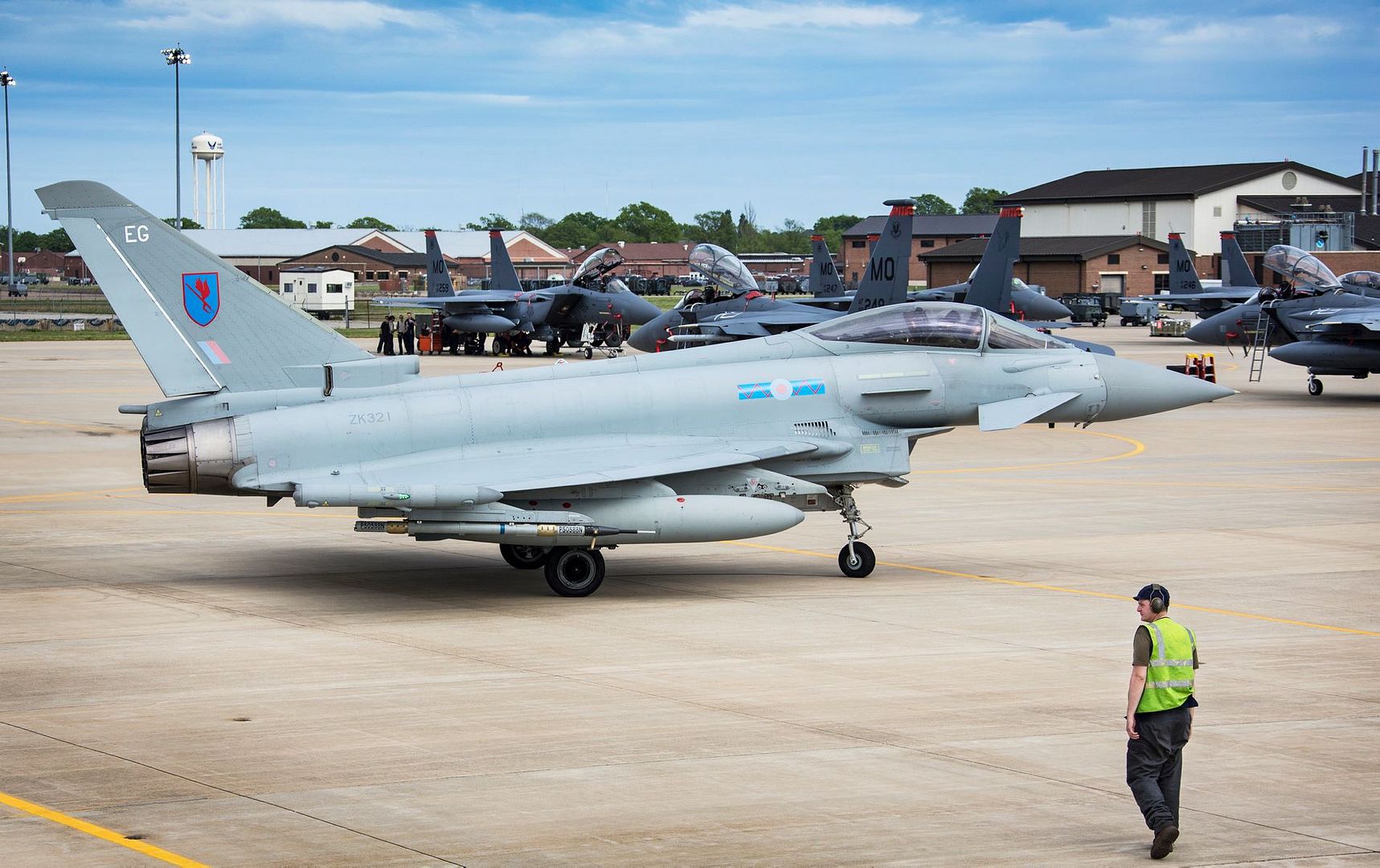
Exercise Atlantic Eagle 17 presents the RAF, US Air Force and Arm?e de l?Air with scenarios that replicate a highly contested operational environment. They are flying together in a variety of complex, simulated air battles against F15E Strike Eagles and T-38 Talons, both highly effective aircraft.
As well as working on their flying tactics and procedures, the three air forces are refining the software that allows their aircraft to electronically ?speak to each other?. It is this ?digital bond? that allows the differing capabilities of the Typhoon, Rafale, F-35 and F-22 to be used to maximum effect.
?This synergy is what we call a force multiplier,? said Group Captain Paul Godfrey, the Station Commander of RAF Lossiemouth, who is also flying on the exercise. He had recently returned from a scenario which resulted in a highly successful ?kill rate?.
He said: ?The F-15s and T-38s kept coming at us but with all of the aircraft capabilities that we had available to us it was amazing to see how it all fitted together and how lethal we were.?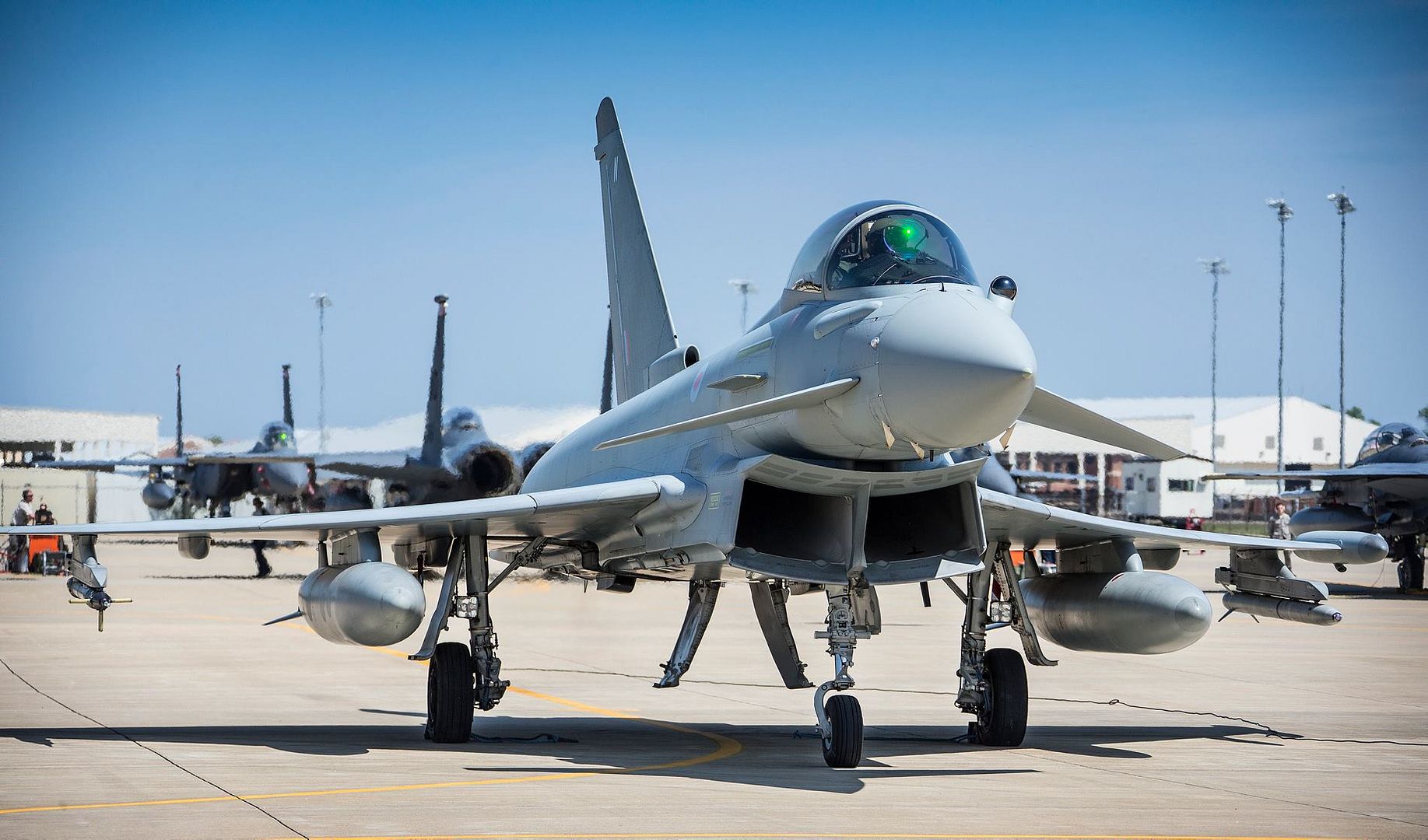
-
 Main AdminA U.S. Air Force A-10 Thunderbolt II departs after receiving fuel from a 340th Expeditionary Air Refueling Squadron KC-135 Stratotanker during a flight in support of Operation Inherent Resolve April 19, 2017. The 340th EARS, part of U.S. Air Forces Central Command, is responsible for delivering fuel for U.S. and coalition forces, enabling a persistent 24/7 presence in the area of responsibility. (U.S. Air Force photo by Senior Airman Trevor T. McBride)
Main AdminA U.S. Air Force A-10 Thunderbolt II departs after receiving fuel from a 340th Expeditionary Air Refueling Squadron KC-135 Stratotanker during a flight in support of Operation Inherent Resolve April 19, 2017. The 340th EARS, part of U.S. Air Forces Central Command, is responsible for delivering fuel for U.S. and coalition forces, enabling a persistent 24/7 presence in the area of responsibility. (U.S. Air Force photo by Senior Airman Trevor T. McBride)
A U.S. Marine EA-6B Prowler prepares to receive fuel from a 340th Expeditionary Air Refueling Squadron KC-135 Stratotanker during a flight in support of Operation Inherent Resolve April 19, 2017. The 340th EARS, part of U.S. Air Forces Central Command, is responsible for delivering fuel for U.S. and coalition forces, enabling a persistent 24/7 presence in the area of responsibility. (U.S. Air Force photo by Senior Airman Trevor T. McBride)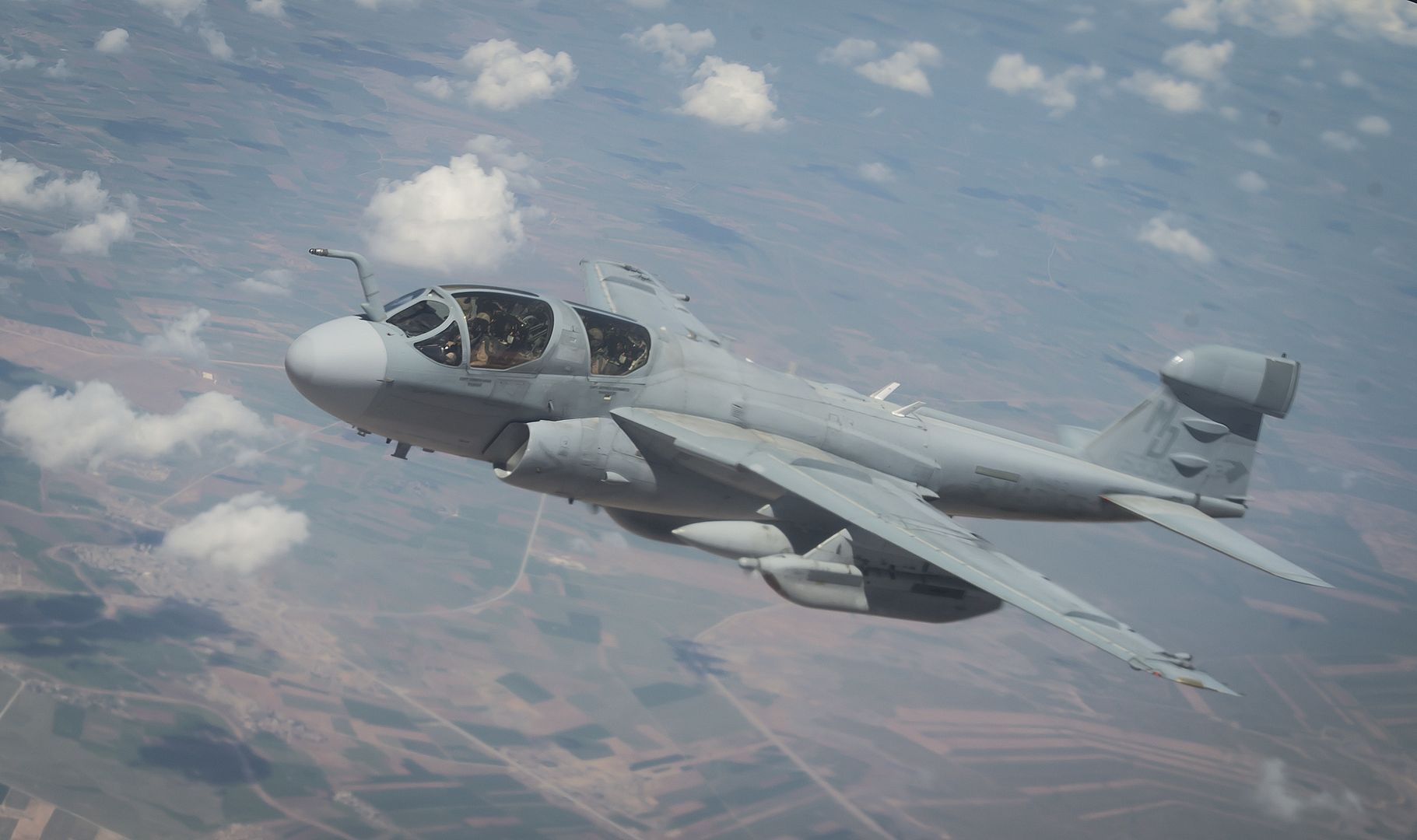
A Republic of Singapore Air Force F-15SG aircraft taxis after flight April 10, 2017, at Andersen Air Force Base, Guam. The RSAF deployed to Andersen to conduct bilateral training with the United States, enhancing interoperability to ensure regional security and stability. (U.S. Air Force Airman 1st Class Gerald R. Willis/Released)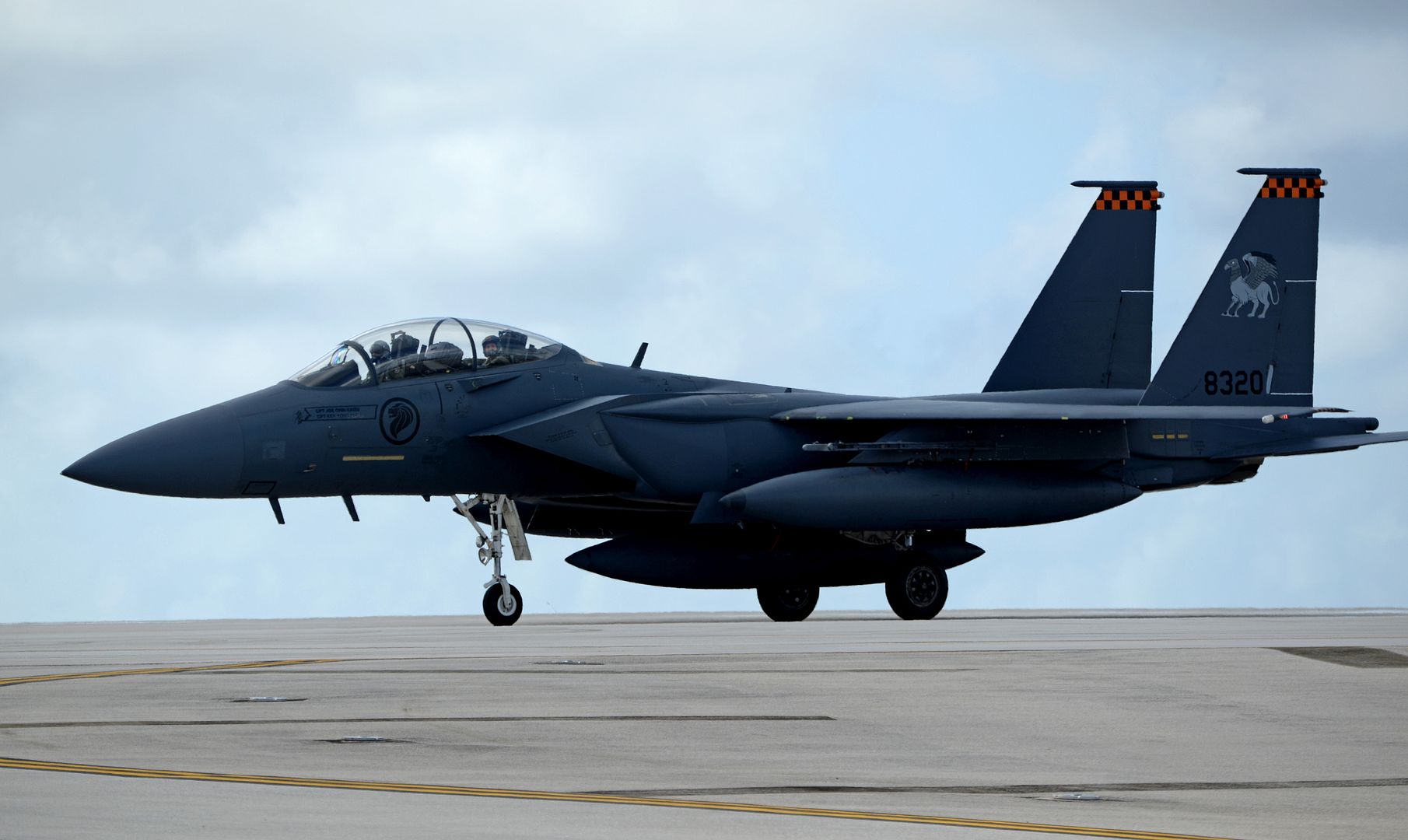
A U.S. Air Force A-10 Thunderbolt II departs after receiving fuel from a 340th Expeditionary Air Refueling Squadron KC-135 Stratotanker during a flight in support of Operation Inherent Resolve April 19, 2017. The 340th EARS, part of U.S. Air Forces Central Command, is responsible for delivering fuel for U.S. and coalition forces, enabling a persistent 24/7 presence in the area of responsibility. (U.S. Air Force photo by Senior Airman Trevor T. McBride)
A Boeing 747 VC-25A sits on the flightline April 19 at Eglin Air Force Base, Fla. The aircraft is one of two VC-25As assigned to the Presidential Airlift Group, 89th Airlift Wing at Joint Base Andrews, Maryland. The VC-25A is commonly known as "Air Force One," although that radio call sign is reserved and used exclusively when the President of the U.S. is aboard any U.S. Air Force aircraft. This aircraft was completing a maintenance cycle and is undergoing an operational test regimen before being certified to return to Presidential service. (U.S. Air Force photos/Ilka Cole)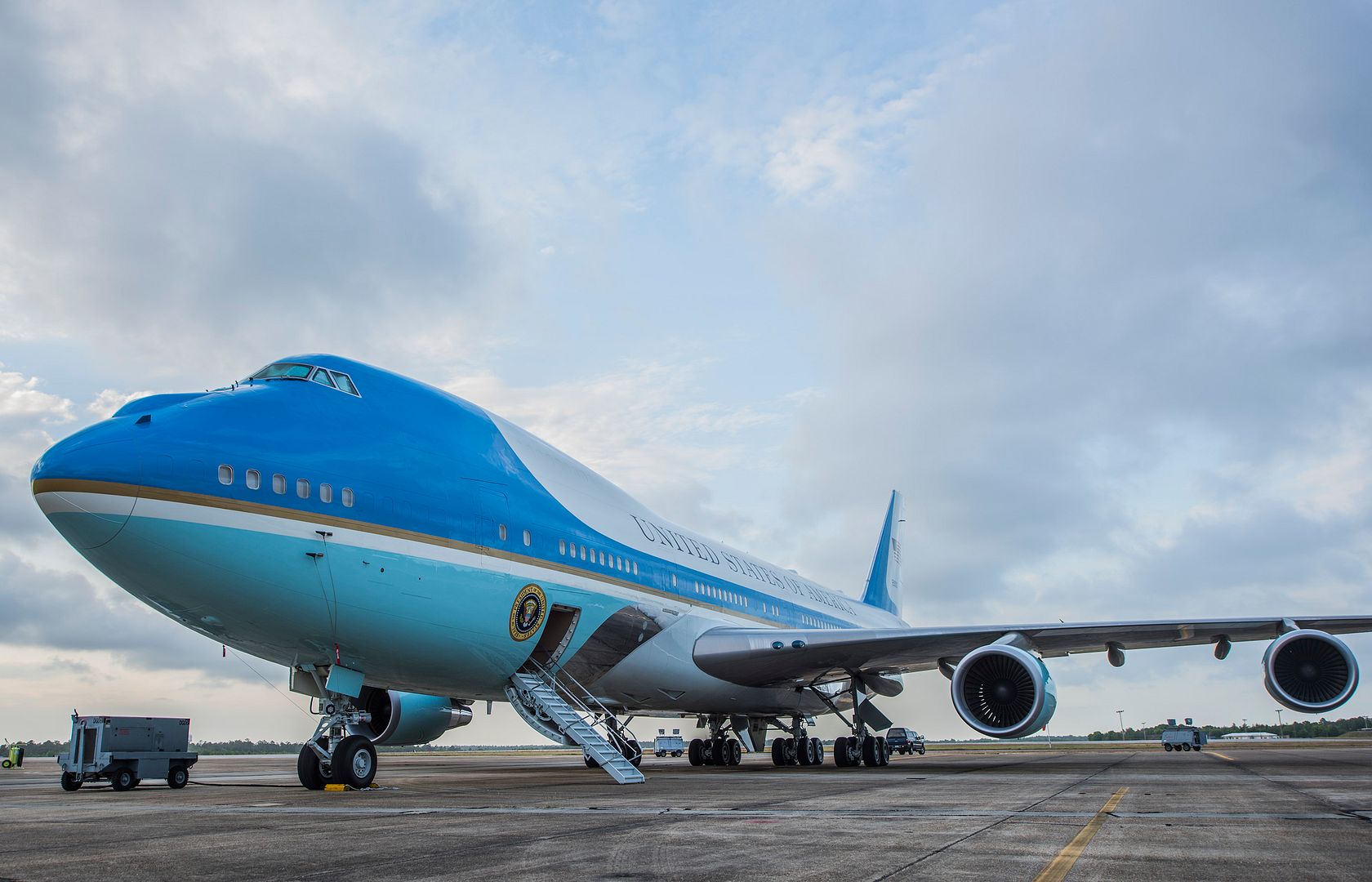
-
 Main AdminU.S. Marine Corps FA-18C Hornets with Marine Fighter Attack Squadron 232 from Miramar, Calif., arrive at Joint Base Elmendorf-Richardson, Alaska, for Exercise Northern Edge, April 24, 2017. Various military aircraft from all services will practice operations, techniques and procedures while enhancing interoperability during Northern Edge 2017 ? Alaska?s premier joint-training exercise. (U.S. Air Force photo by Airman 1st Class Javier Alvarez)
Main AdminU.S. Marine Corps FA-18C Hornets with Marine Fighter Attack Squadron 232 from Miramar, Calif., arrive at Joint Base Elmendorf-Richardson, Alaska, for Exercise Northern Edge, April 24, 2017. Various military aircraft from all services will practice operations, techniques and procedures while enhancing interoperability during Northern Edge 2017 ? Alaska?s premier joint-training exercise. (U.S. Air Force photo by Airman 1st Class Javier Alvarez)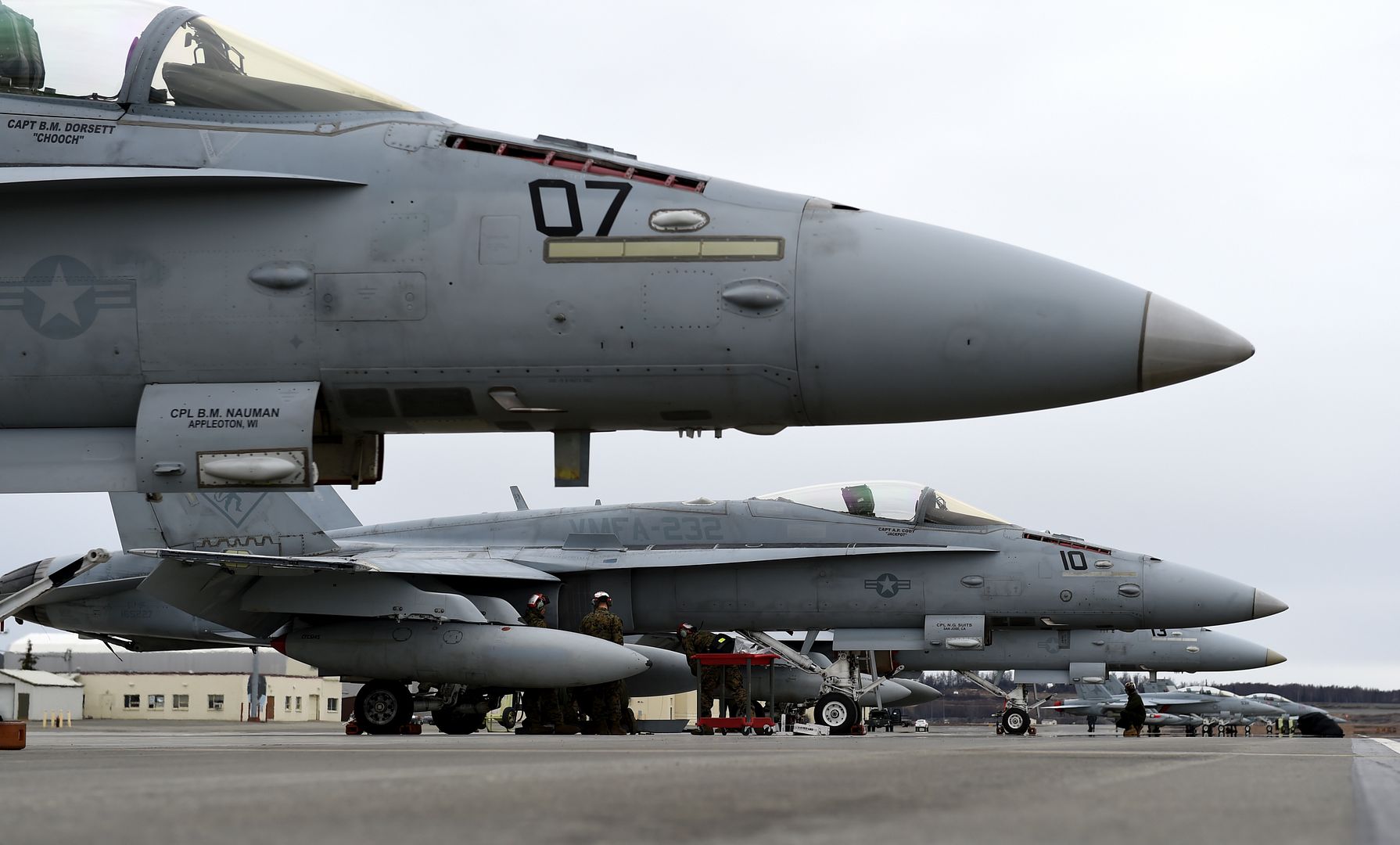
A U.S. Marine Corps FA-18C Hornet with Marine Fighter Attack Squadron 232 from Miramar, Calif., sits at the flight line at Joint Base Elmendorf-Richardson, Alaska, for Exercise Northern Edge, April 24, 2017. Various military aircraft from all services will practice operations, techniques and procedures while enhancing interoperability during Northern Edge 2017 ? Alaska?s premier joint-training exercise. (U.S. Air Force photo by Airman 1st Class Javier Alvarez)
PACIFIC OCEAN (April 19, 2017) Cmdr. Patrick McKenna pilots an F/A-18E Super Hornet assigned to the "Stingers" of Strike Fighter Attack Squadron (VFA) 113 during flight operations from the aircraft carrier USS Theodore Roosevelt (CVN 71). The ship is underway conducting a tailored ship?s training availability off the coast of Calif. (U.S. Navy photo by Lt. Aaron B. Hicks/Released)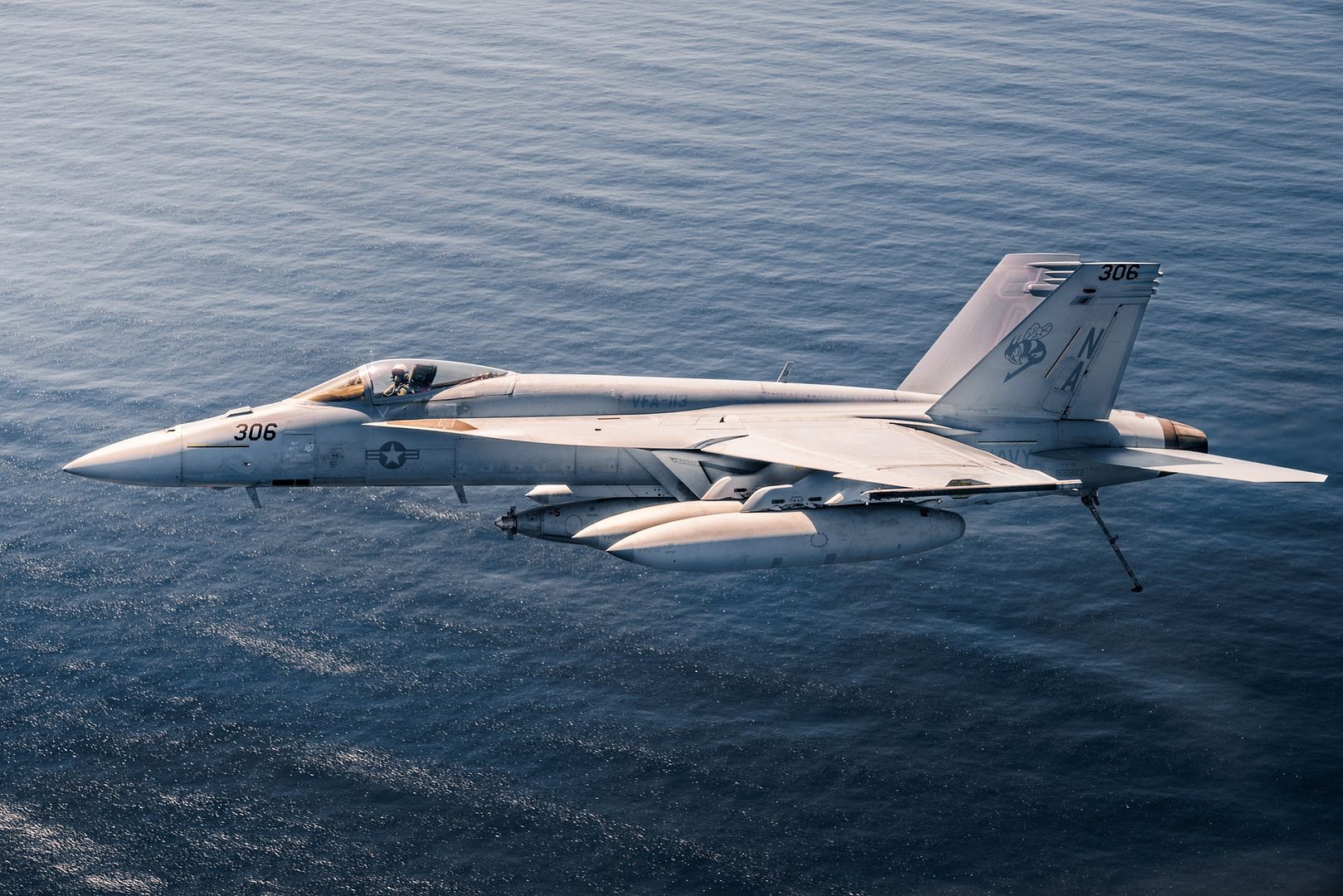
PACIFIC OCEAN (April 19, 2017) An F/A-18F, assigned to the Redcocks of Strike Fighter Attack Squadron (VFA) 22, prepares to land on the aircraft carrier USS Theodore Roosevelt (CVN 71). Theodore Roosevelt is underway conducting a tailored ship?s training availability off the coast of California. (U.S. Navy Photo by Lt. Aaron B. Hicks/Released)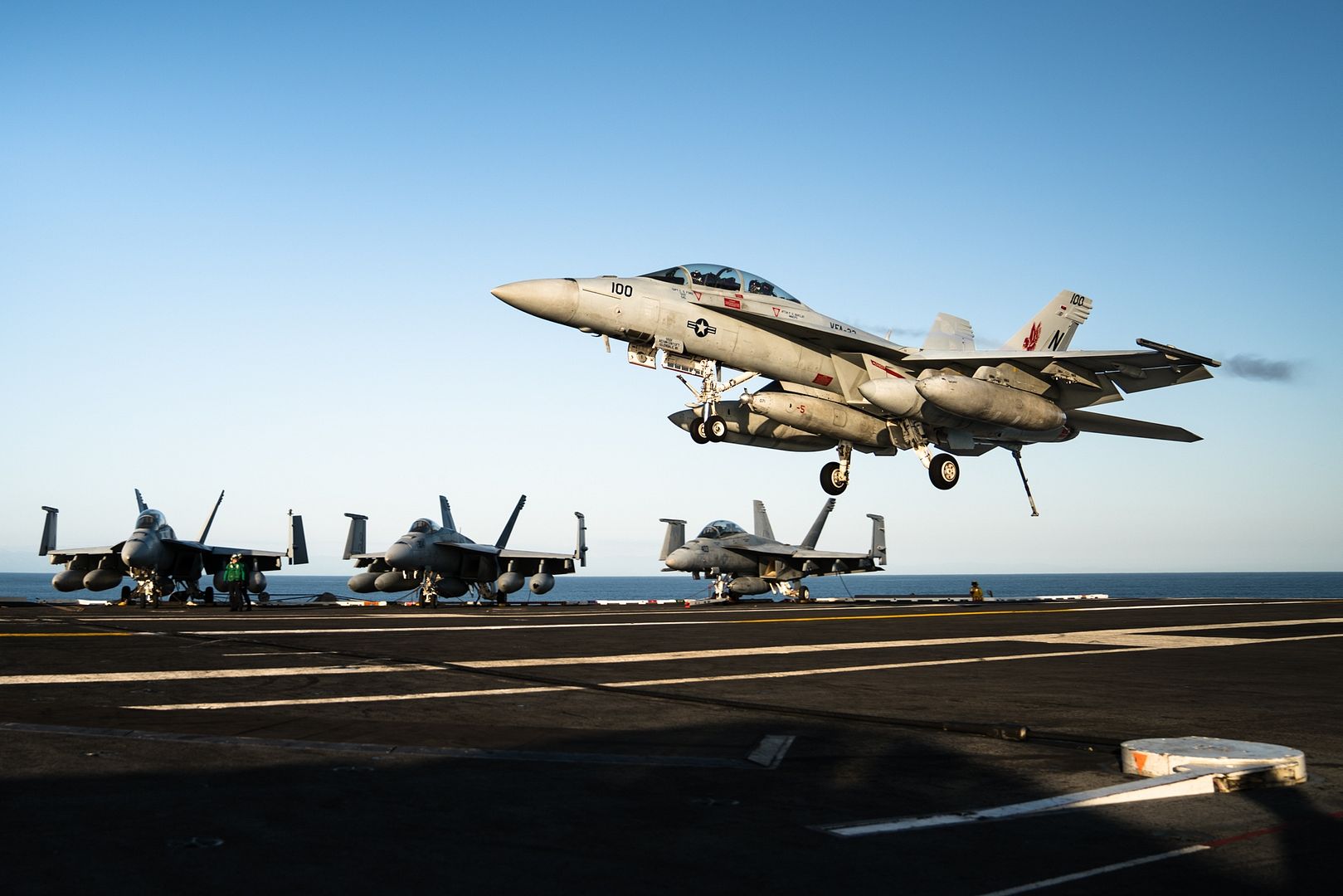
PACIFIC OCEAN (April 21, 2017) An F/A-18E Super Hornet, assigned to the Stingers of Strike Fighter Attack Squadron (VFA) 113, prepares to land on the flight deck of the aircraft carrier USS Theodore Roosevelt (CVN 71). Theodore Roosevelt is underway conducting a tailored ship?s training availability off the coast of California. (U.S. Navy Photo by Mass Communication Specialist 3rd Class Spencer Roberts/Released)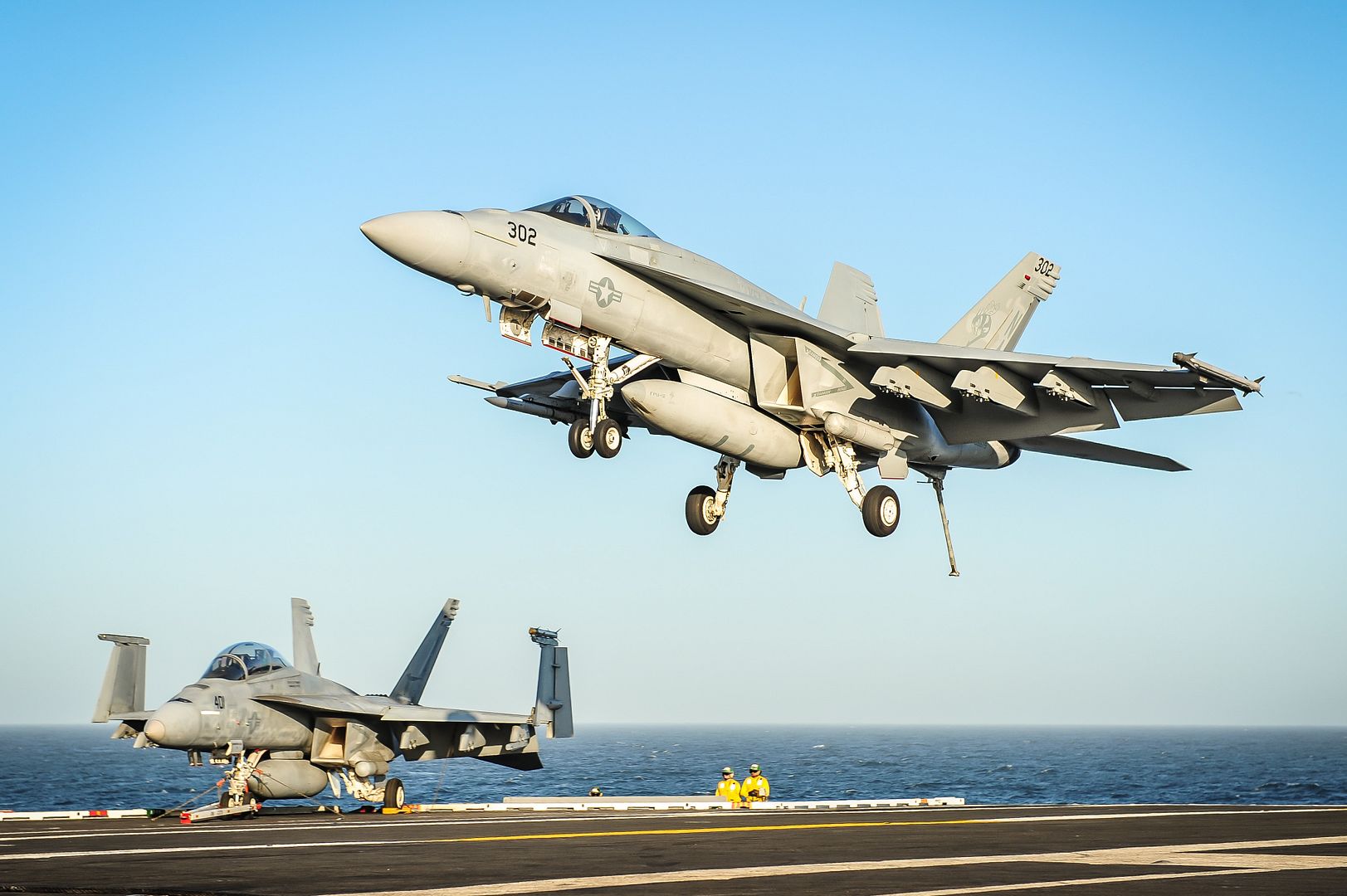
PACIFIC OCEAN (April 24, 2017) An MV-22B Osprey, assigned to Marine Medium Tiltrotor Squadron (VMM) 163 (Reinforced), embarked aboard the amphibious assault ship USS Makin Island (LHD , flies above Wake Island. Makin Island, the flagship for the Makin Island Amphibious Ready Group, with the embarked 11th Marine Expeditionary Unit, is operating in the Pacific Ocean to enhance amphibious capability with regional partners and to serve as a ready-response force for any type of contingency. (U.S. Navy photo by Mass Communication Specialist 1st Class Mathew Diendorf)
, flies above Wake Island. Makin Island, the flagship for the Makin Island Amphibious Ready Group, with the embarked 11th Marine Expeditionary Unit, is operating in the Pacific Ocean to enhance amphibious capability with regional partners and to serve as a ready-response force for any type of contingency. (U.S. Navy photo by Mass Communication Specialist 1st Class Mathew Diendorf) 
Helicopter Maritime Strike Squadron (HSM) 79 Commanding Officer Cmdr. Marc Cantu pilots an MH-60R Seahawk helicopter with his copilot Lt.j.g. Jimmy Temple near San Diego, California, April 20, 2017. HSM-79 is the Navy?s newest HSM squadron conducting primary missions of anti-submarine and anti-surface warfare. (U.S. Navy Combat Camera Photo by Mass Communication Specialist 1st Class Benjamin A. Lewis)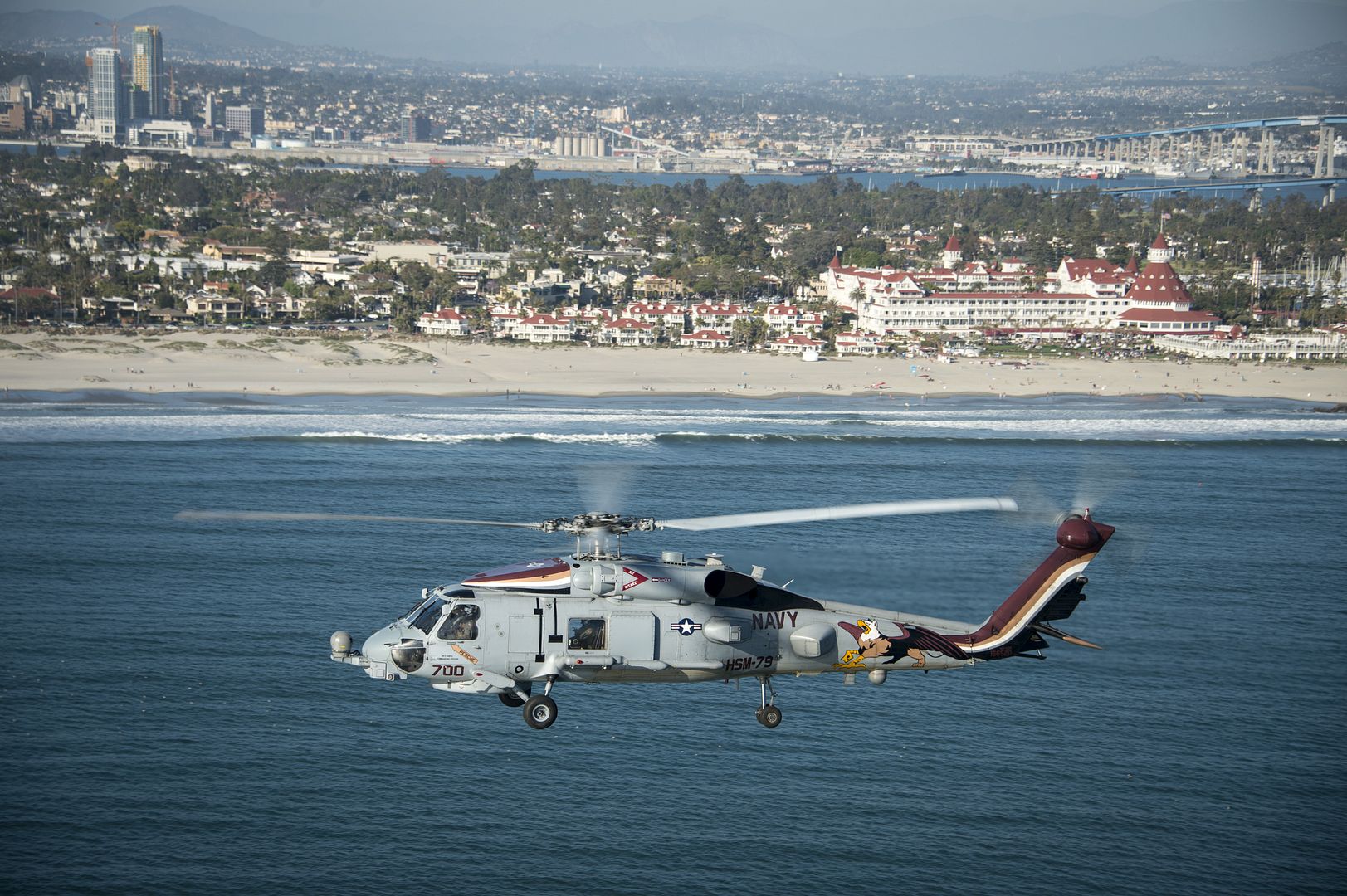
ST. LOUIS, April 24, 2017 ? Boeing [NYSE: BA] and partner Saab [Stockholm: SAABB] have completed the first flight of their second production-ready T-X aircraft, which is identical to the first and designed specifically for the U.S. Air Force advanced pilot training requirement.
During the one-hour flight, lead T-X Test Pilot Steve Schmidt and Boeing Test Pilot for Air Force Programs Matt Giese validated key aspects of the aircraft and further demonstrated the low-risk and performance of the design, proving its repeatability in manufacturing.
?The jet handled exactly like the first aircraft and the simulator, meeting all expectations,? said Giese. ?The front and back cockpits work together seamlessly and the handling is superior. It?s the perfect aircraft for training future generations of combat pilots.?
Both pilots trained for the flight using the complete Boeing T-X system, which includes ground-based training and simulation.
?Our successful flight test program is a testament to the fact that our offering is the right choice for the U.S. Air Force,? said Schmidt. ?This aircraft was built to Air Force requirements and designed to fulfill the Air Education and Training Command mission.?
The Boeing T-X aircraft has one engine, twin tails, stadium seating, and an advanced cockpit with embedded training. The all-new, purpose-built design offers flexibility to evolve as technology, missions, and training needs change.
Boeing and Saab revealed their design in September 2016 and flew the first aircraft last December.
T-X will replace the Air Force?s aging T-38 aircraft. Initial operating capability is planned for 2024.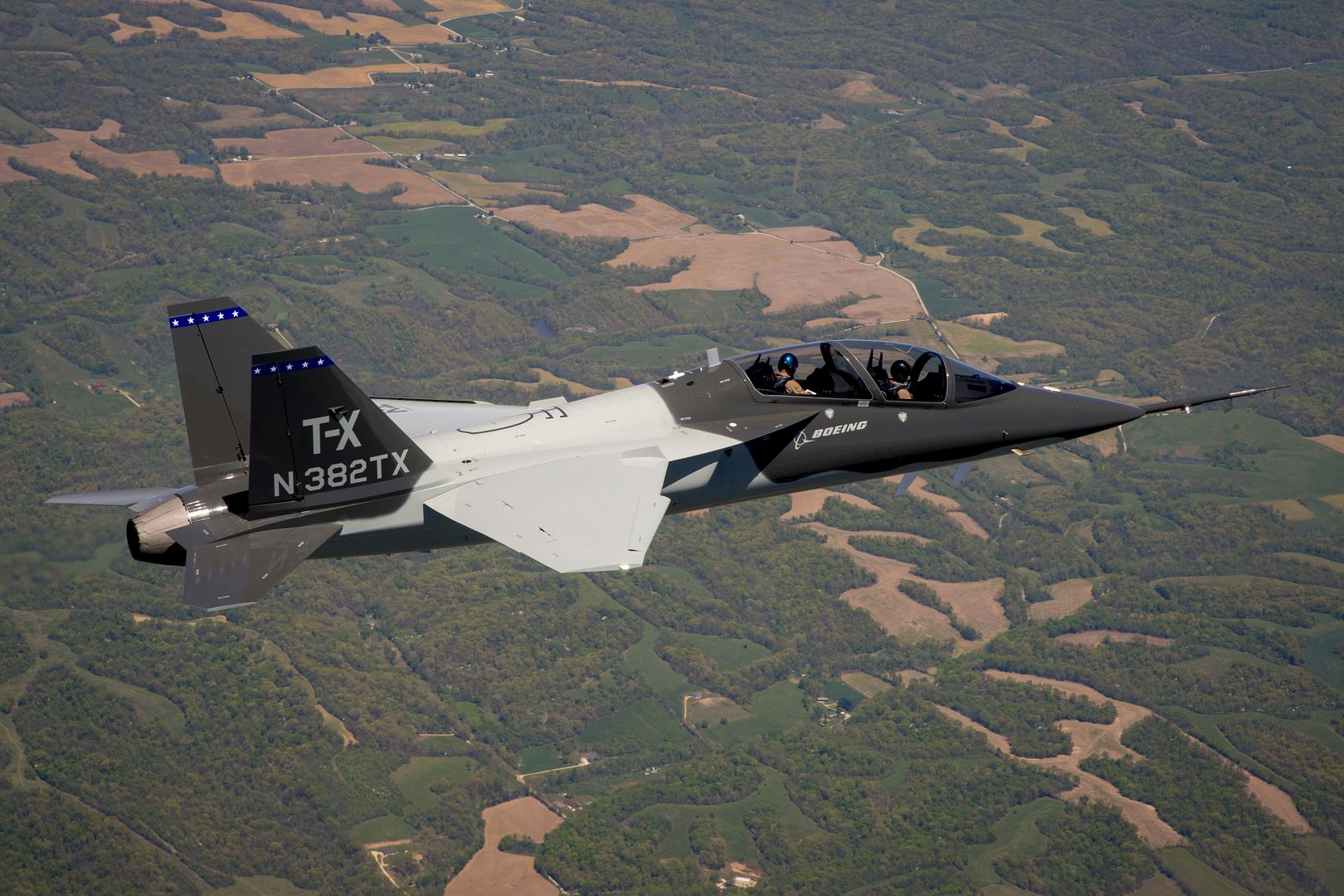
24 April 2017 Press Release
24th April 2017, Toulouse - Asiana Airlines of South Korea has taken delivery of its first A350-900, becoming the 12th airline to operate the world?s newest and most efficient twin engine widebody airliner.
Asiana?s A350-900 is configured with a three class layout with a total of 311 seats, comprising 28 in Business Smartium, convertible to fully flat beds, 36 in Economy Smartium and 247 in the main cabin.
Altogether Asiana has ordered 30 A350s and will initially operate the aircraft on flights within Asia. From the third quarter of 2017, the carrier will deploy the aircraft on premier long haul routes to Europe and the US, beginning with services from Seoul to London and San Francisco.
The A350 XWB features the latest aerodynamic design, carbon fiber fuselage and wings, plus new fuel-efficient Rolls-Royce engines. Together, these latest technologies translate into unrivalled levels of operational efficiency, with a 25 per cent reduction in fuel burn and emissions, and significantly lower maintenance costs. The spaciousness, quietness, beautiful interior and mood lighting in the cabin contribute to superior levels of comfort and well-being, setting new standards in terms of flight experience for all passengers.
To date, Airbus has recorded a total of 821 firm orders for the A350 XWB from 44 customers worldwide, already making it one of the most successful widebody aircraft ever.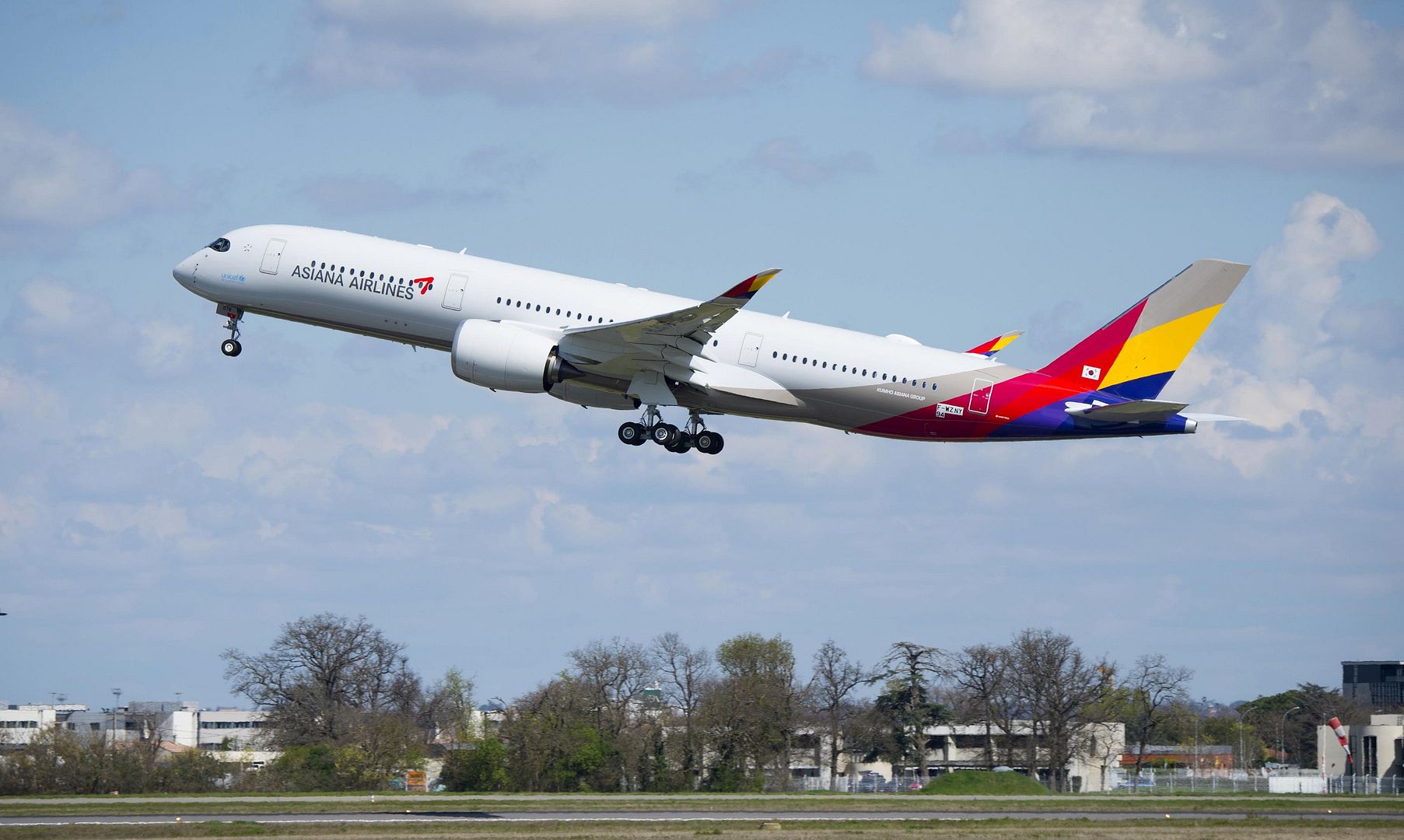
RAF Typhoons have arrived at Mihail Kogalniceanu (MK) airbase near Constanta, in Romania for the first time in support of the NATO air policing mission.
135 Expeditionary Air Wing (EAW) consists of 150 personnel drawn from across the RAF, whose mission is to keep the fast jets flying during their four month deployment.
The 135 EAW Commander, Wg Cdr Coe said: ? I am extremely heartened by the very warm welcome that we have received from both our Romanian hosts and American allies here at MK?.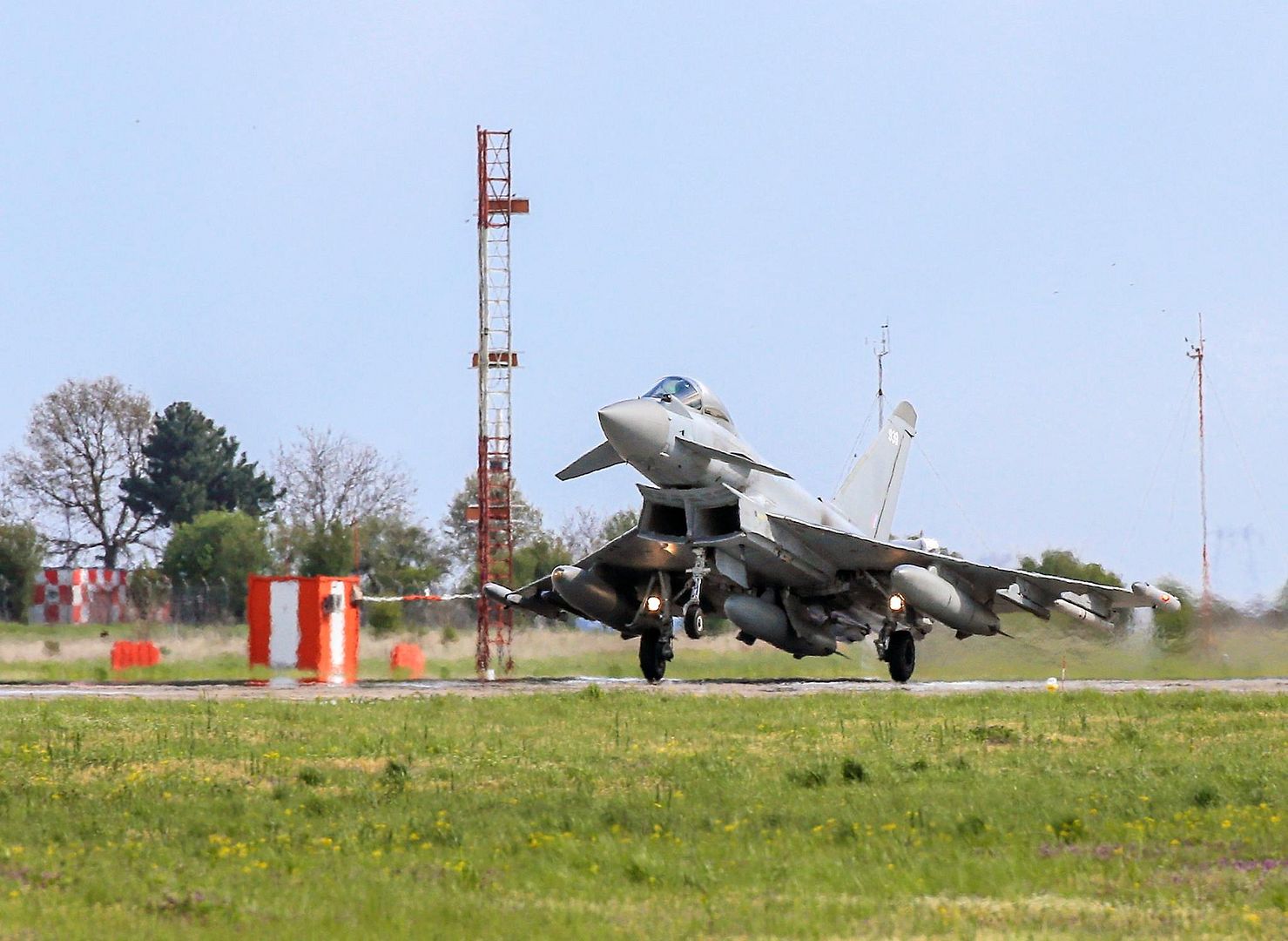
The RAF is no stranger to the NATO air policing mission, it has deployed Typhoons to the Baltic States in recent years in support of the long-standing routine NATO mission.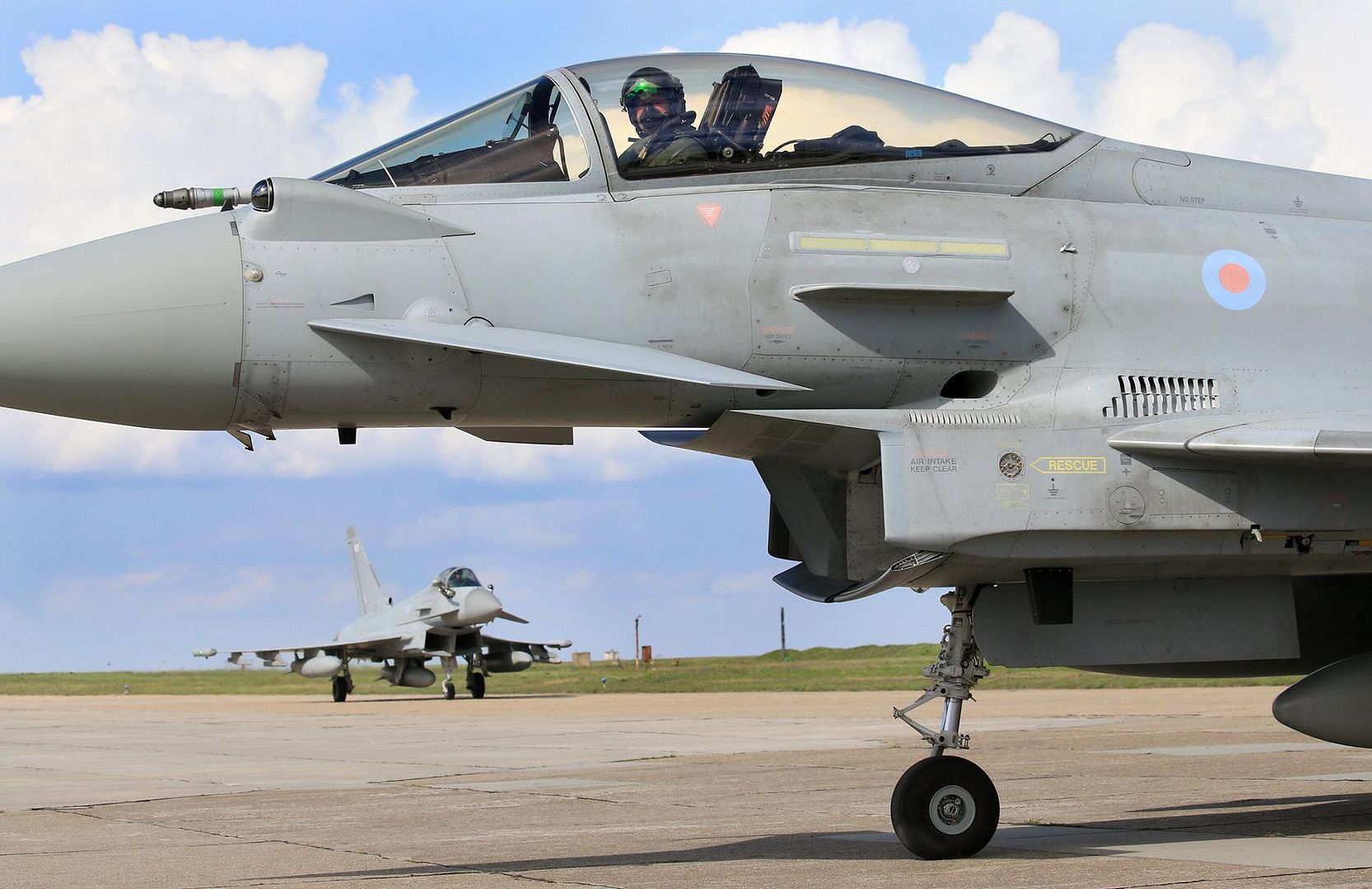
-
 Main AdminTwo UH-1Y Hueys, with Marine Light Attack Helicopter Squadron- 267, fly in a formation during a Mission Rehearsal Exercise on Okinawa, Japan, April 26, 2017. The Mission Rehearsal Exercise is conducted to utilize the different assets of III Marine Expeditionary Force and integrate them as a combined unit to accomplish the goals of III MEF in the Pacific Region. (U.S. Marine Corps photo by MCIPAC Combat Camera Lance Cpl. Juan C. Bustos)
Main AdminTwo UH-1Y Hueys, with Marine Light Attack Helicopter Squadron- 267, fly in a formation during a Mission Rehearsal Exercise on Okinawa, Japan, April 26, 2017. The Mission Rehearsal Exercise is conducted to utilize the different assets of III Marine Expeditionary Force and integrate them as a combined unit to accomplish the goals of III MEF in the Pacific Region. (U.S. Marine Corps photo by MCIPAC Combat Camera Lance Cpl. Juan C. Bustos)
An AH-1W Super Cobra begin its pre-flight checks, prior to a Mission Rehearsal Exercise on Marine Corps Air Station Futenma, Okinawa, Japan, April 26, 2017. The Mission Rehearsal Exercise is conducted to utilize the different assets of III Marine Expeditionary Force and integrate them as a combined unit to accomplish the goals of III MEF in the Pacific Region. (U.S. Marine Corps photo by MCIPAC Combat Camera Lance Cpl. Juan C. Bustos)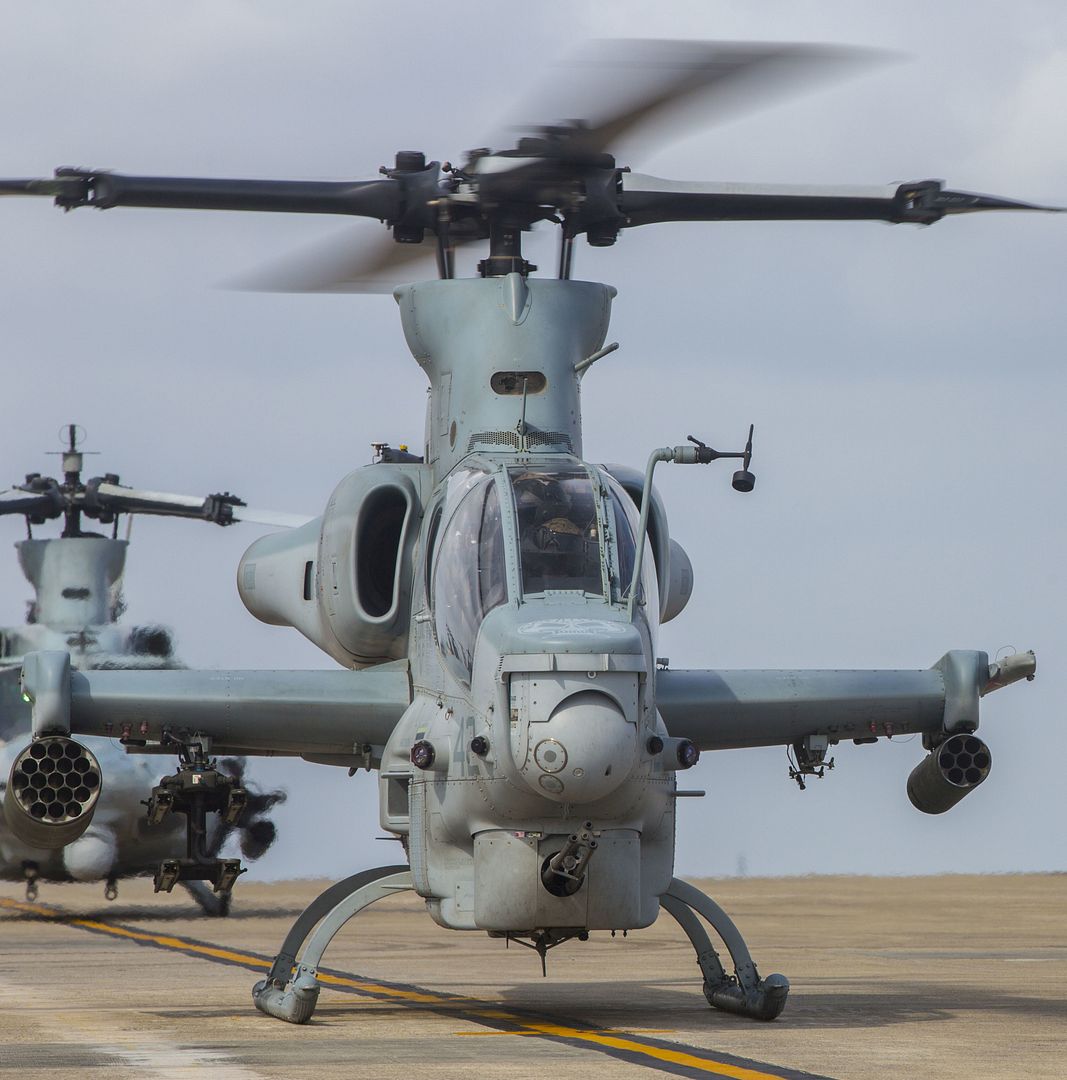
PHILIPPINE SEA (April 24, 2017) An MH-60R Sea Hawk from the Helicopter Maritime Strike Squadron (HSM) 78 ?Blue Hawks? fires chaff flares during a training exercise near the aircraft carrier USS Carl Vinson (CVN 70). U.S. Navy aircraft carrier strike groups have patrolled the Indo-Asia Pacific routinely for more than 70 years. (U.S. Navy photo by Mass Communication Specialist 2nd Class Sean M. Castellano/Released)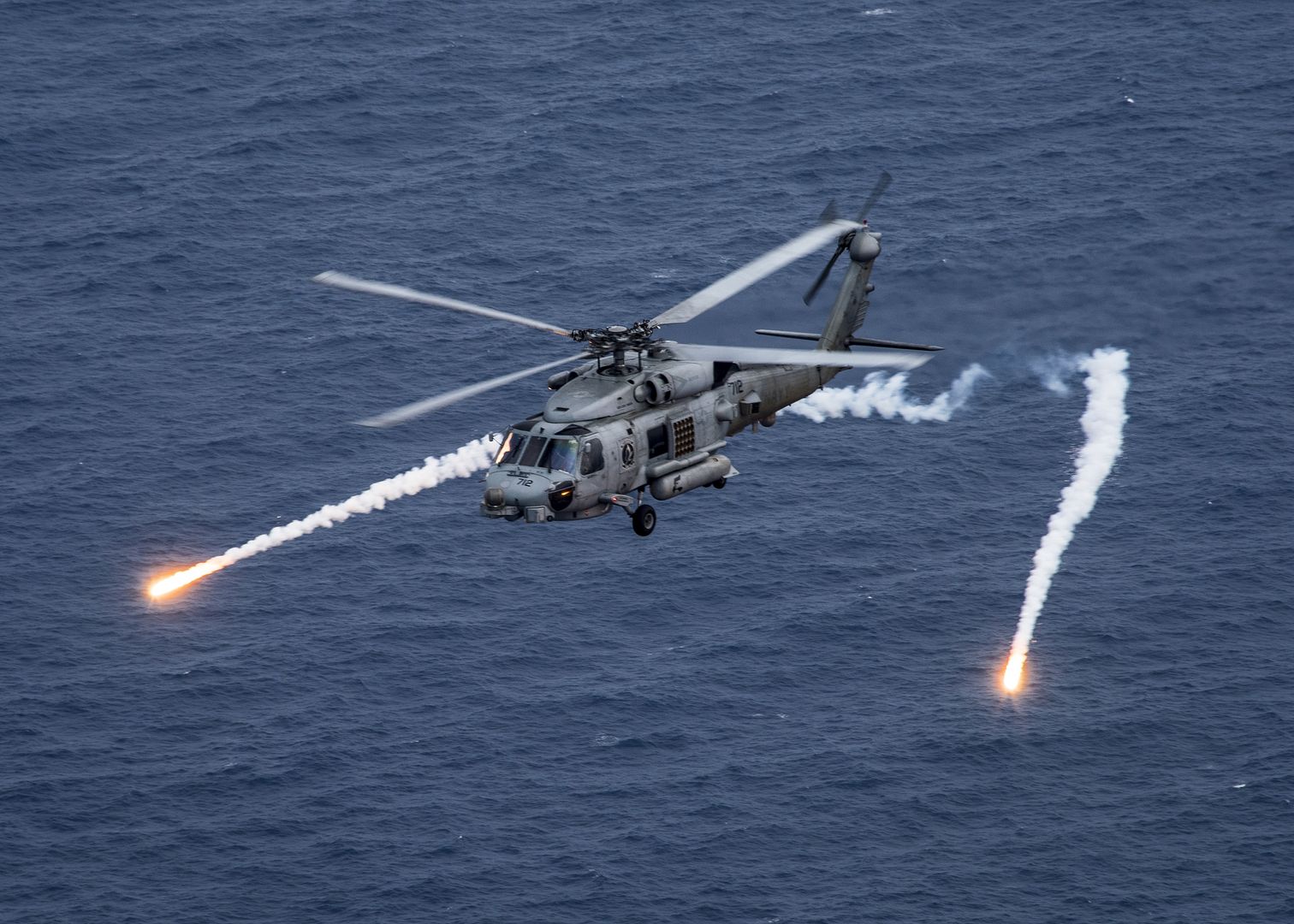
An F-15E Strike Eagle takes-off for a training sortie at Royal Air Force Lakenheath, England, April 19. Nighttime flying operations are required to maintain aircrew proficiency and ensure our pilots remain ready to meet future challenges. (U.S. Air Force photo/Staff Sgt. Emerson Nu?ez)
An F-15E Strike Eagle stands by to take off for a training sortie at Royal Air Force Lakenheath, England, April 19. The Strike Eagle is a dual-role fighter designed to perform air-to-air and air-to-ground missions. (U.S. Air Force photo/Staff Sgt. Emerson Nu?ez)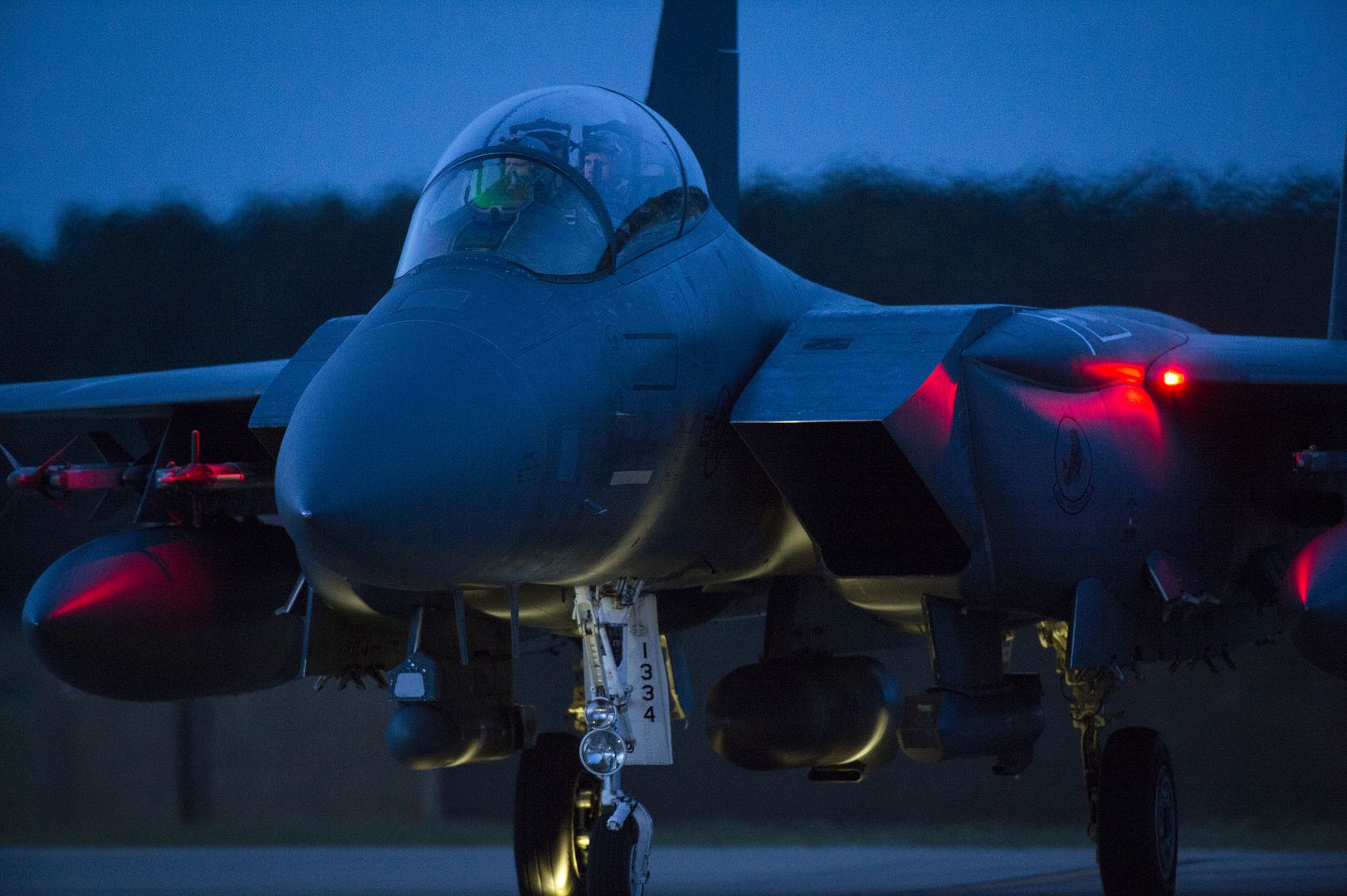
A McDonnell F-4E Phantom II from the 17th Fighter Squadron, Chung Ju Air Base, Republic of Korea takes off during Exercise MAX THUNDER 17 at Kunsan Air Base, Republic of Korea, April 18, 2017. This large-scale employment exercise increases the U.S. and ROK?s ability to work together shoulder-to-shoulder and ultimately enhances the U.S. and ROK capability to maintain peace in the region. (U.S. Air Force photo by Senior Airman Colville McFee/Released)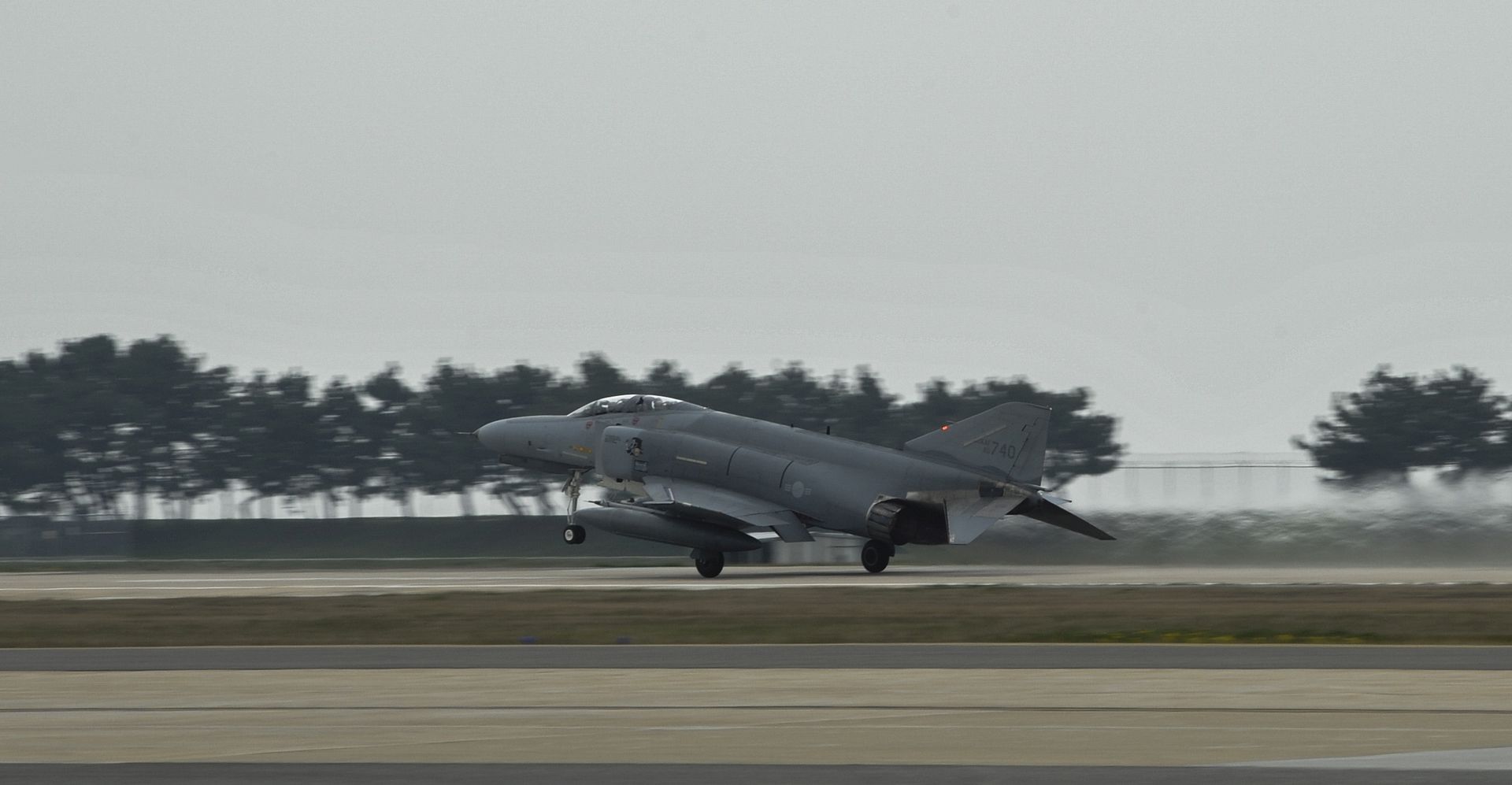
-
 Main AdminU.S. Air Force F-16 Fighting Falcons taxi down the runway as U.S. Marine Corps AV-8B Harriers take off during Exercise MAX THUNDER 17 at Kunsan Air Base, Republic of Korea, April 26, 2017. Max Thunder serves as an opportunity for U.S. and ROK forces to train together and sharpen tactical skills for the defense of the Asia-Pacific region. It is an annual military-flying exercise built to promote interoperability between U.S. and ROK forces. (U.S. Marine Corps photo by Lance Cpl. Carlos Jimenez)
Main AdminU.S. Air Force F-16 Fighting Falcons taxi down the runway as U.S. Marine Corps AV-8B Harriers take off during Exercise MAX THUNDER 17 at Kunsan Air Base, Republic of Korea, April 26, 2017. Max Thunder serves as an opportunity for U.S. and ROK forces to train together and sharpen tactical skills for the defense of the Asia-Pacific region. It is an annual military-flying exercise built to promote interoperability between U.S. and ROK forces. (U.S. Marine Corps photo by Lance Cpl. Carlos Jimenez)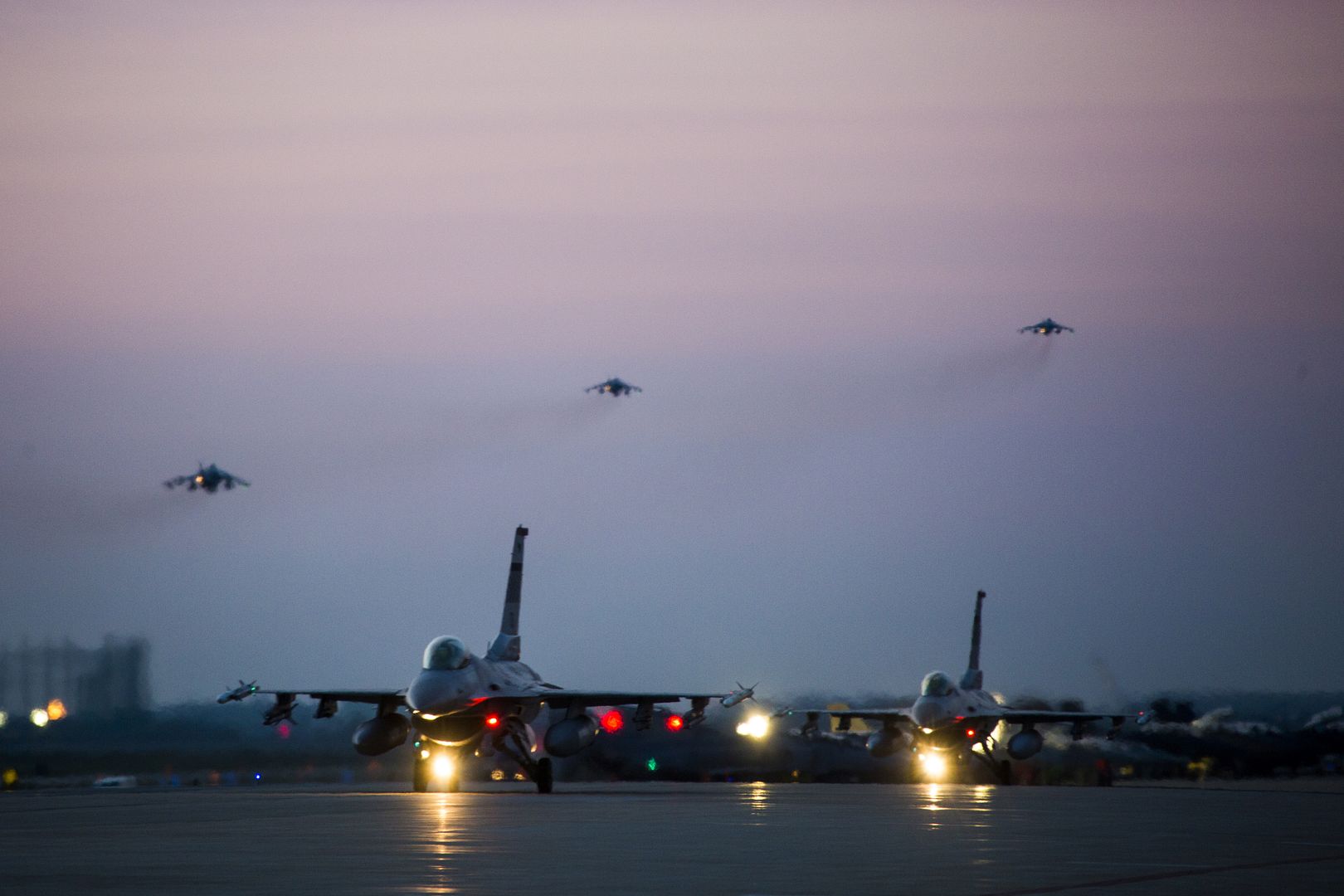
U.S. Marine Corps AV-8B Harriers with Marine Attack Squadron (VMA) 311 prepare to take off during Exercise MAX THUNDER 17 at Kunsan Air Base, Republic of Korea, April 26, 2017. Max Thunder serves as an opportunity for U.S. and ROK forces to train together and sharpen tactical skills for the defense of the Asia-Pacific region. It is an annual military-flying exercise built to promote interoperability between U.S. and ROK forces. (U.S. Marine Corps photo by Lance Cpl. Carlos Jimenez)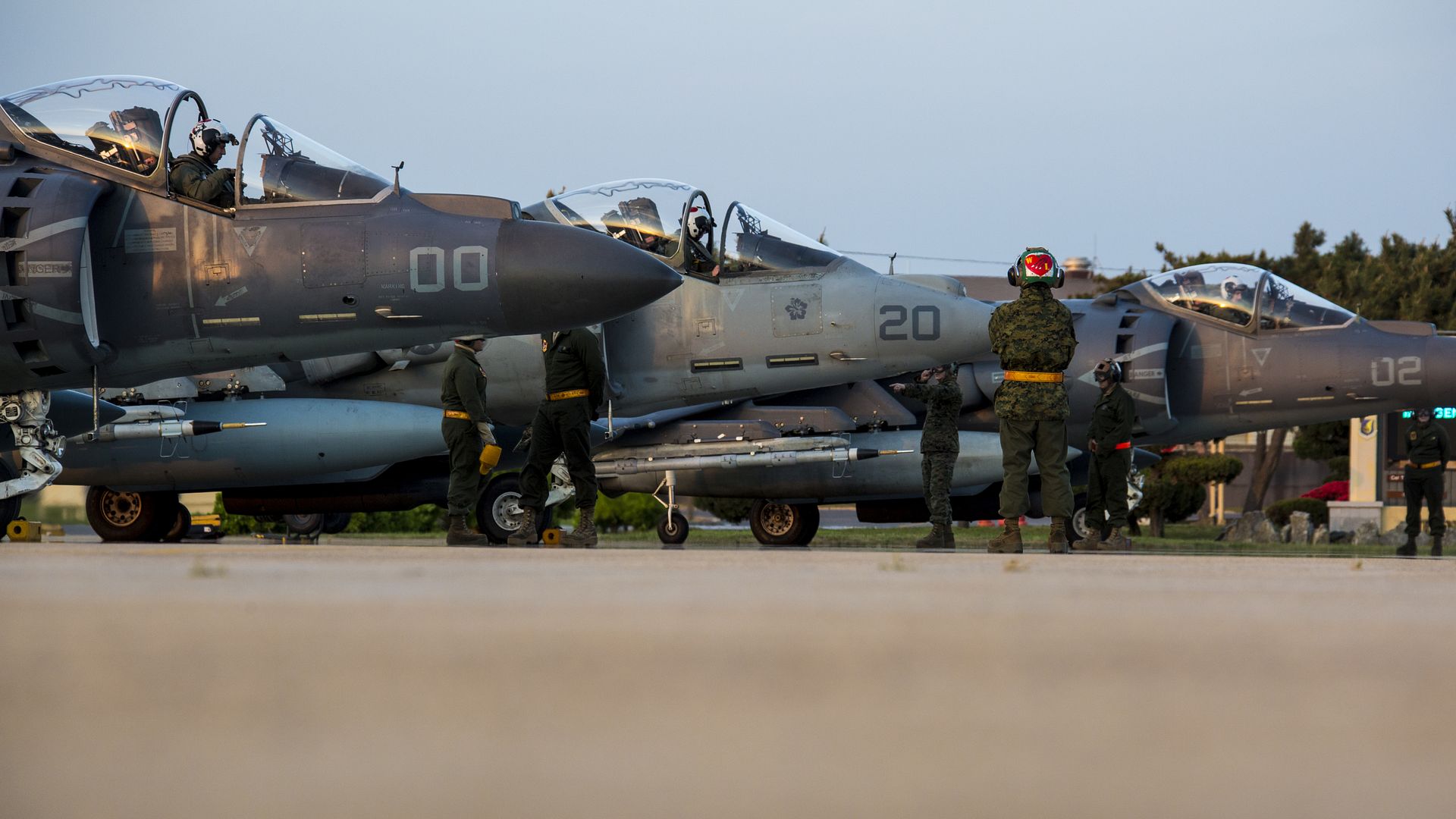
A Republic of Korea F-16 Fighting Falcon takes off during Exercise MAX THUNDER 17 at Kunsan Air Base, Republic of Korea, April 26, 2017. Max Thunder serves as an opportunity for U.S. and ROK forces to train together and sharpen tactical skills for the defense of the Asia-Pacific region. It is an annual military-flying exercise built to promote interoperability between U.S. and ROK forces. (U.S. Marine Corps photo's by Lance Cpl. Carlos Jimenez)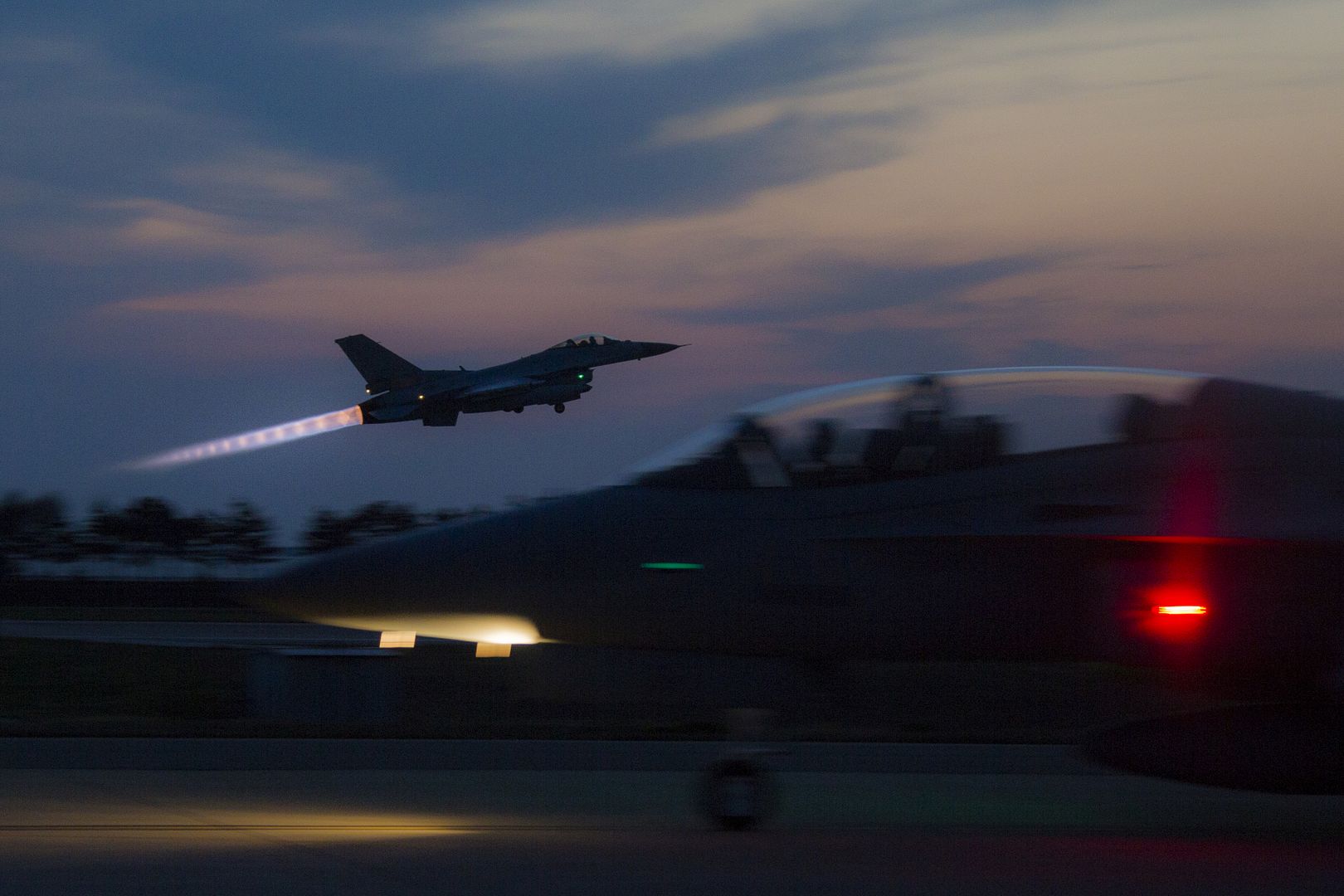
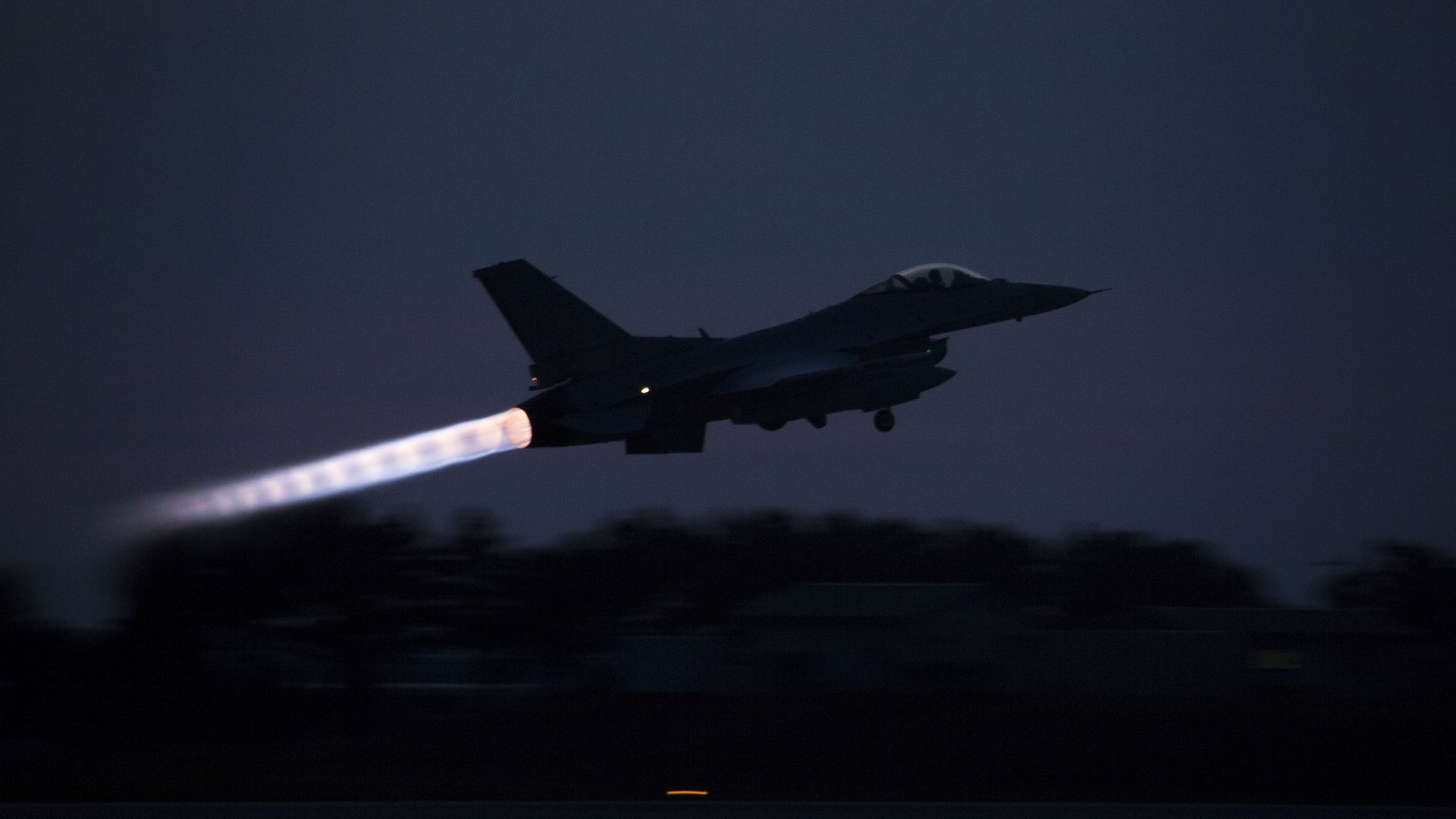
U.S. Marines with Marine Attack Squadron (VMA) 311 prepare for the AV-8B Harriers to take off during Exercise MAX THUNDER 17 at Kunsan Air Base, Republic of Korea, April 26, 2017. Max Thunder serves as an opportunity for U.S. and ROK forces to train together and sharpen tactical skills for the defense of the Asia-Pacific region. It is an annual military-flying exercise built to promote interoperability between U.S. and ROK forces. (U.S. Marine Corps photo by Lance Cpl. Carlos Jimenez)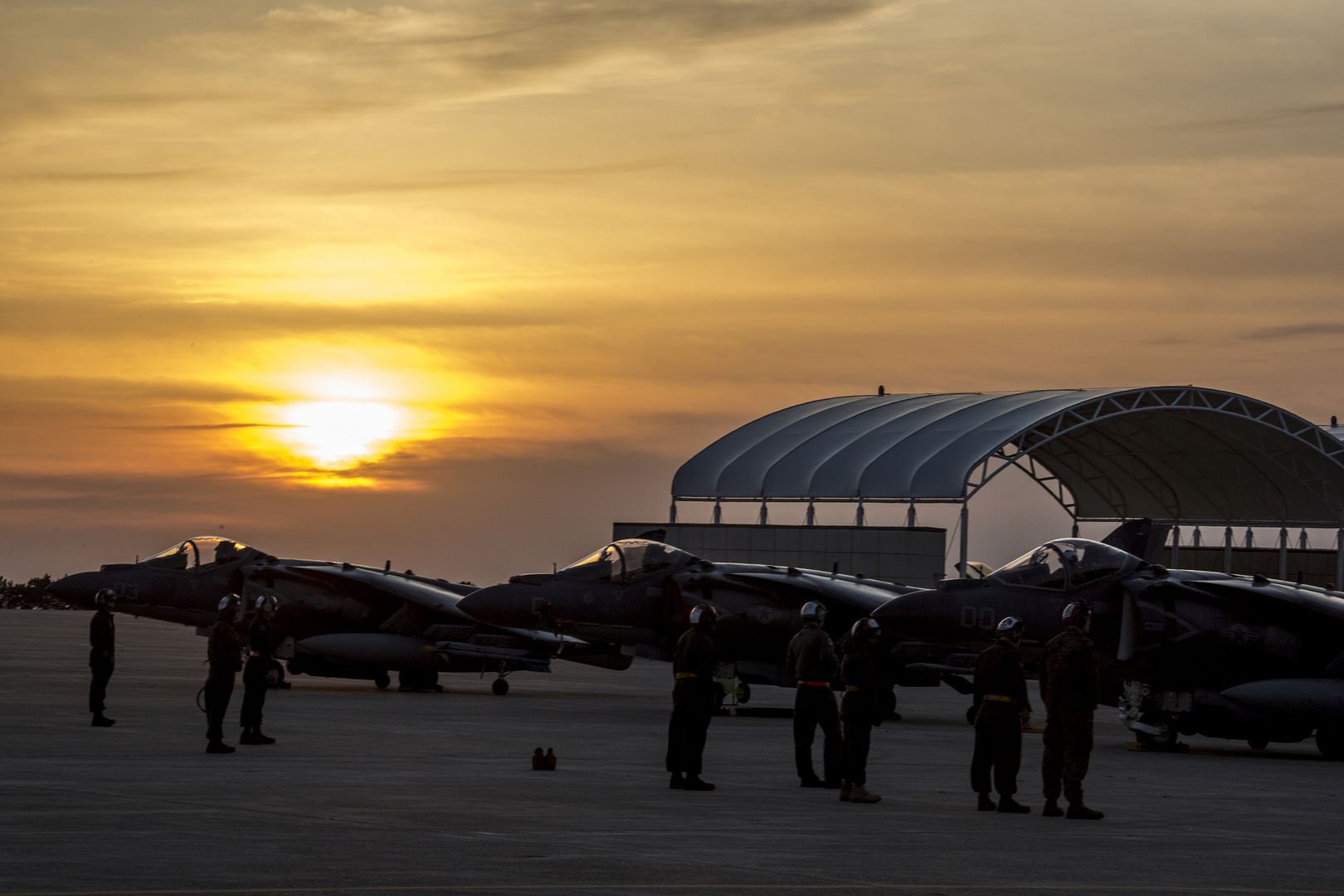
ARABIAN GULF (April 24, 2017) An F/A-18F Super Hornet assigned to the "Blacklions" of Strike Fighter Squadron (VFA) 213 lands on flight deck of the aircraft carrier USS George H.W. Bush (CVN 77). The ship is deployed in the U.S. 5th Fleet area of operations in support of maritime security operations designed to reassure allies and partners, and preserve the freedom of navigation and the free flow of commerce in the region. (U.S. Navy photo by Mass Communication Specialist 3rd Class Matt Matlage/Released)
ARABIAN GULF (April 24, 2017) An E-2C Hawkeye attached to the "Bear Aces" of Carrier Airborne Early Warning Squadron (VAW) 124 flies over the aircraft carrier USS George H.W. Bush (CVN 77) (GHWB). GHWB is deployed in the U.S. 5th Fleet area of operations in support of maritime security operations designed to reassure allies and partners, and preserve the freedom of navigation and the free flow of commerce in the region. (U.S. Navy photo by Mass Communication Specialist 3rd Class Matt Matlage/Released)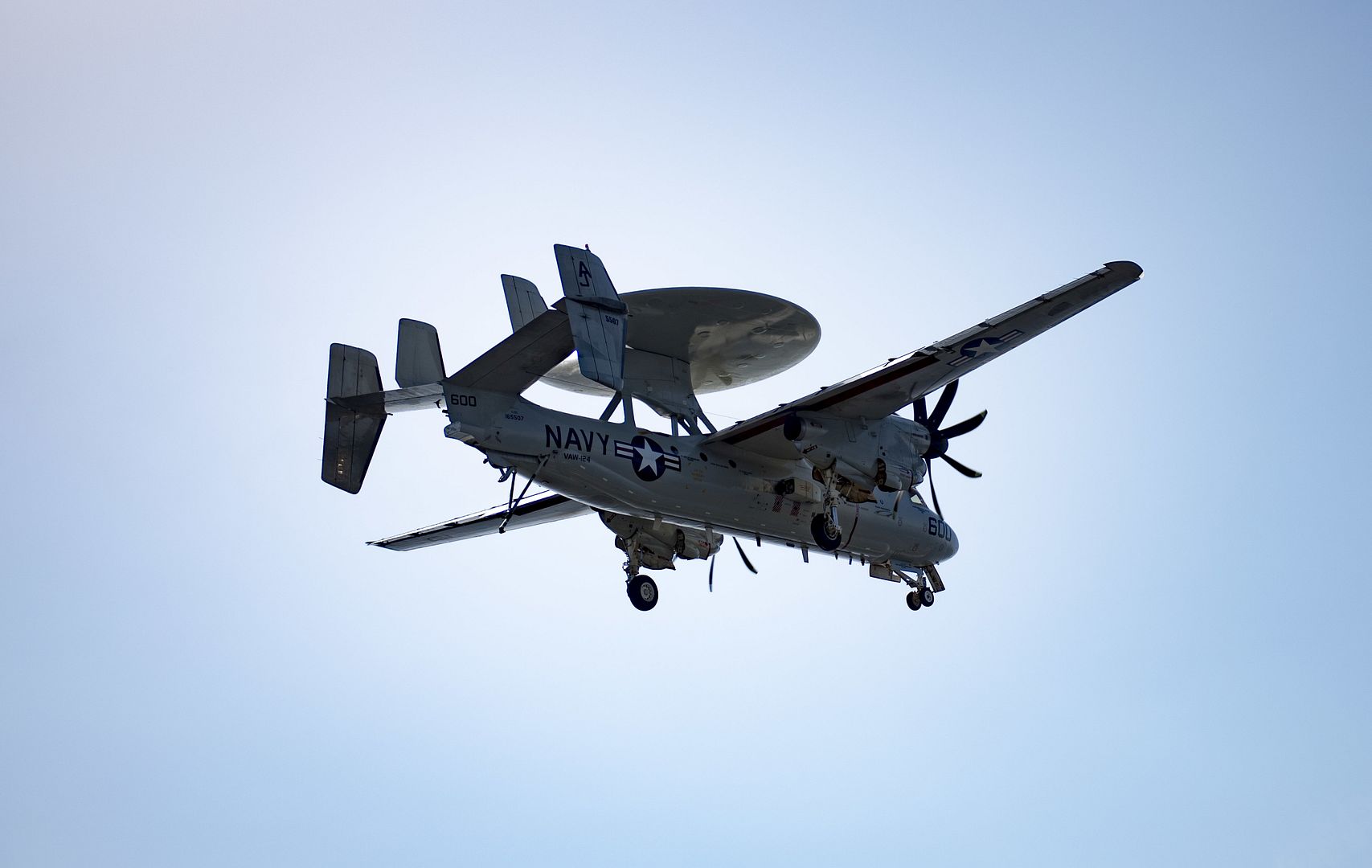
PACIFIC OCEAN (April 25, 2017) ? An MH-60S Seahawk assigned to the Indians of Helicopter Sea Combat Squadron (HSC) 6 drops supplies on the flight deck aboard the aircraft carrier USS Theodore Roosevelt (CVN 71) during a vertical replenishment. Theodore Roosevelt is underway conducting a tailored ship?s training availability off the coast of California. (U.S. Navy photo by Mass Communication Specialist Seaman Nicholas R. Burgains/Released)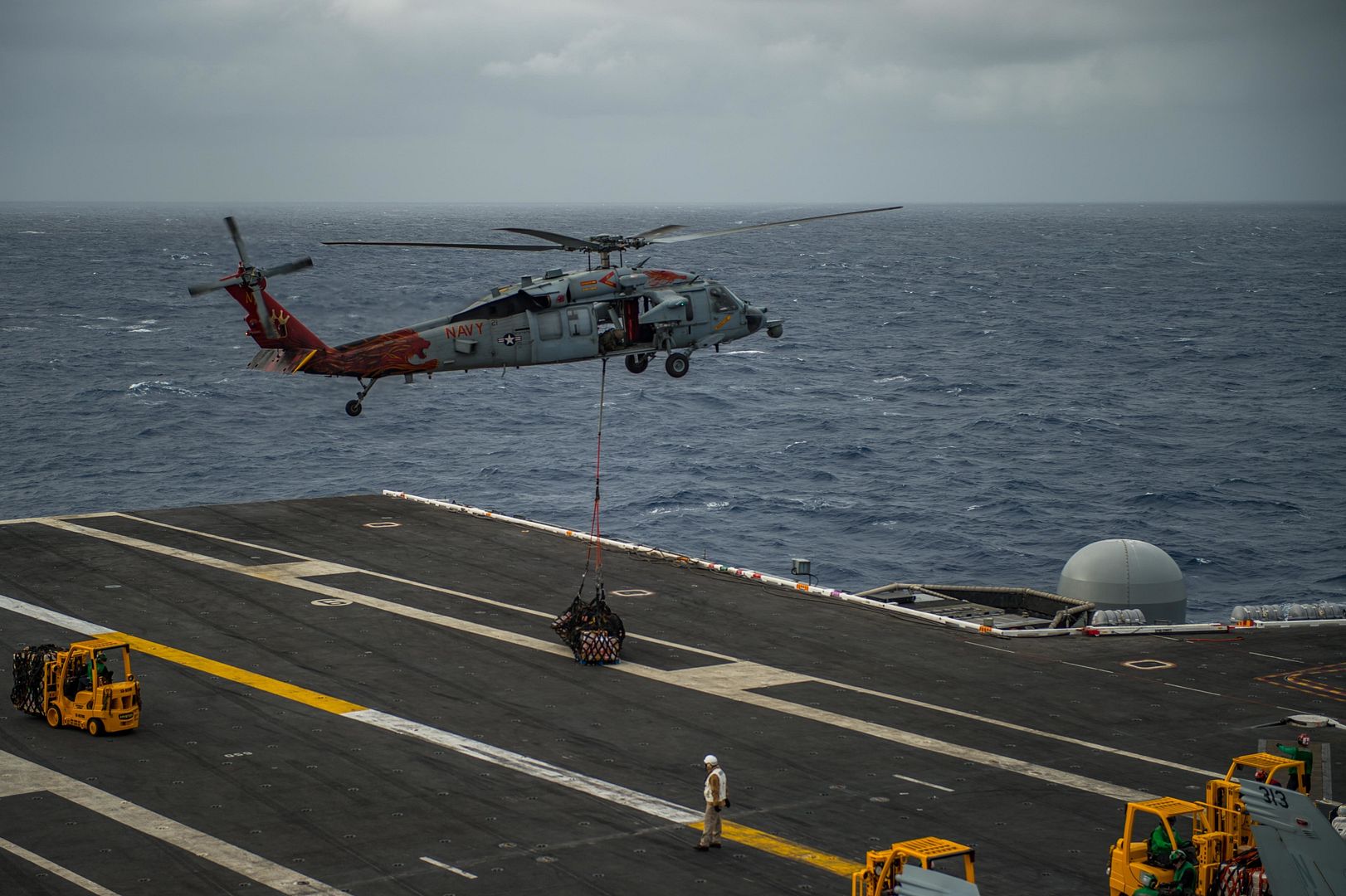
U.S. Air Force, French air force and Royal air force planes fly in a training airspace during ATLANTIC TRIDENT17 near Joint Base Langley-Eustis, Va., April 26, 2017. The exercise was designed to allow the sharing and development of techniques, tactics and procedures between the U.S. Air Force, FAF and RAF frontline fighters in order to fly, fight and win in modern highly-contested, anti-access/area denial environments. (U.S. Air Force photo's/Staff Sgt. Natasha Stannard)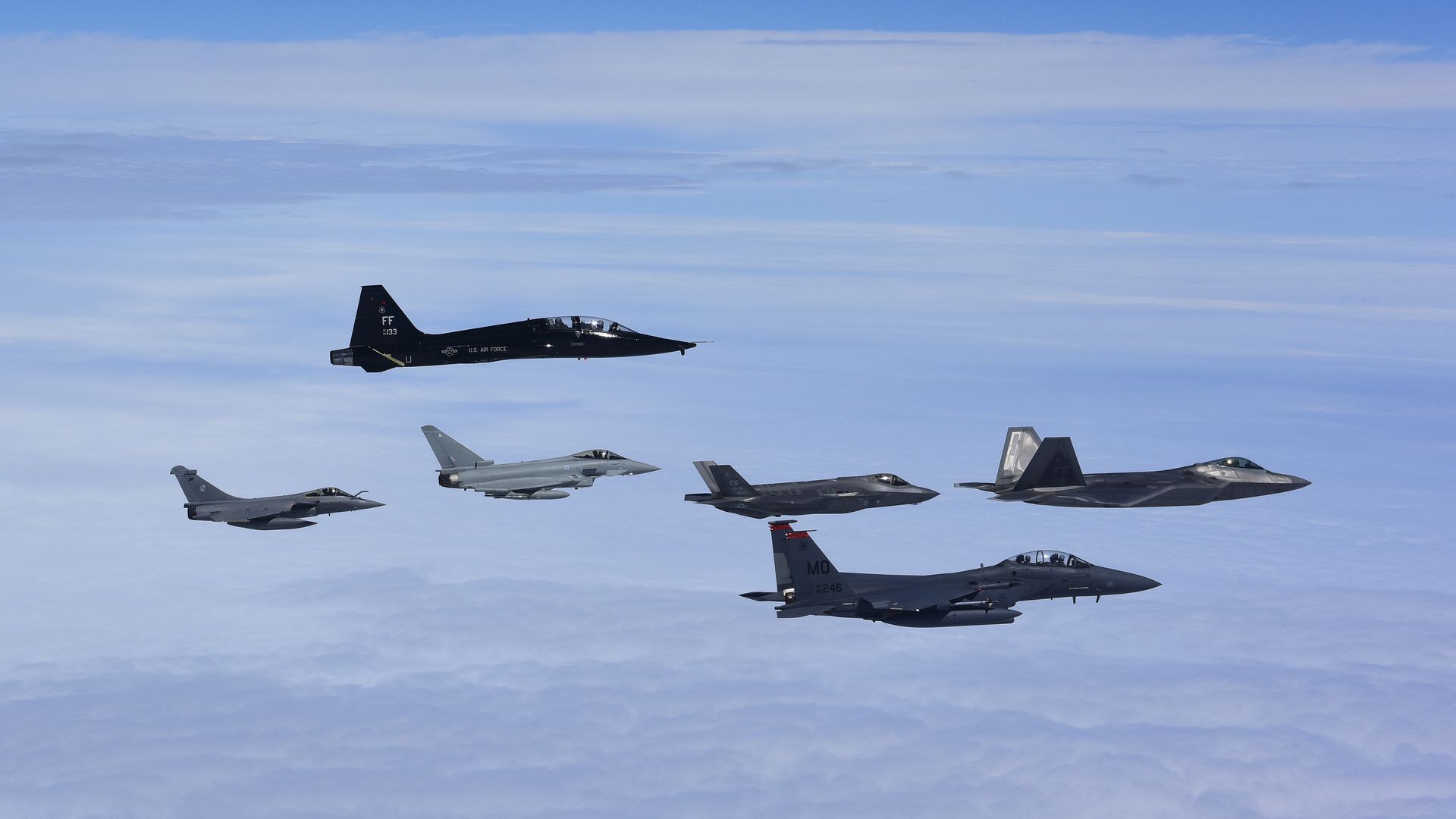


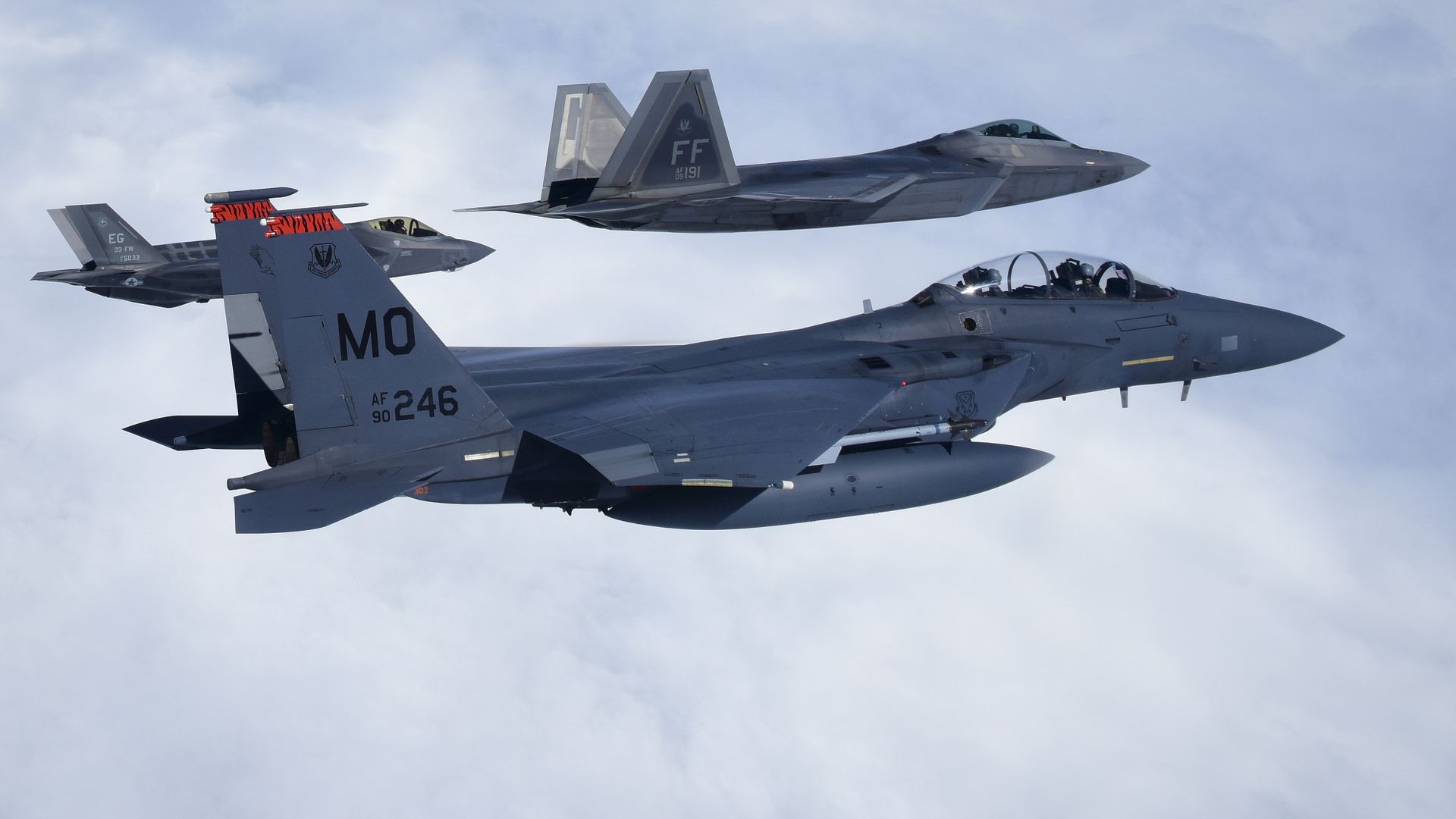
26 April 2017 Press Release
WOW air the low-fare airline based in Iceland has taken delivery of its first A320neo on lease from Air Lease Corporation. WOW air is an all Airbus operator with 12 aircraft in its fleet to date.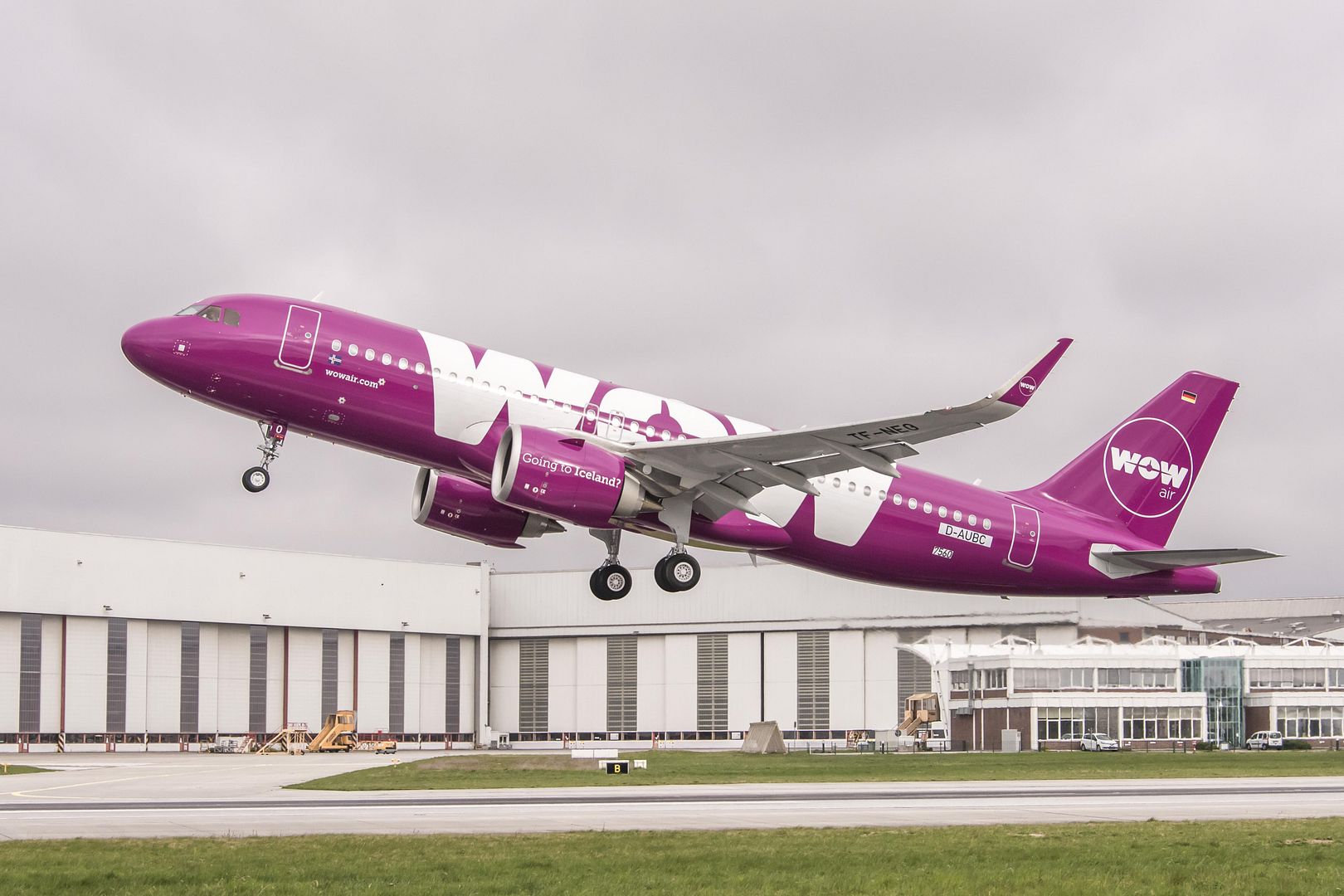
WOW air selected the A320neo for its low operating costs and excellent fuel efficiency. The aircraft will feature a single-class cabin layout with 180 seats. The airline has chosen CFM engines to power the aircraft that will operate throughout Europe.
The A320neo Family is the world?s best-selling single aisle product line with over 5,000 orders received from over 90 customers, capturing almost 60 percent share of the market. The A320neo Family incorporates latest technologies including new generation engines and Sharklet wing tip devices, which together deliver more than 15 percent in fuel savings from day one and 20 percent by 2020.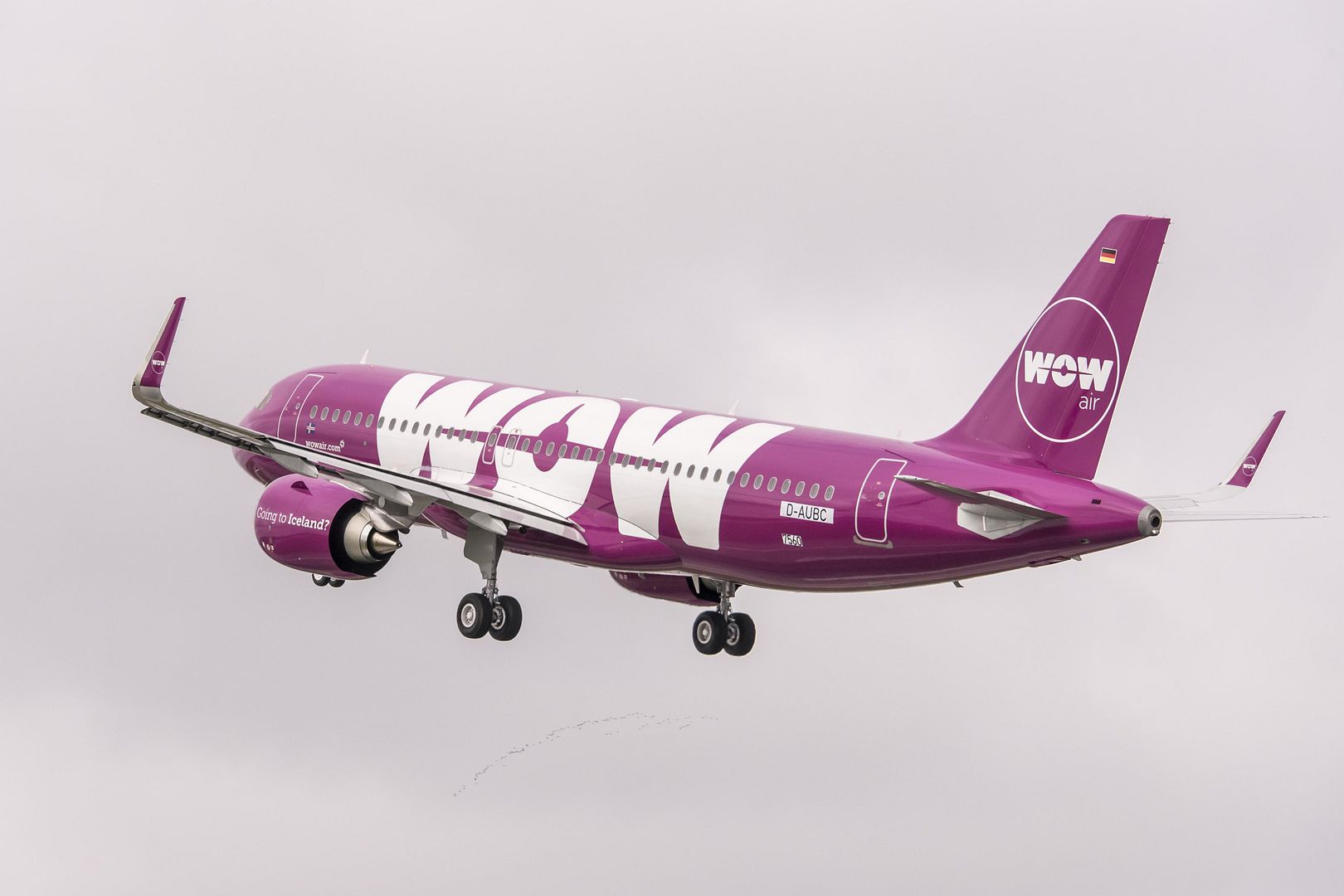
26 April 2017 Press Release
China Southern Airlines has signed a purchase agreement with Airbus for 20 A350-900s, becoming the latest customer for the aircraft.
China Southern Airlines now operates one of the largest Airbus fleet in the world with more than 300 Airbus aircraft in service, comprising the A320 Family, the A330 Family and five A380s.
Tan Wangeng, President of China Southern Airlines said: ?With its very long range capability, economic fuel consumption and spacious cabin, the A350 XWB is the ideal choice for our international long haul routes. The introduction of the A350 XWB will help to strengthen our position as one of the world?s leading international carriers.?
?We are proud to welcome China Southern Airlines as the latest airline to select the A350 XWB,? said John Leahy, Chief Operating Officer Customers, Airbus Commercial Aircraft. ?The unrivalled operational performance, fuel efficiency and cabin comfort of the A350 XWB will give China Southern Airlines a competitive edge on its international network.?
The A350 XWB features the latest aerodynamic design, carbon fiber fuselage and wings, plus new fuel-efficient Rolls-Royce engines. Together, these latest technologies translate into unrivalled levels of operational efficiency, with a 25 percent reduction in fuel burn and emissions, and significantly lower maintenance costs. The spaciousness, quietness, beautiful interior and mood lighting in the cabin contribute to superior levels of comfort and well-being, setting new standards in terms of in-flight experience for all passengers.
With this latest order, Airbus has recorded a total of 841 firm orders for the A350 XWB from 45 customers worldwide, making it one of the most successful widebody aircraft ever.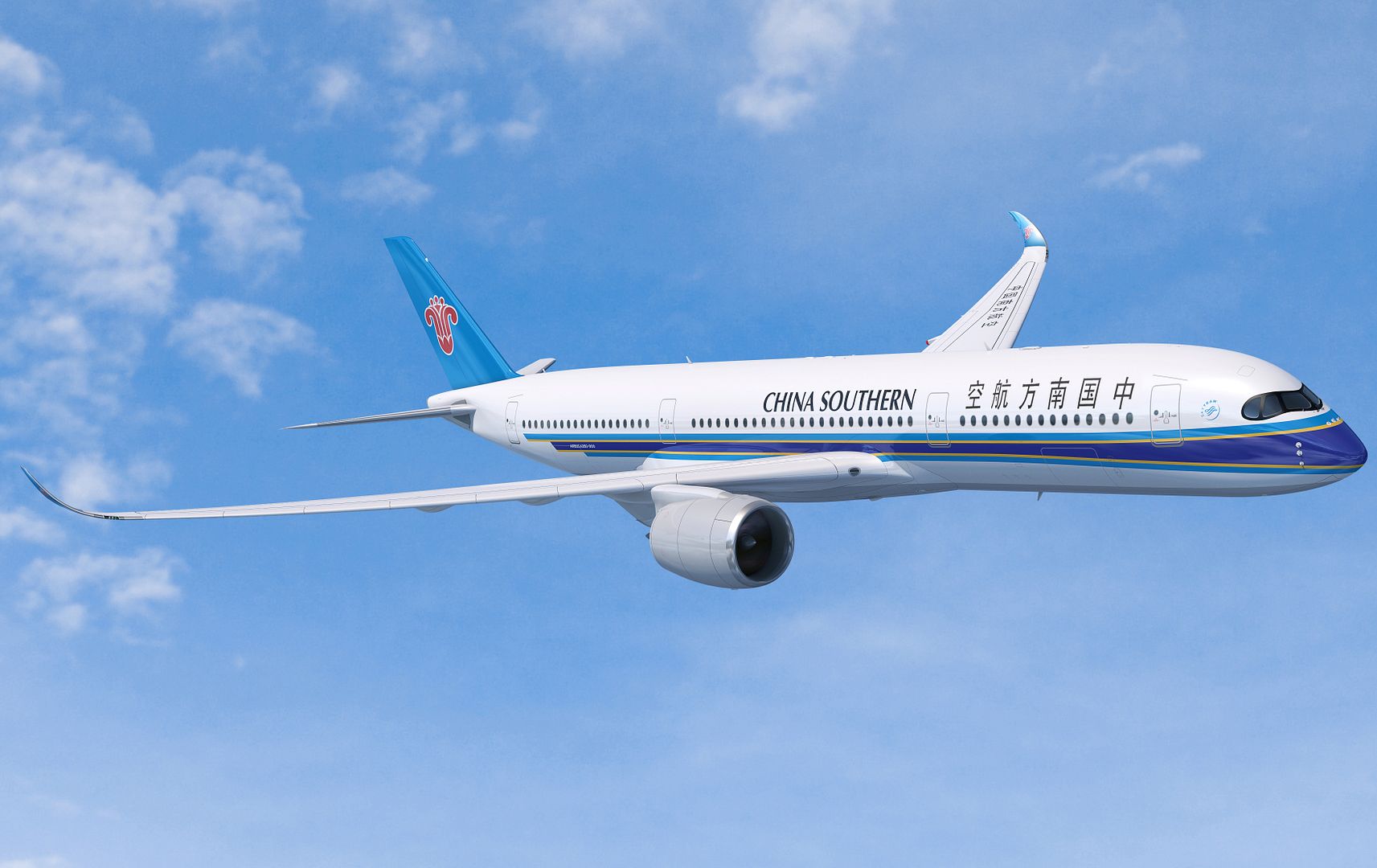
-
 Main AdminARABIAN GULF (April 25, 2017) An F/A-18F Super Hornet assigned to the "Black Lions" of Strike Fighter Squadron (VFA) 213 lands aboard the aircraft carrier USS George H.W. Bush (CVN 77). The ship is deployed to the U.S. 5th Fleet area of operations in support of maritime security operations designed to reassure allies and partners, and preserve the freedom of navigation and the free flow of commerce in the region. (U.S. Navy photo by Mass Communication Specialist 3rd Class Matt Matlage/Released)
Main AdminARABIAN GULF (April 25, 2017) An F/A-18F Super Hornet assigned to the "Black Lions" of Strike Fighter Squadron (VFA) 213 lands aboard the aircraft carrier USS George H.W. Bush (CVN 77). The ship is deployed to the U.S. 5th Fleet area of operations in support of maritime security operations designed to reassure allies and partners, and preserve the freedom of navigation and the free flow of commerce in the region. (U.S. Navy photo by Mass Communication Specialist 3rd Class Matt Matlage/Released)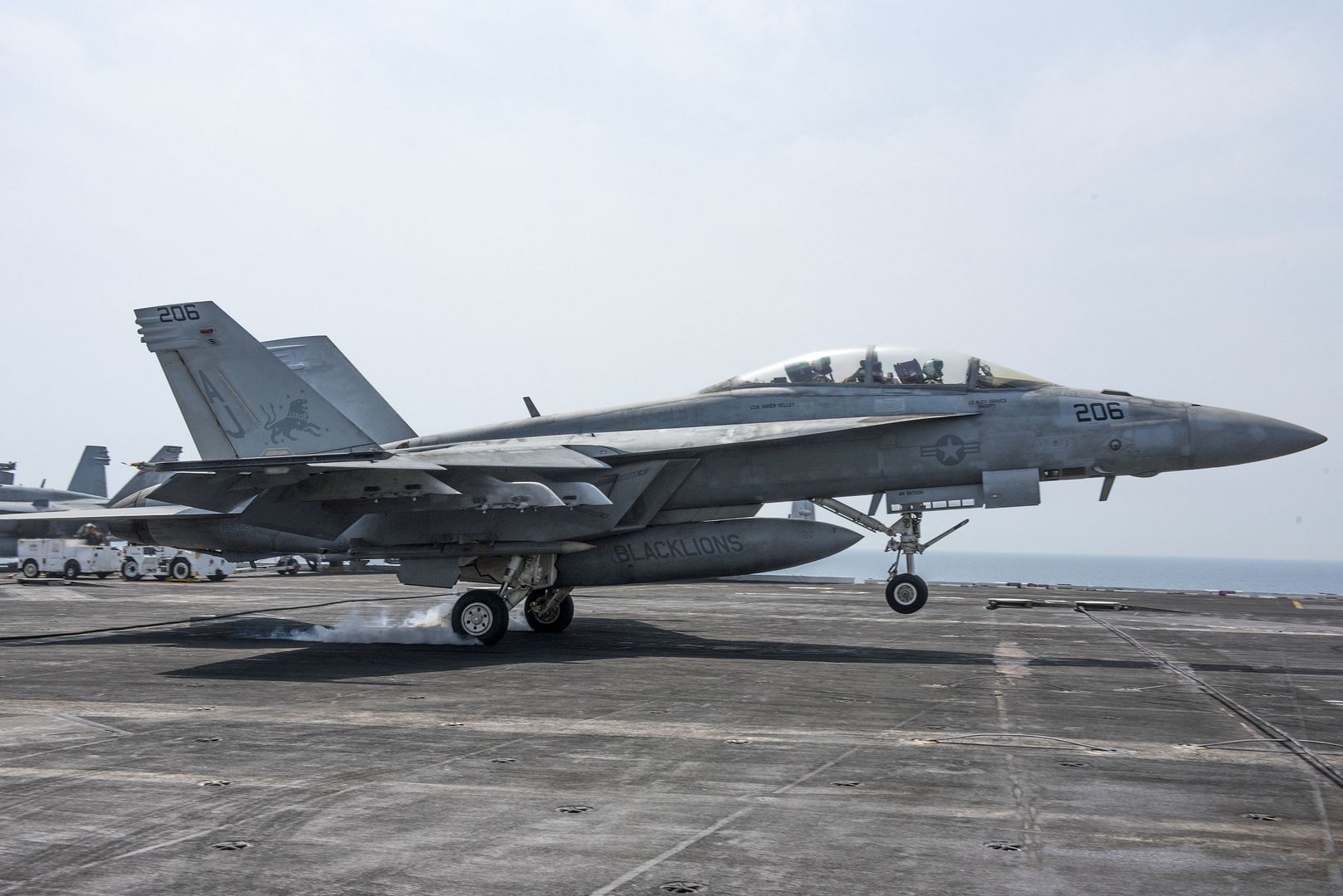
A Republic of Korea Air Force F-15K Slam Eagles from the 11th Fighter Squadron, Daegu Air Base, ROK, takes off during Exercise MAX THUNDER 17 at Kunsan Air Base, Republic of Korea, April 27, 2017. In Max Thunder, U.S. and ROK air forces consistently train together to be ready around-the-clock to defend the Republic of Korea. The interoperability and trust developed between the allies in training is critical to ensure U.S and ROK are prepared for any challenge. (U.S. Air Force photo by Senior Airman Colville McFee/Released)
A U.S. Air Force F-16 Fighting Falcon from the 36th Fighter Squadron, Osan Air Base, Republic of Korea, takes off during Exercise MAX THUNDER 17 at Kunsan Air Base, Republic of Korea, April 27, 2017. In Max Thunder, U.S. and ROK air forces consistently train together to be ready around-the-clock to defend the Republic of Korea. The interoperability and trust developed between the allies in training is critical to ensure U.S. and ROK are prepared for any challenge. (U.S. Air Force photo by Senior Airman Colville McFee/Released)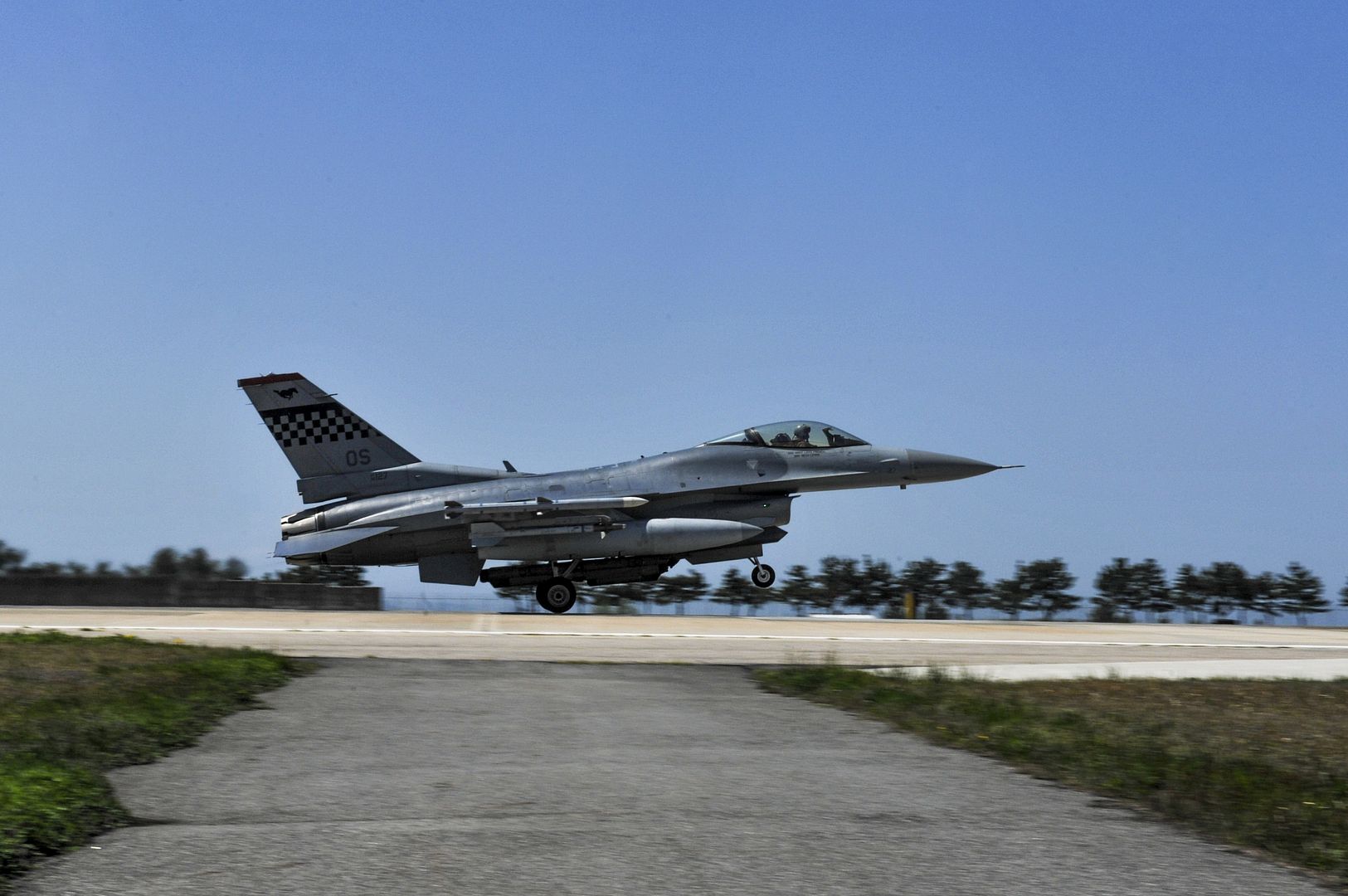
A Republic of Korea Air Force F-15K Slam Eagles from the 11th Fighter Squadron, Daegu Air Base, ROK, takes off during Exercise MAX THUNDER 17 at Kunsan Air Base, Republic of Korea, April 27, 2017. In Max Thunder, U.S. and ROK air forces consistently train together to be ready around-the-clock to defend the Republic of Korea. The interoperability and trust developed between the allies in training is critical to ensure U.S. and ROK are prepared for any challenge. (U.S. Air Force photo by Senior Airman Colville McFee/Released)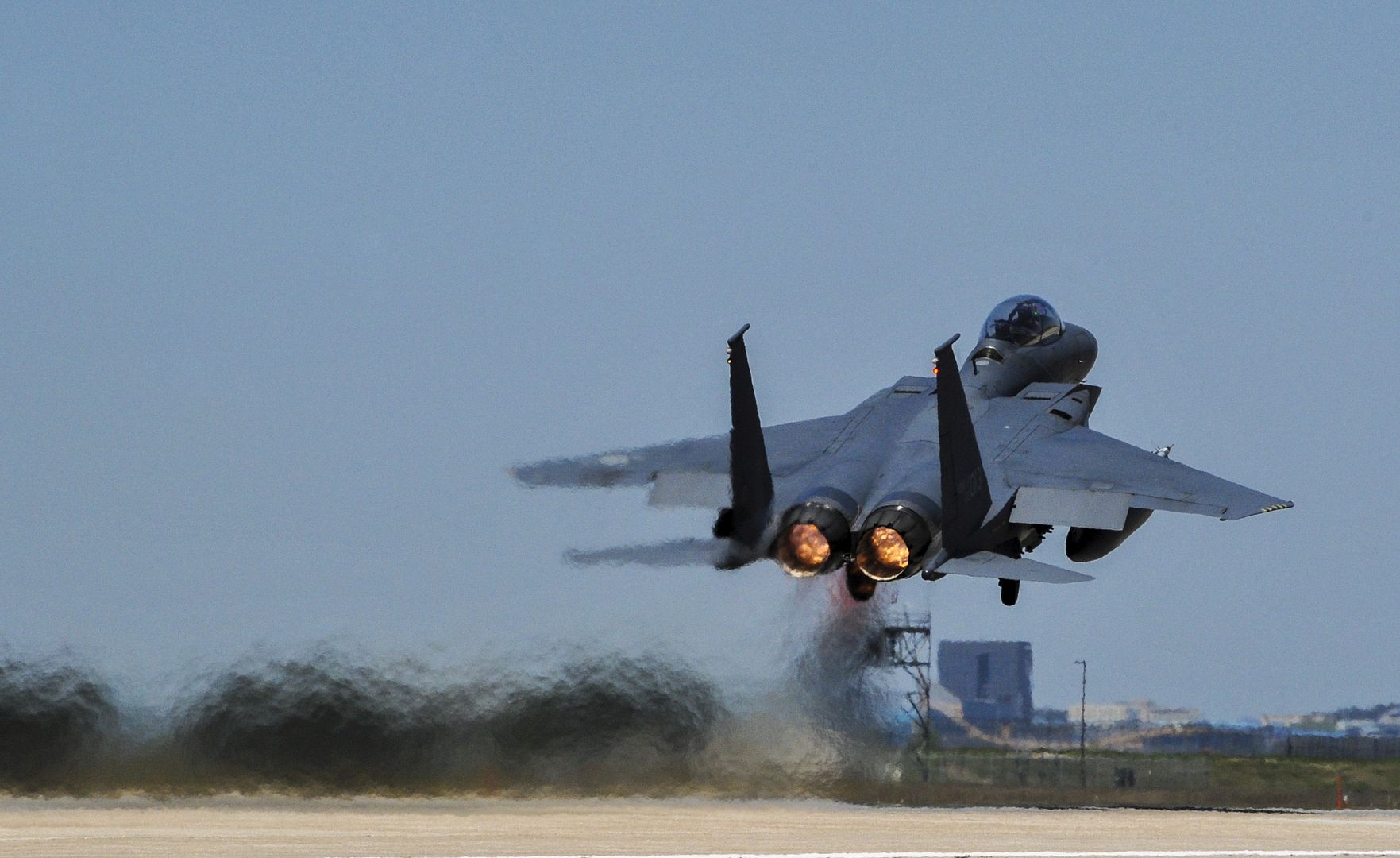
A Polish air force pilot performs preflight checks in an F-16 Fighting Falcon before taxiing for a mission at the 407th Air Expeditionary Group, April 24, 2017. The Polish Airmen are part of the 60-nation coalition force supporting Operation Inherent Resolve in the fight against ISIS. (U.S. Air Force photo/Master Sgt. Benjamin Wilson)(Released)
An F-15C Eagle from the 67th Fighter Squadron taxis via the flightline on April 25, 2017, at Kadena Air Base, Japan. The Eagle is an all-weather, maneuverable, tactical fighter designed to gain and maintain air supremacy over the battlefield. (U.S. Air Force photo's by Senior Airman Nick Emerick)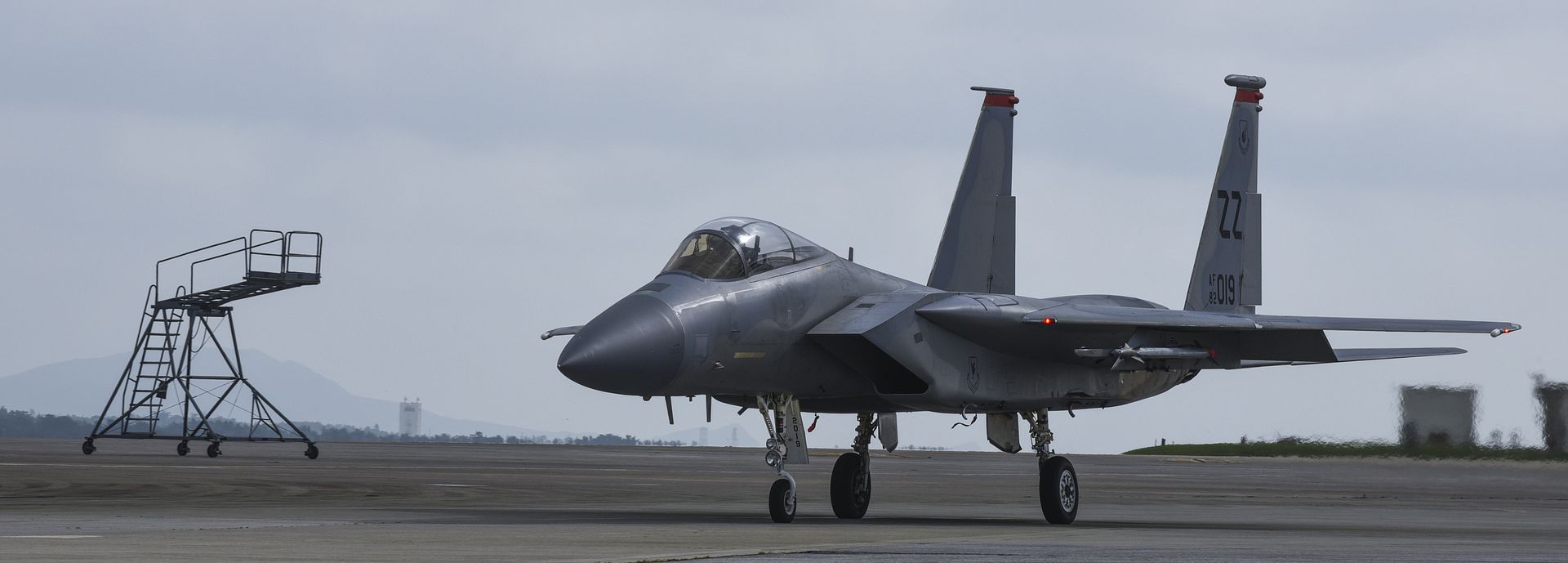


Twelve F-15C Eagles from the 122nd Expeditionary Fighter Squadron arrived at Graf Ignatievo Air Base, Bulgaria, April 26. Along with the aircraft, approximately 300 Airmen from the Louisiana and Florida Air National Guard are deployed to Europe as part of a Theater Security Package in support of Operation Atlantic Resolve with the goal of strengthening interoperability and enhancing regional security. (U.S. Air Force photo's by Tech. Sgt. Staci Miller)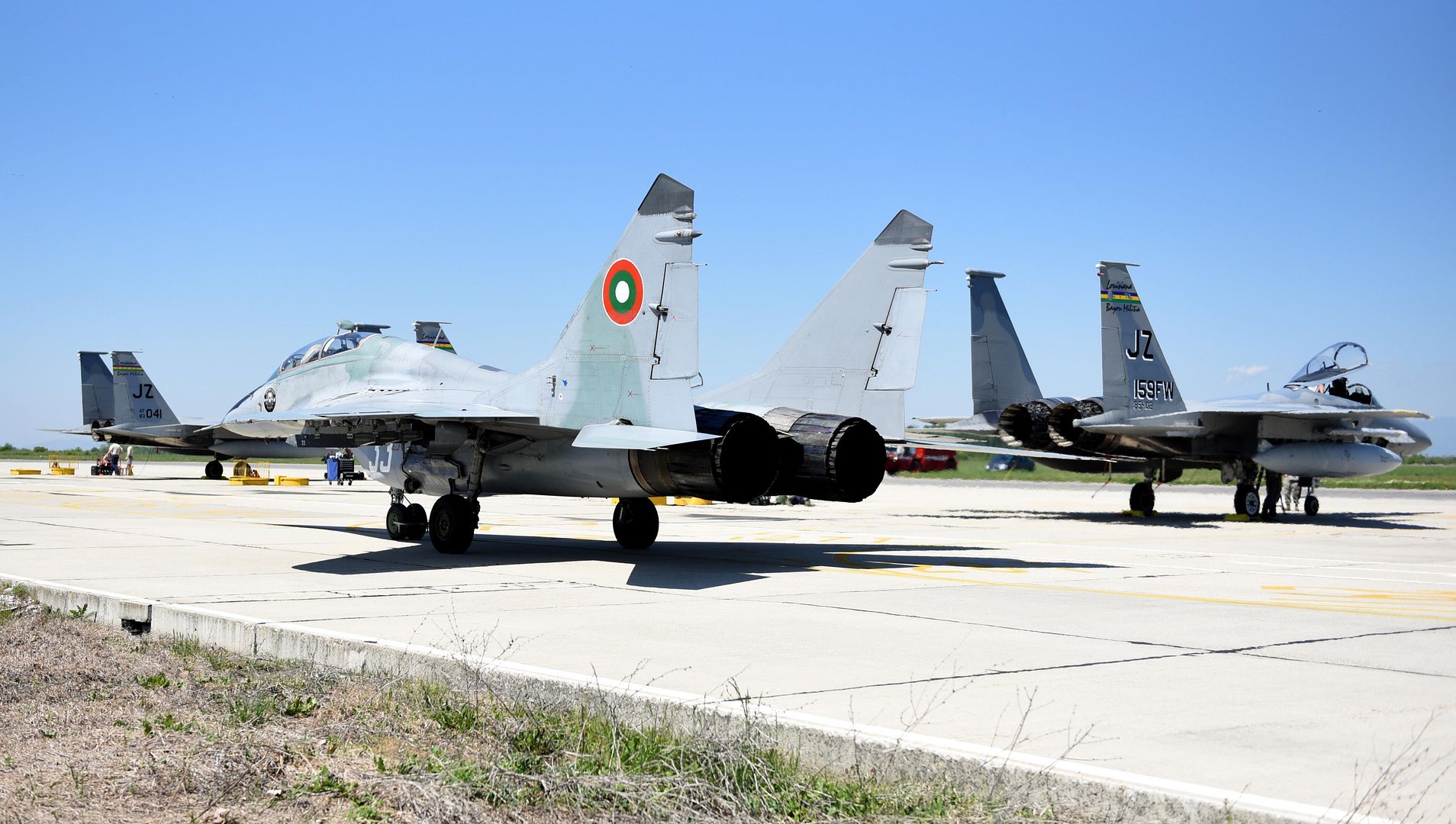

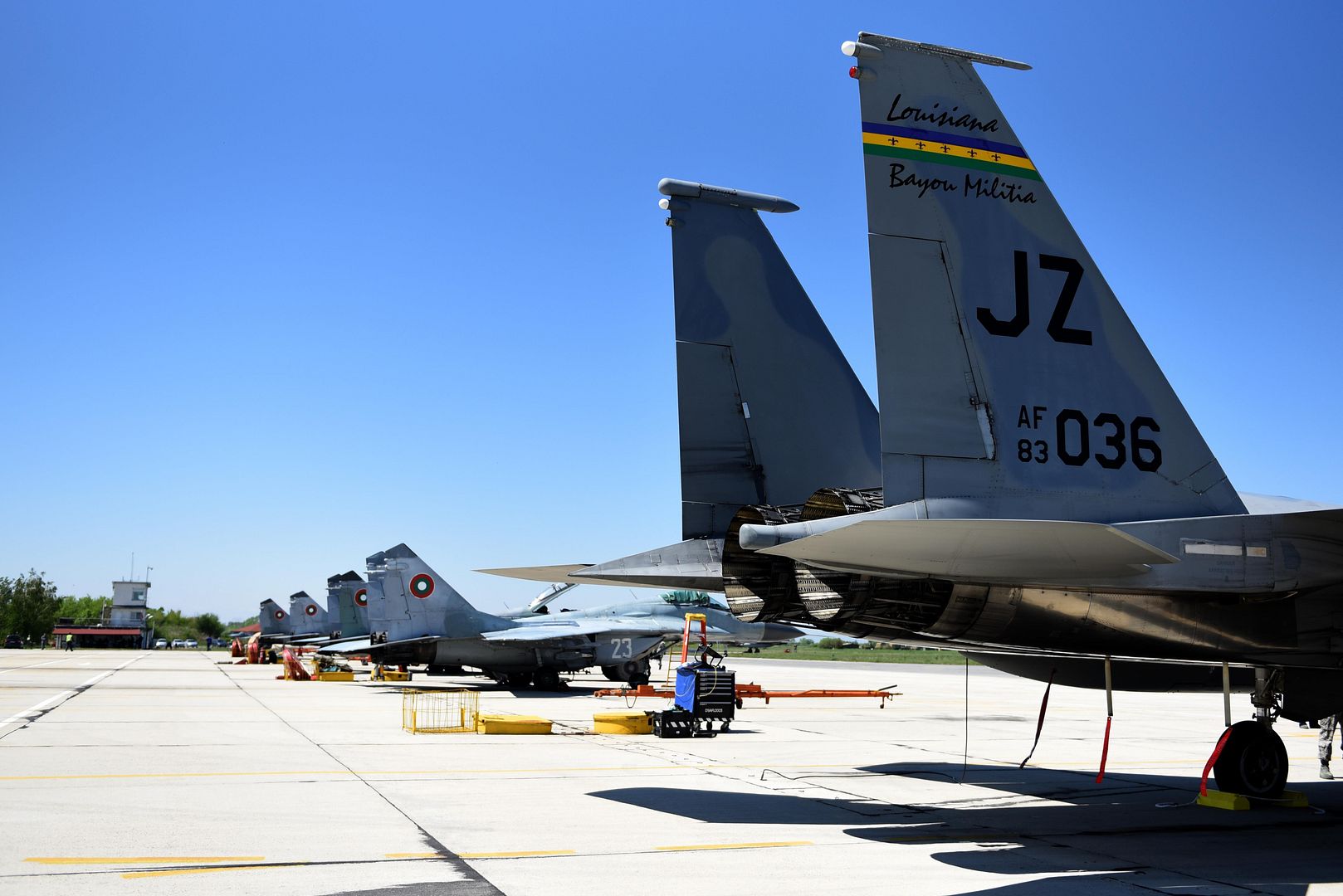
Members from the 4th Equipment Maintenance Squadron corrosion control shop guide a freshly painted North Carolina Forest Service T-34C Turbo Mentor aircraft out of the 4th Equipment Maintenance Squadron corrosion control shop, April 26, 2017, at Seymour Johnson Air Force Base, North Carolina. The aircraft is used as the lead plane to guide tankers over fires so the tankers can drop suppressant on the fire. (U.S. Air Force photo by Airman 1st Class Ashley Williamson)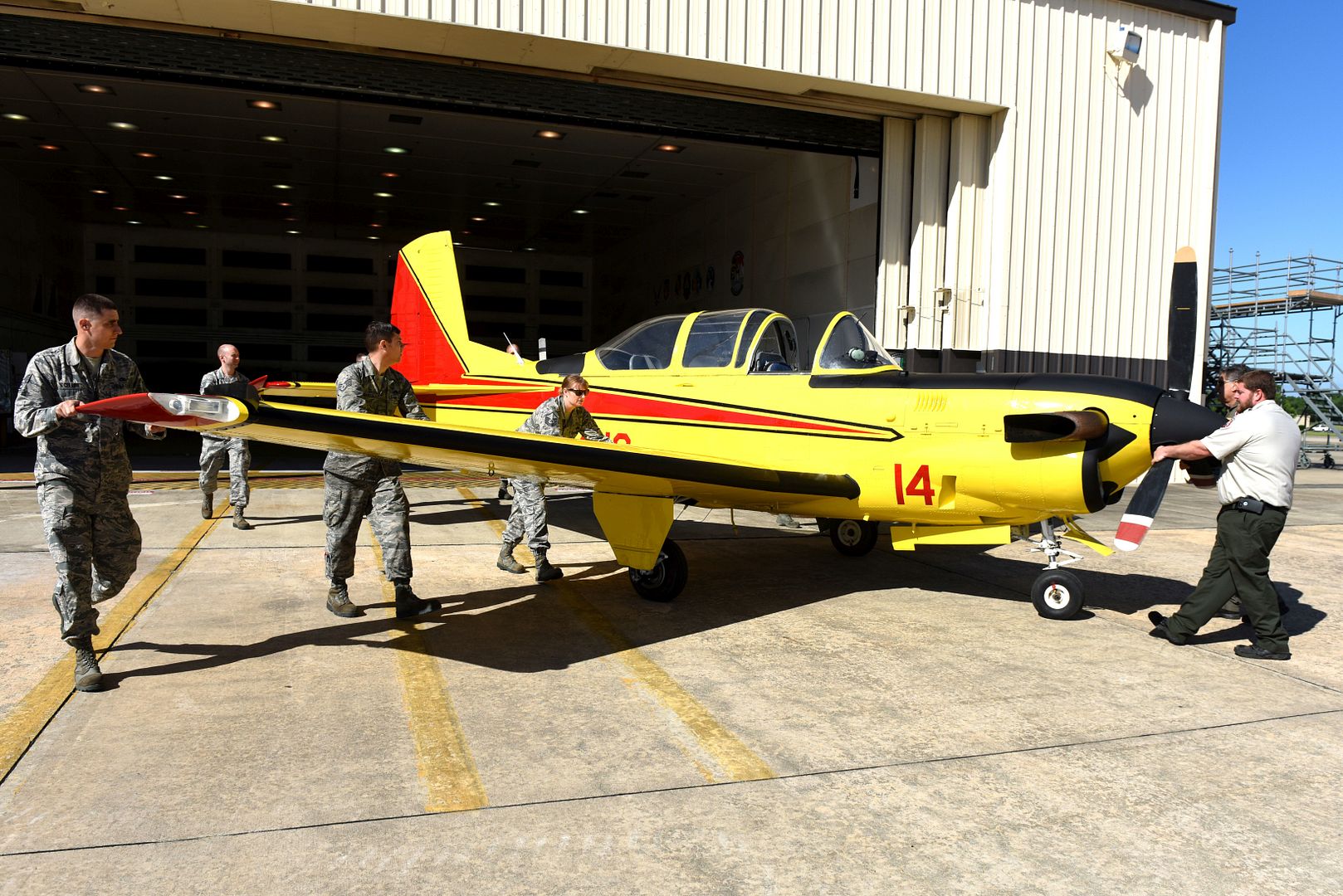
April 28, 2017 Toronto Commercial Aircraft, Press Release
Bombardier Commercial Aircraft confirms that Ilyushin Finance Co. (IFC) has converted an option on one Q400 aircraft to a firm order. The Moscow-based leasing company, now with two Q400 on firm order, has successfully concluded a leasing agreement with Jambojet Limited (Jambojet) of Kenya for both aircraft.
?This agreement for these next generation turboprops signifies a key development in IFC?s international leasing business,? said Alexander Rubtsov, Director General, IFC. ?The demand for high-performance turboprops, such as the Q400, continues to expand and we are pleased to enter into this new lease with Jambojet.?
Jambojet is expected to take delivery of the first leased Q400 aircraft in May 2017, and the second aircraft later this year. The delivery of these two aircraft will increase the fleet of Q Series turboprops in Africa to over 120 aircraft including about 70 Q400 aircraft.
?We are impressed with the level of professionalism that IFC exhibited throughout the process that led to this first agreement, and are delighted to have found a trusted and reliable partner to support our development plans,? said Willem Hondius, Chief Executive Officer, Jambojet. ?The Q400 aircraft?s performance has exceeded our expectations on all fronts. With its low operating costs and best-in-class passenger experience, the Q400 turboprop has helped us optimize and expand our operations and is undeniably the backbone of Jambojet?s growth strategy.?
?We are proud of the Q400 aircraft continued success in Africa. Jambojet?s operations illustrate the capabilities and qualities of the Q400 aircraft that make it uniquely suitable for the region,? said Jean-Paul Boutibou, Vice President, Sales, Middle-East and Africa at Bombardier Commercial Aircraft. ?The Q400 is a valuable asset for owners and operators, and we are confident that IFC and Jambojet will find many more opportunities to mutually benefit from the aircraft?s outstanding economics and performance.?
Bombardier has recorded firm orders for a total of 573 Q400 aircraft.
About Jambojet
Jambojet, a low cost airline, operates on domestic routes from Nairobi to Mombasa, Eldoret, Kisumu, Lamu, Malindi and Ukunda (Diani). It set a regional record in 2016 by handling over 1,000,000 customers in less than two years of operation. This number is set to grow as more Kenyans and foreigners appreciate the benefits of low cost flying. About 30% of the Jambojet customers are actually first time flyers.
Post a reply
- Go to Next topic
- Go to Welcome
- Go to Introduce Yourself
- Go to General Discussion
- Go to Screenshots, Images and Videos
- Go to Off topic
- Go to Works in Progress
- Go to Skinning Tips / Tutorials
- Go to Skin Requests
- Go to IJAAF Library
- Go to Luftwaffe Library
- Go to RAF Library
- Go to USAAF / USN Library
- Go to Misc Library
- Go to The Ops Room
- Go to Made in Germany
- Go to Campaigns and Missions
- Go to Works in Progress
- Go to Juri's Air-Raid Shelter
- Go to Campaigns and Missions
- Go to Works in Progress
- Go to Skinpacks
- Go to External Projects Discussion
- Go to Books & Resources
